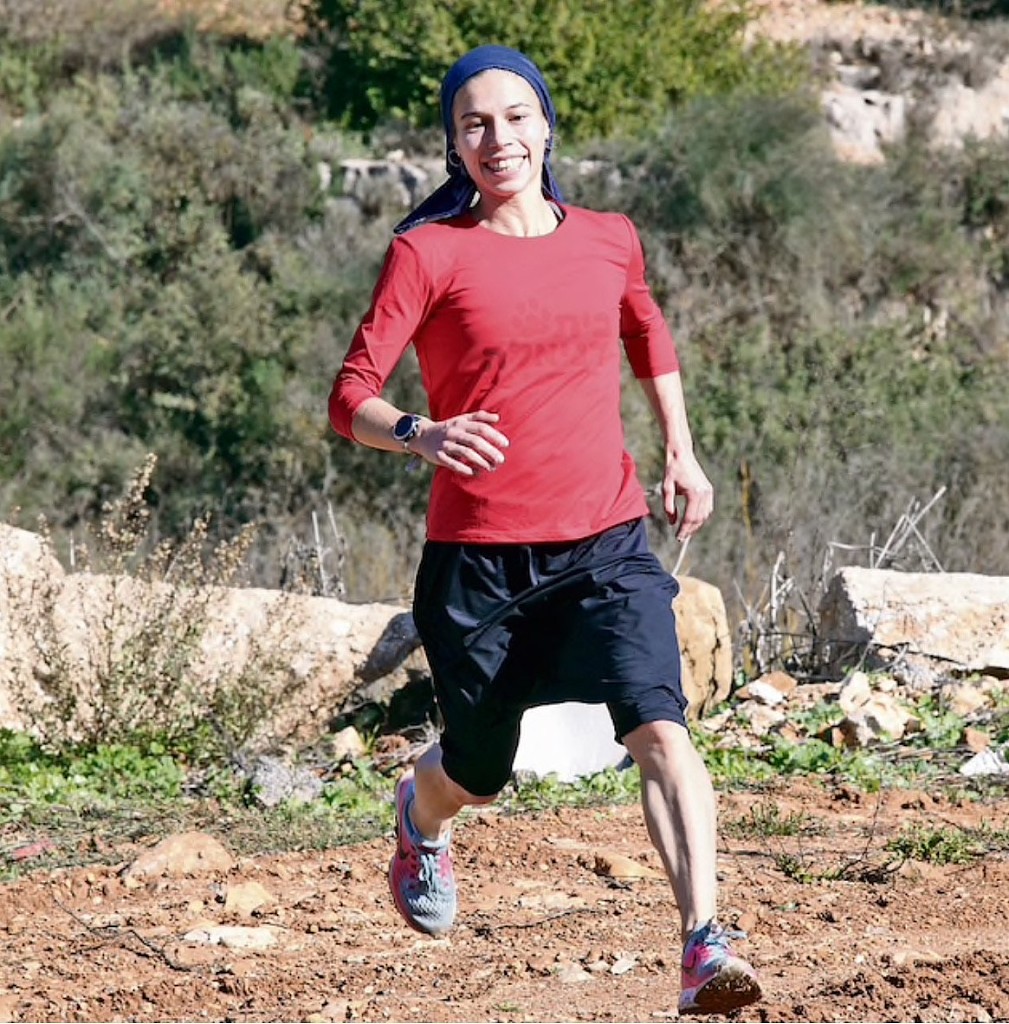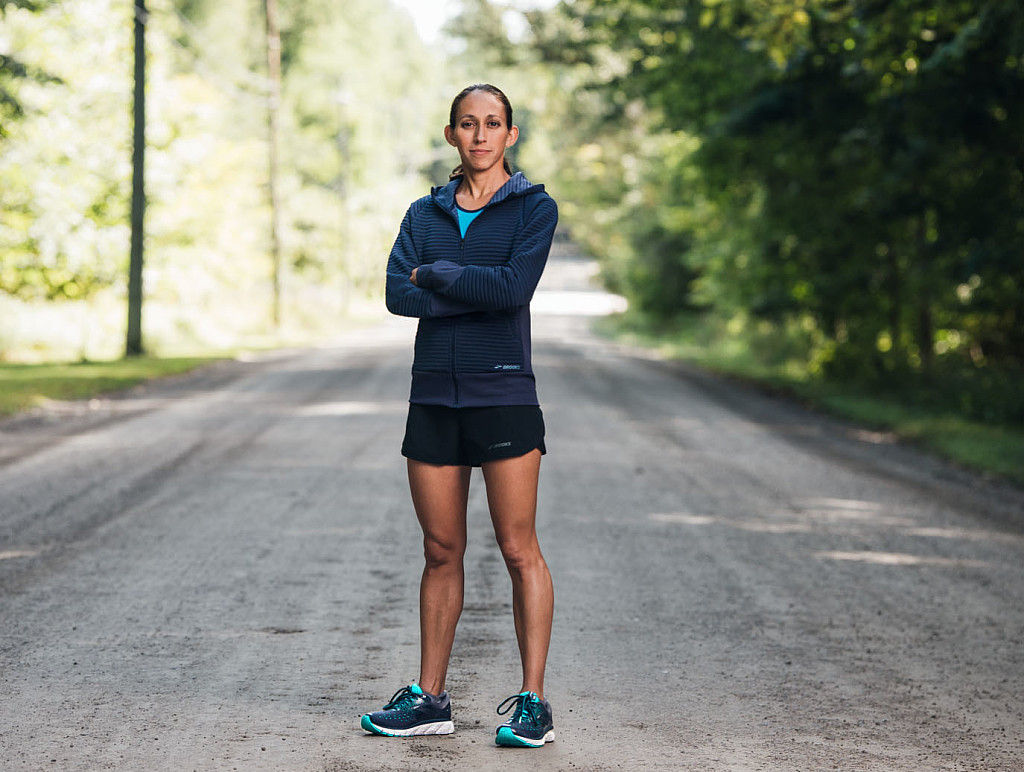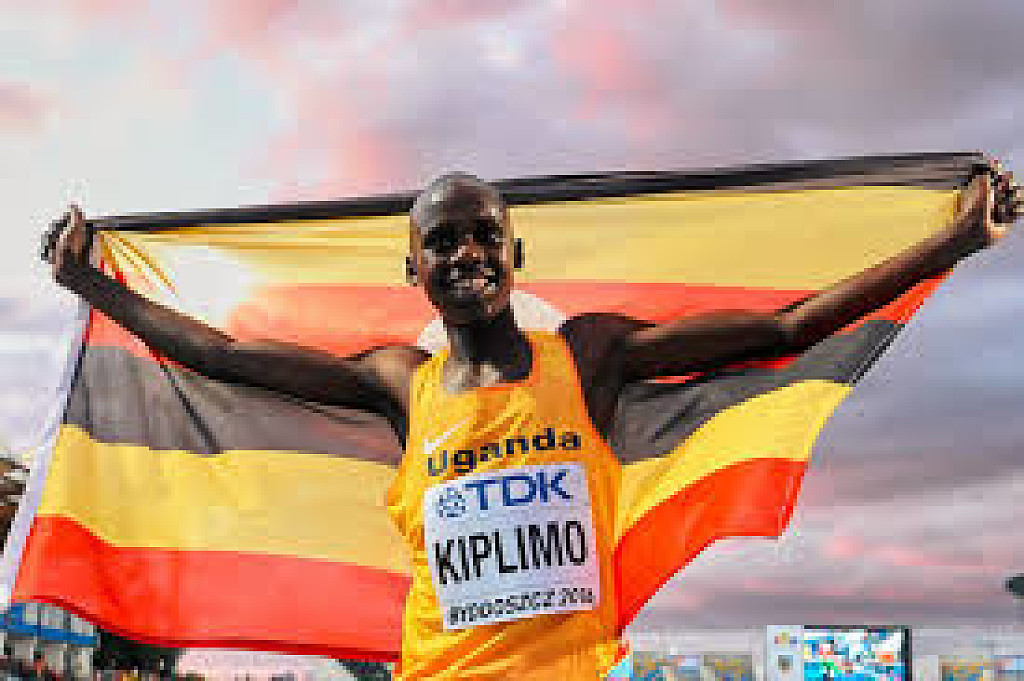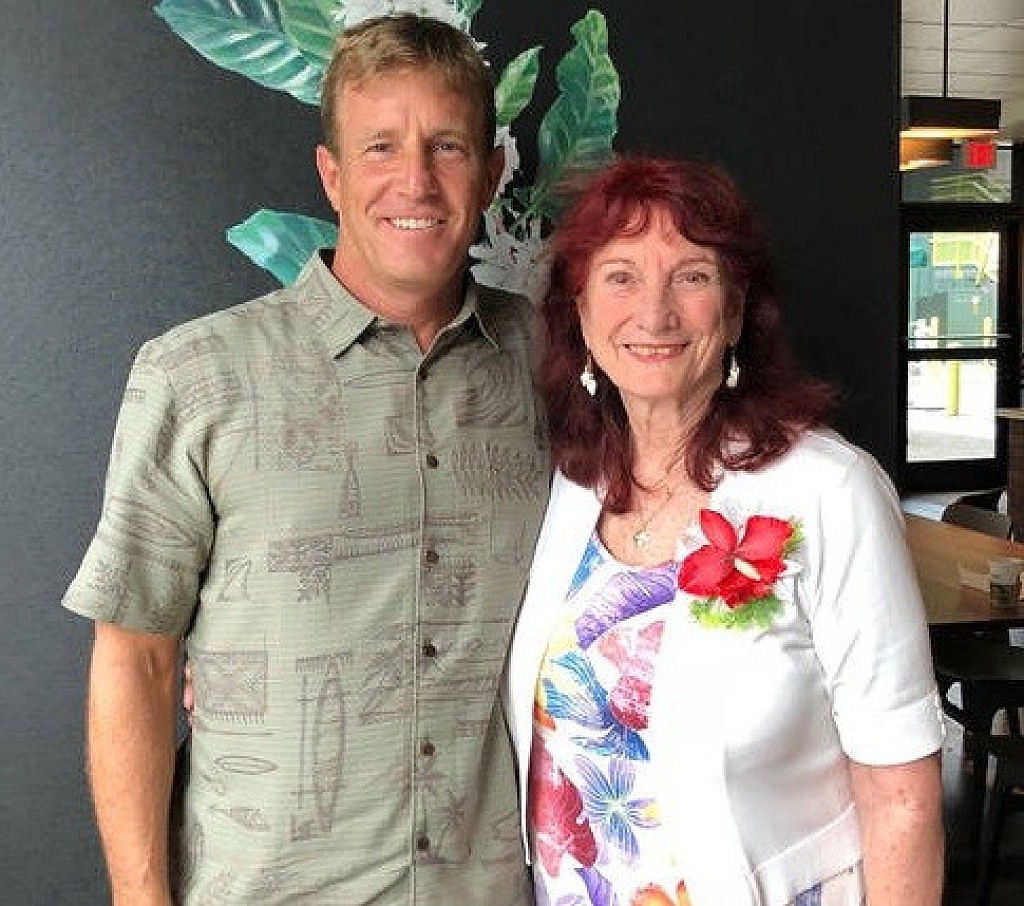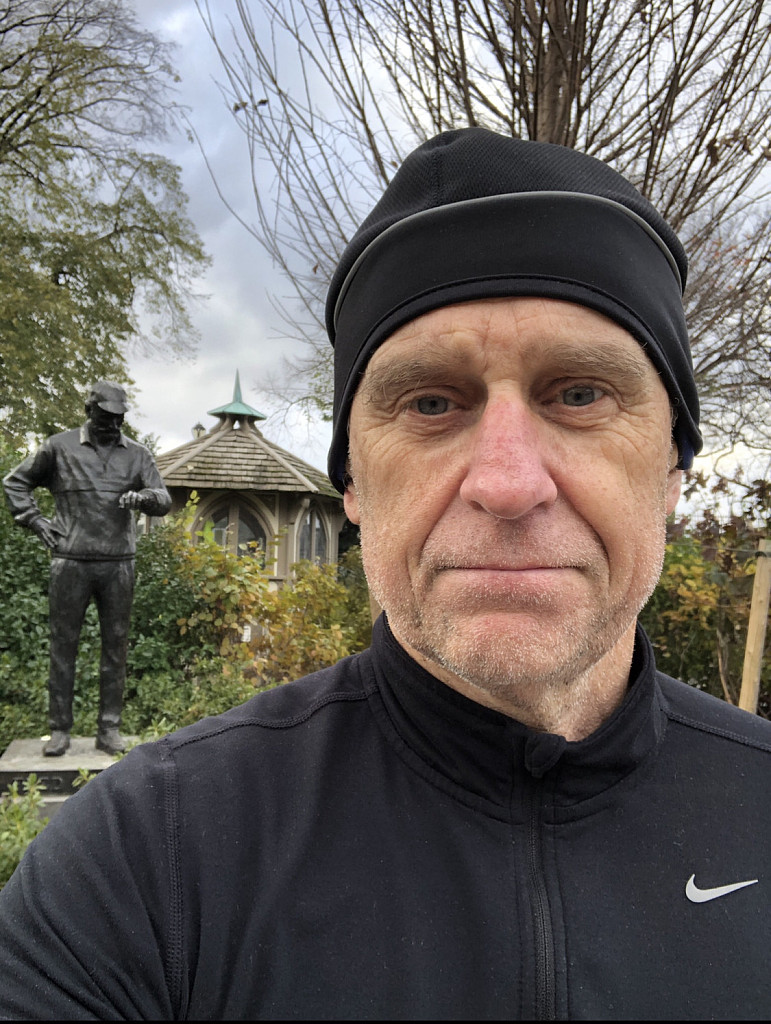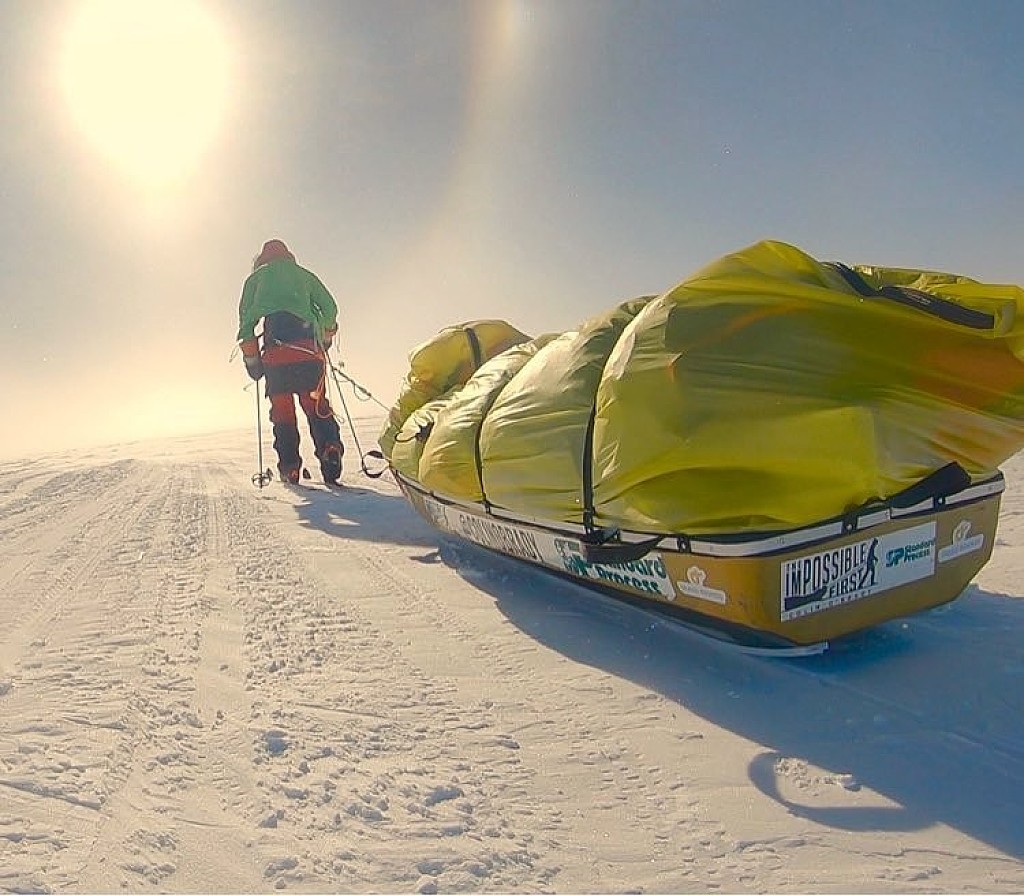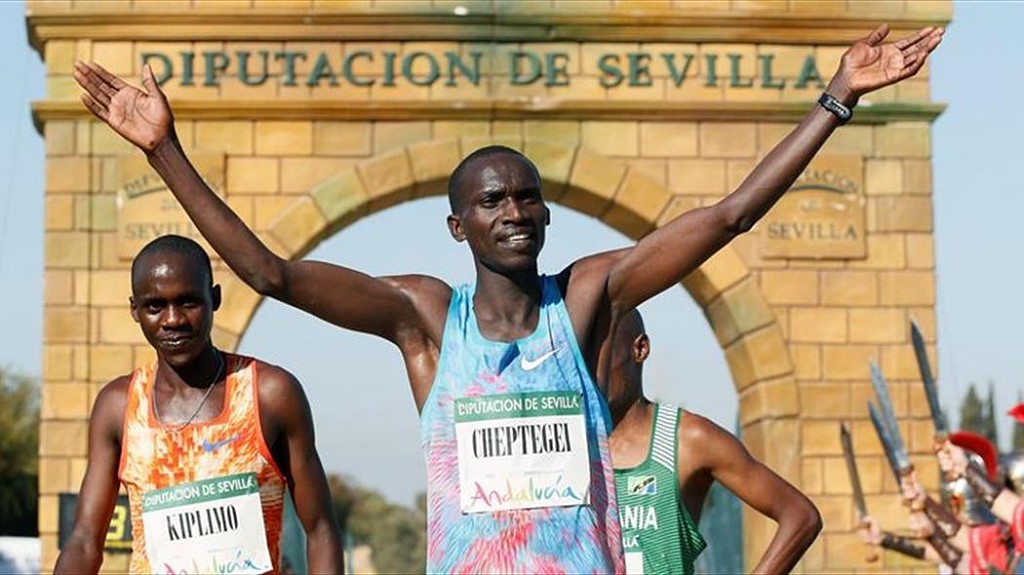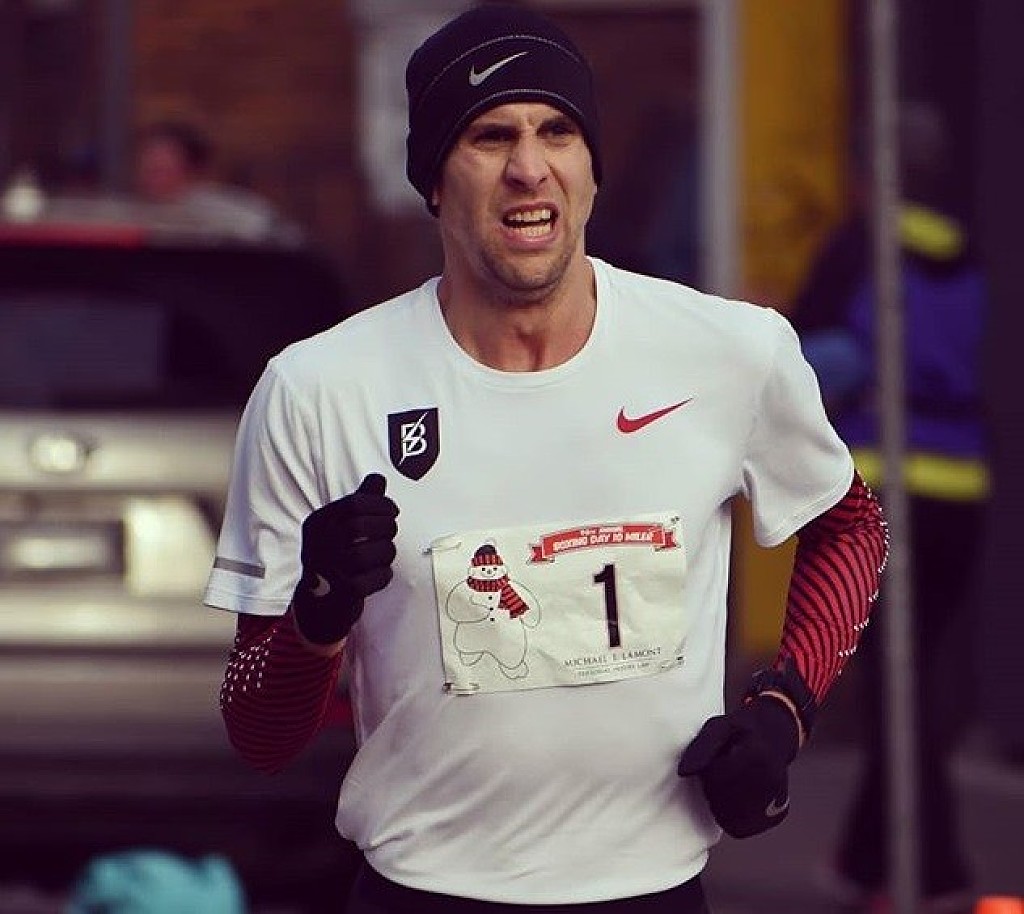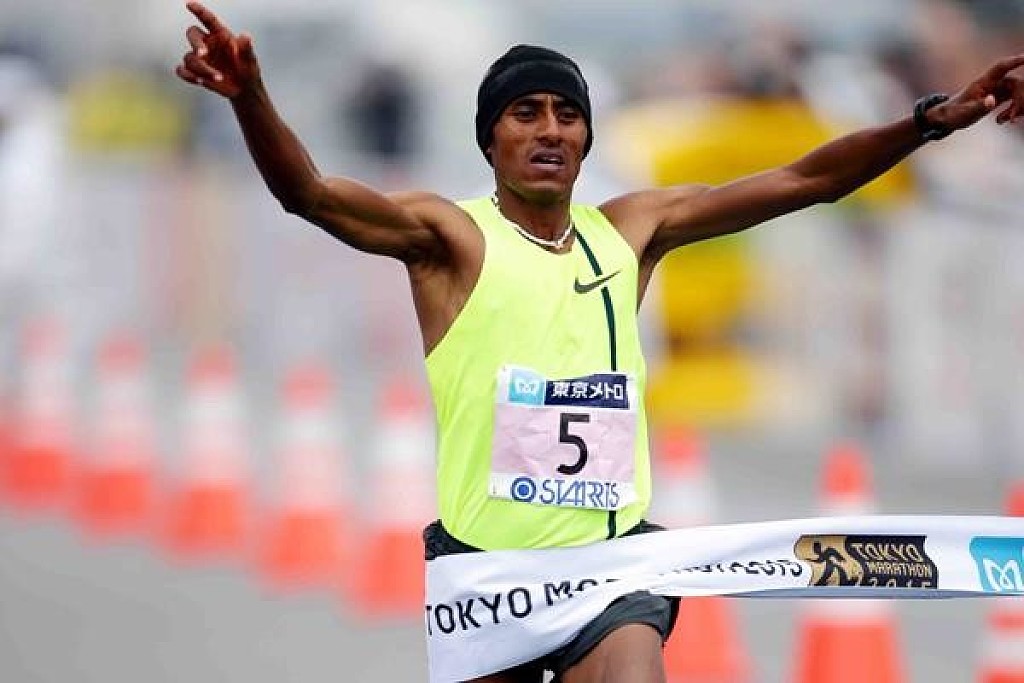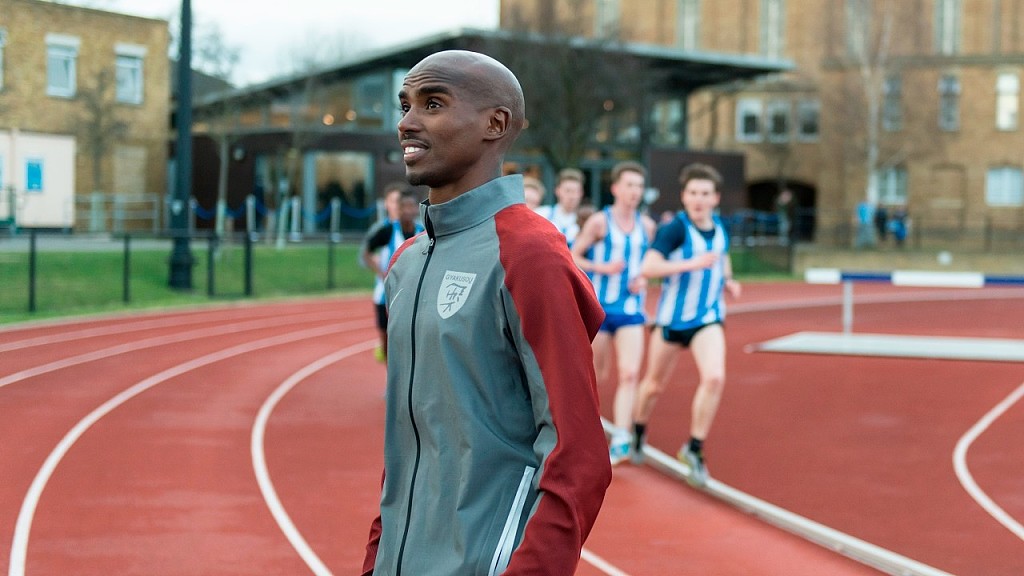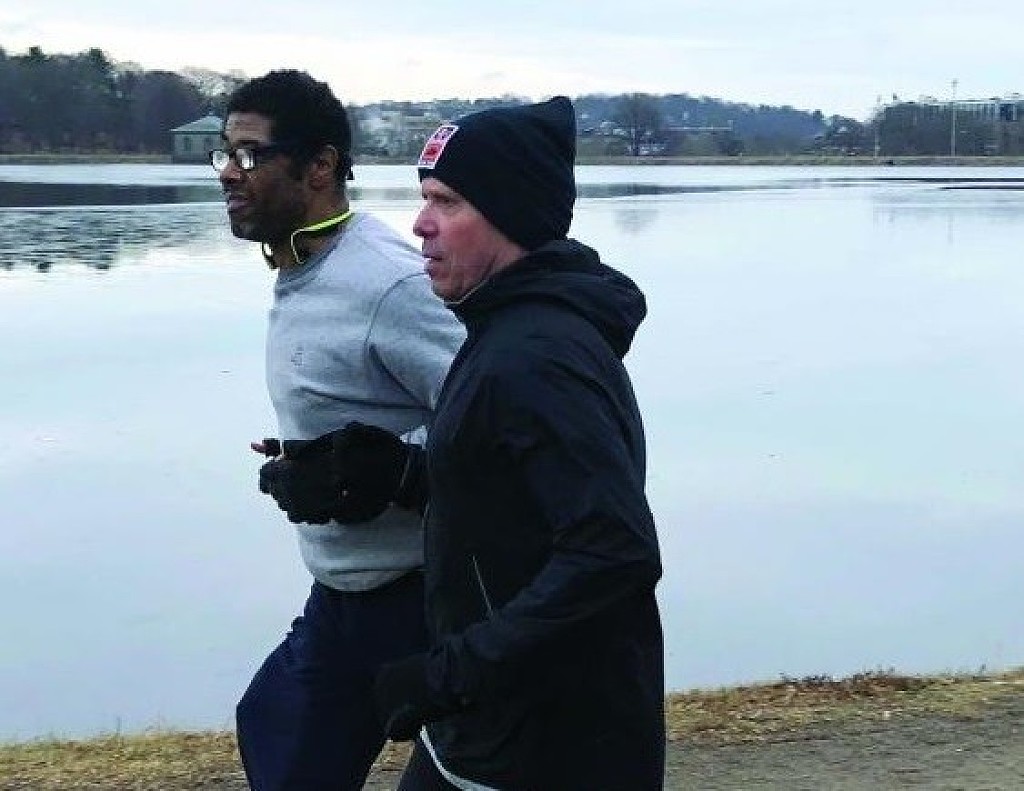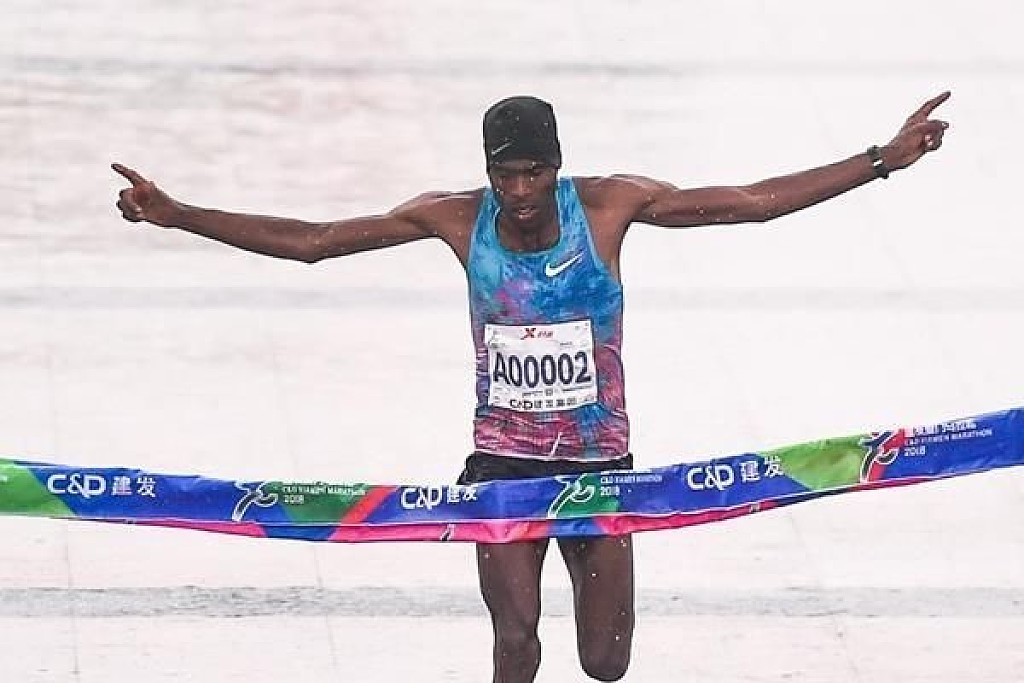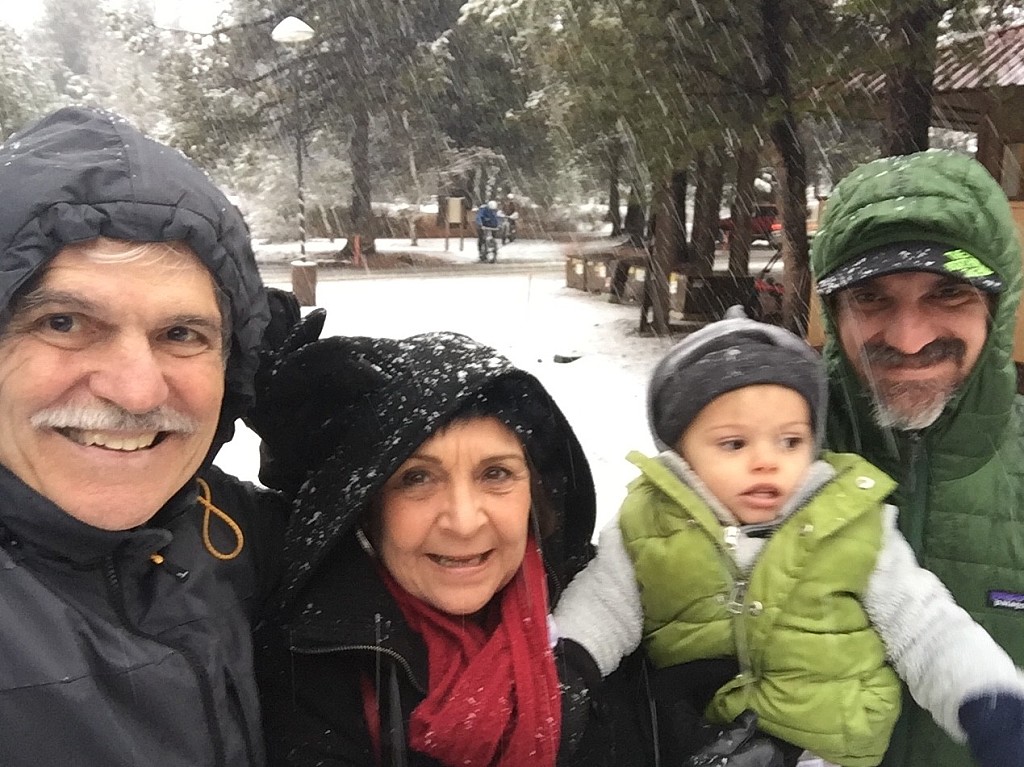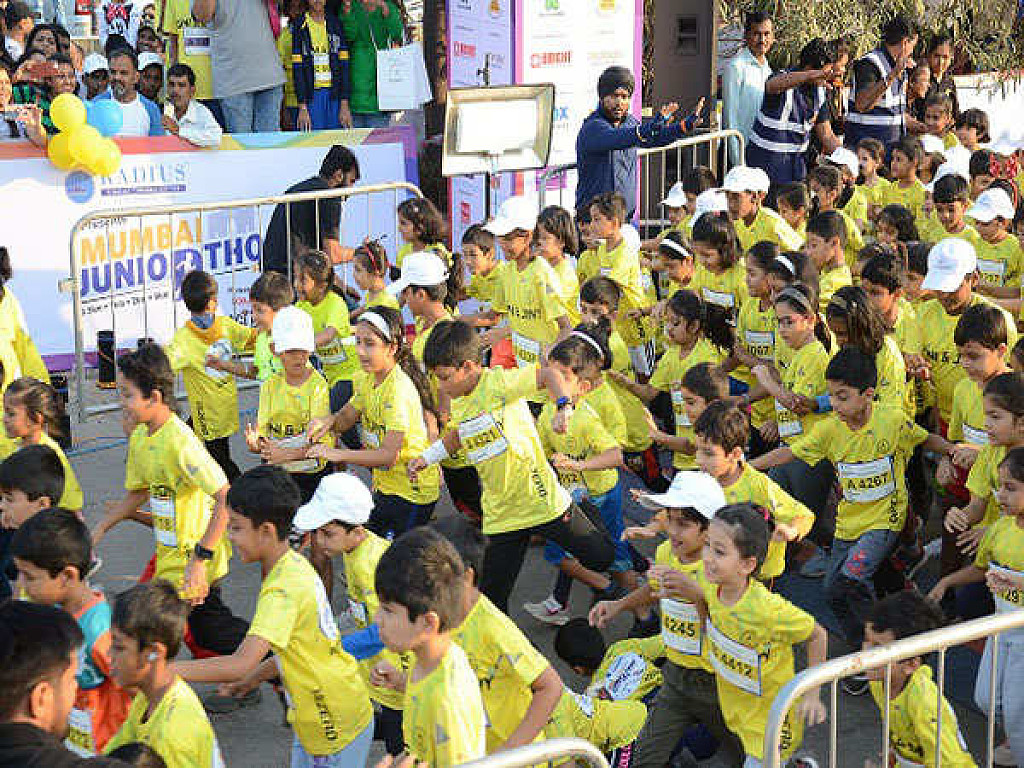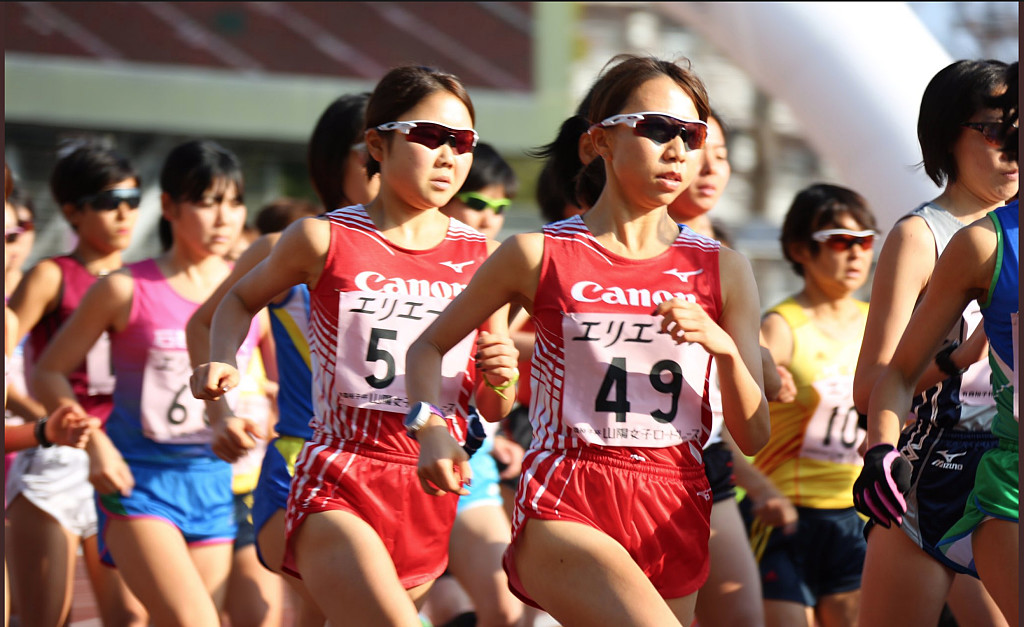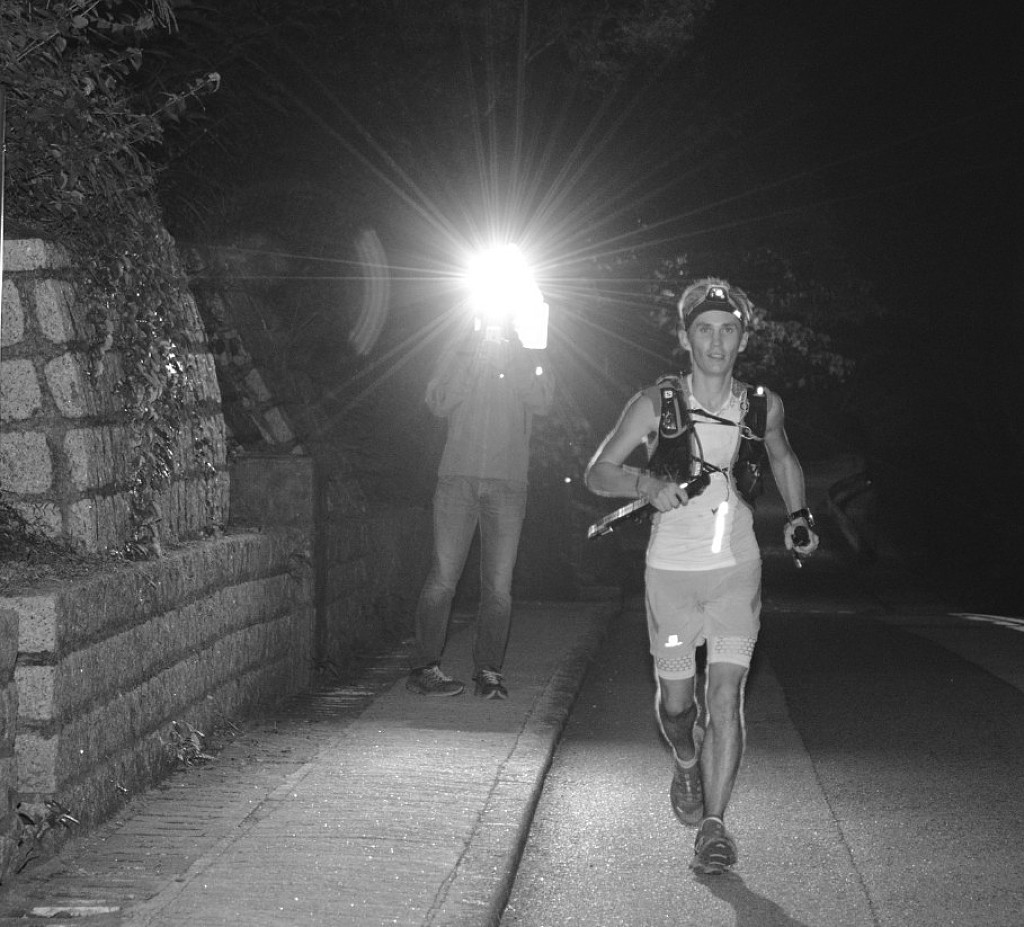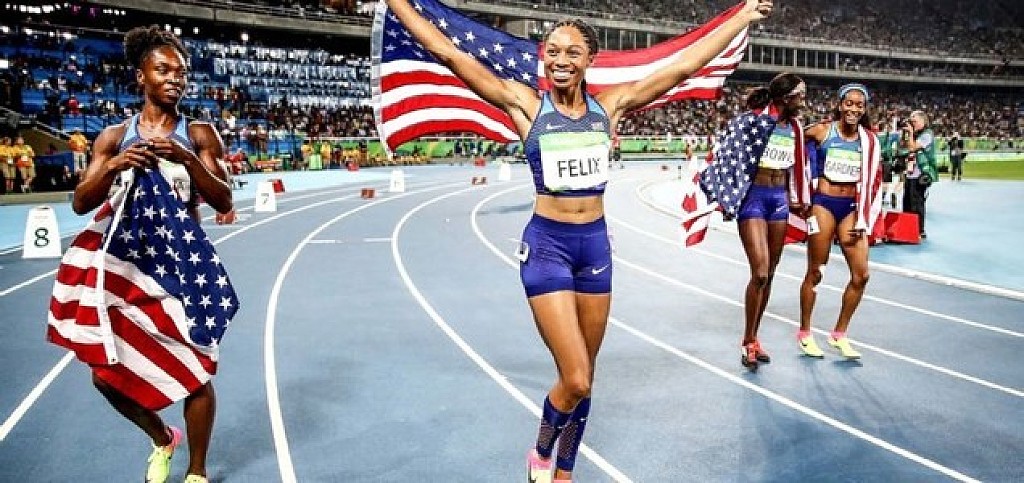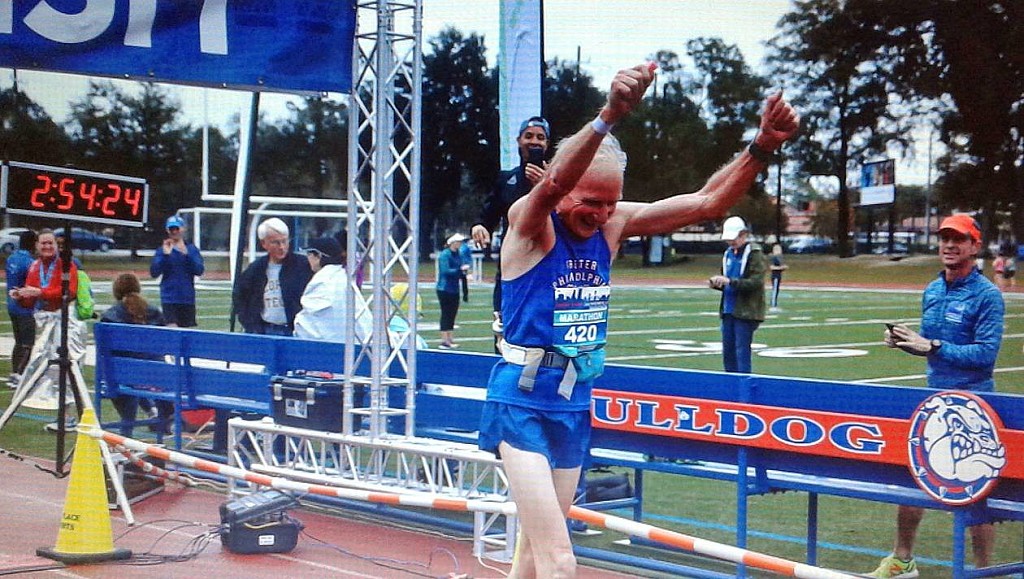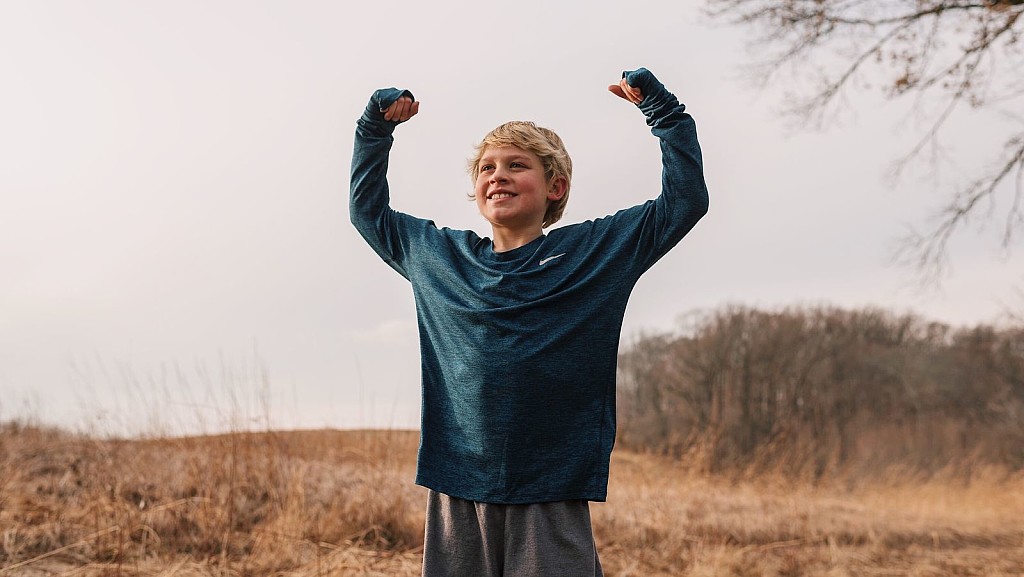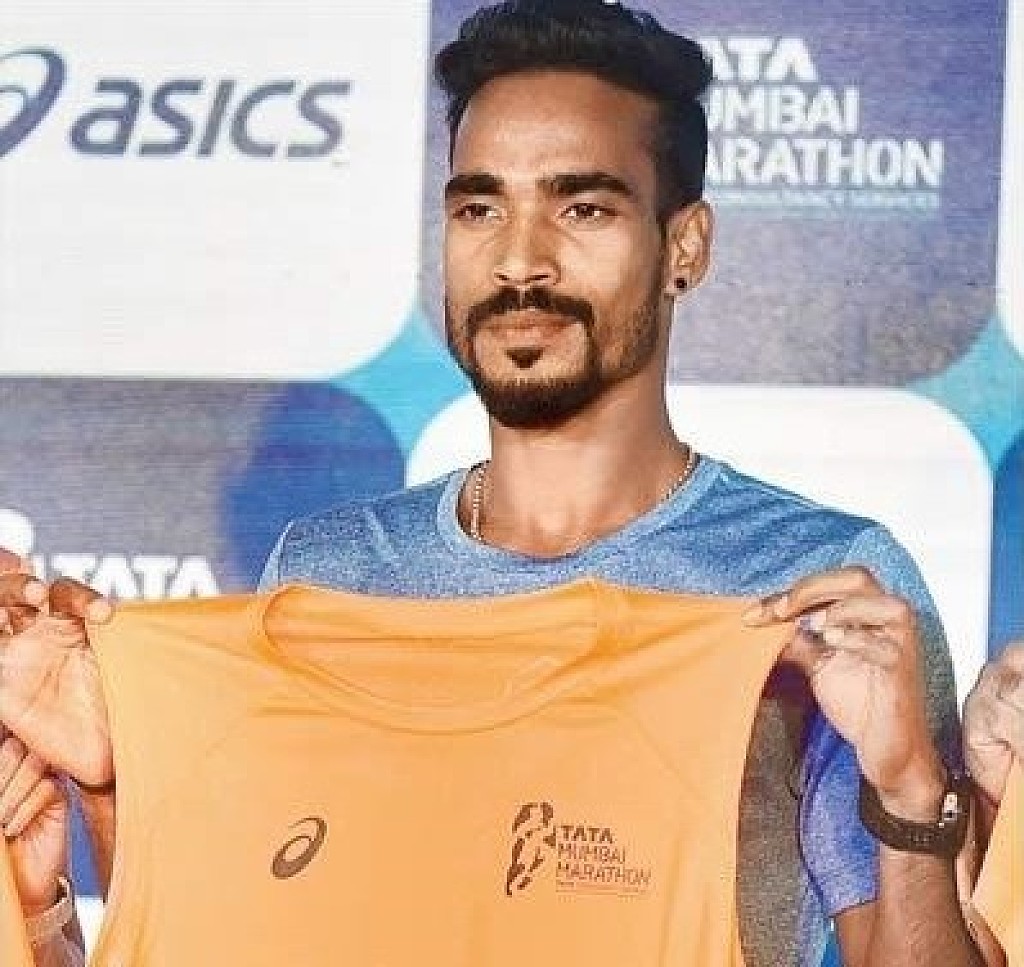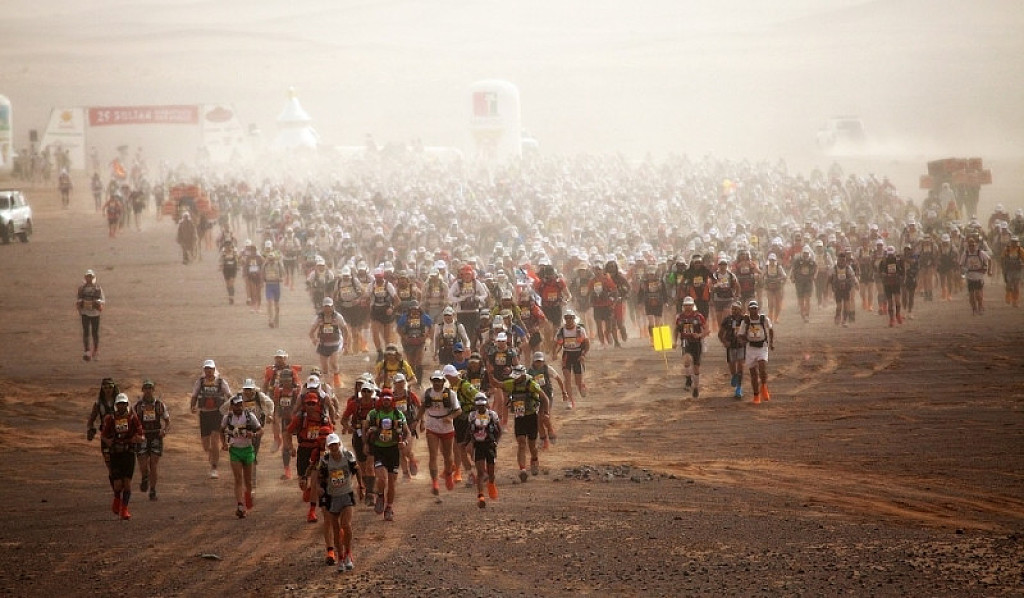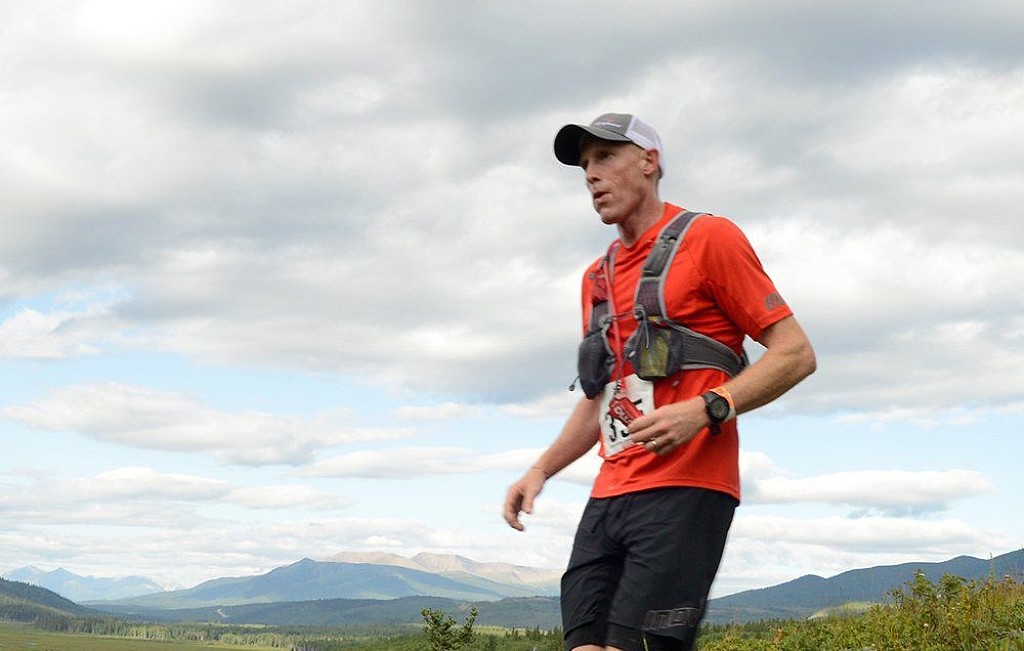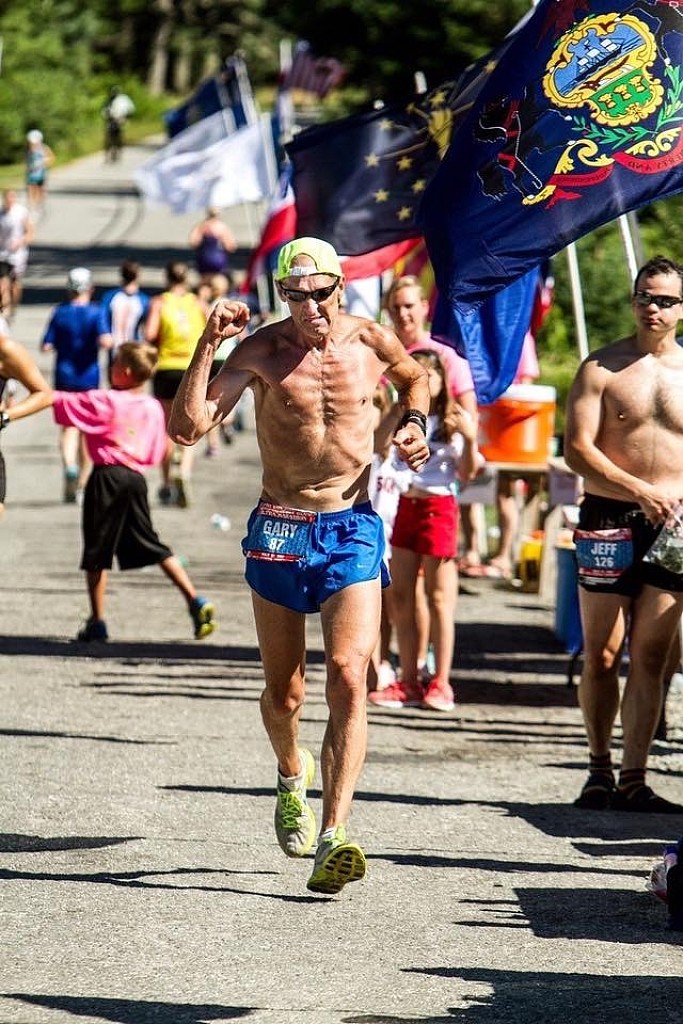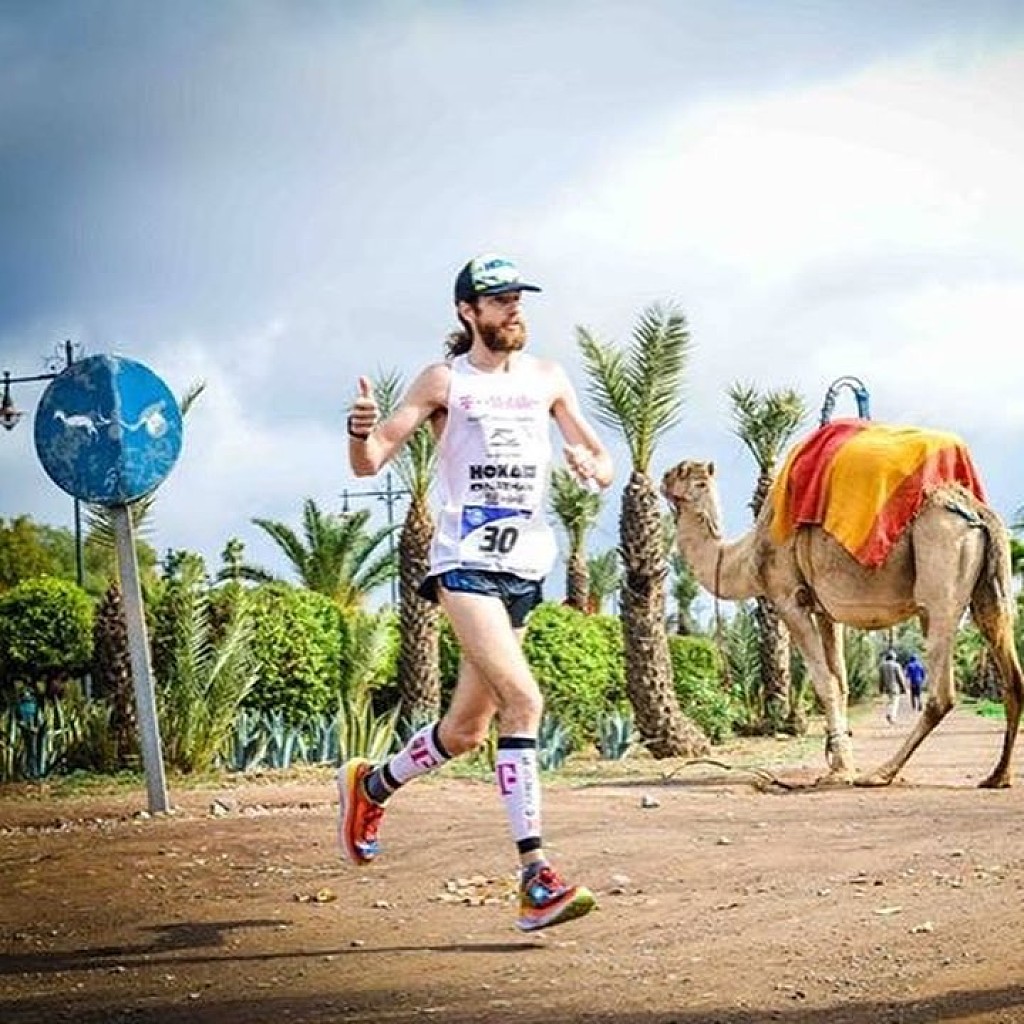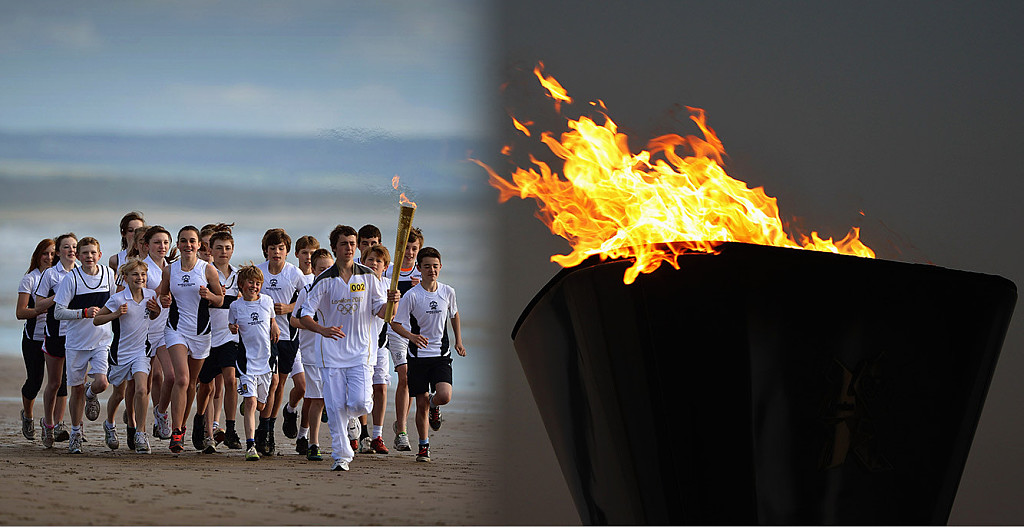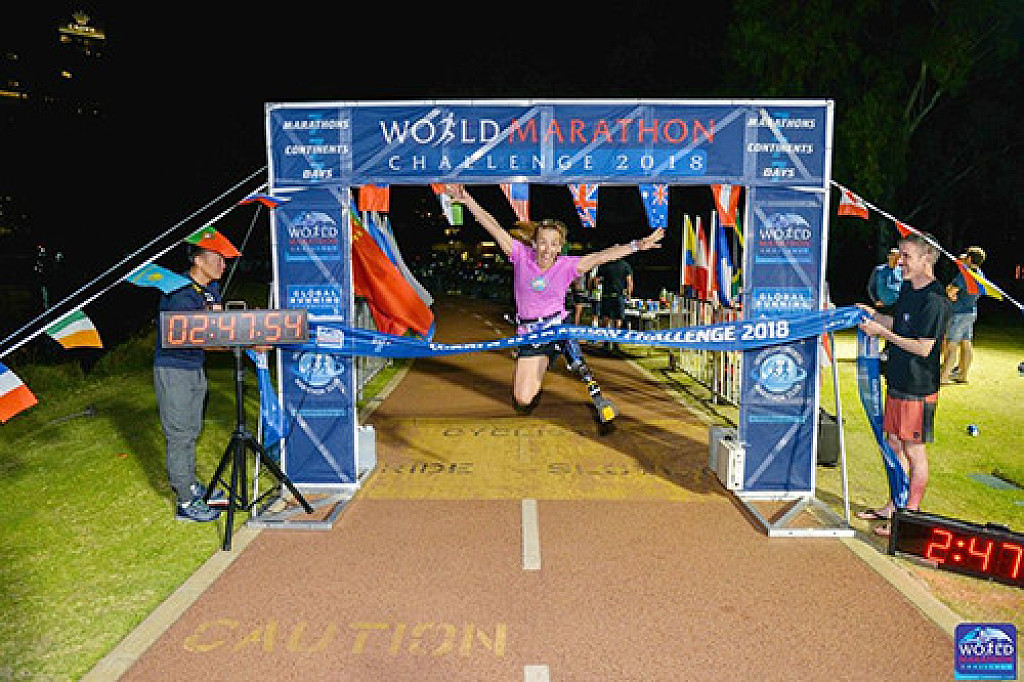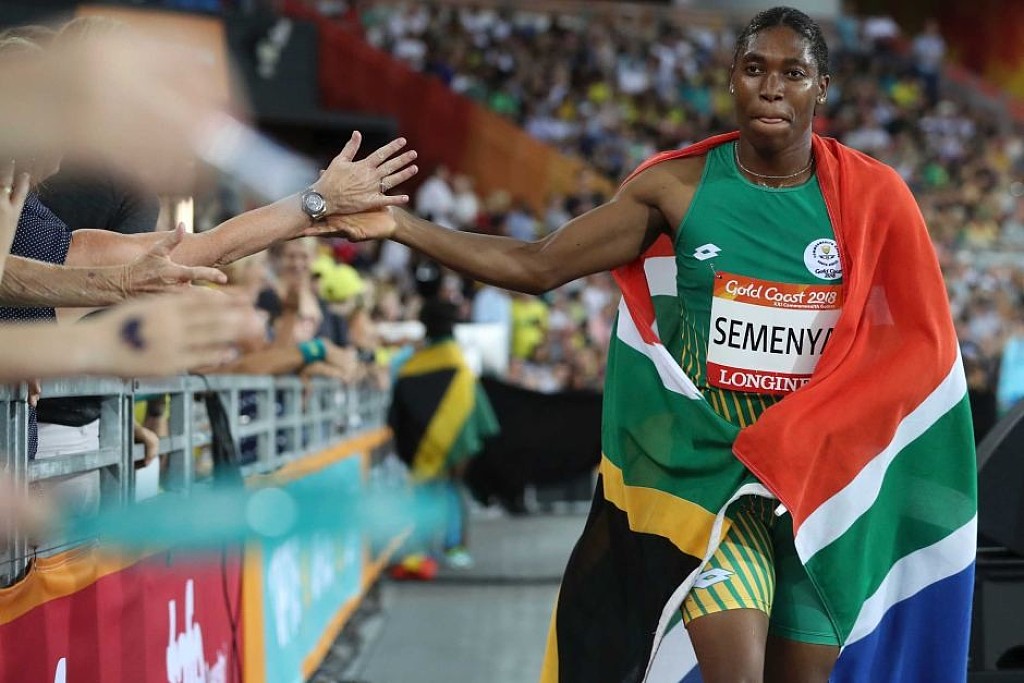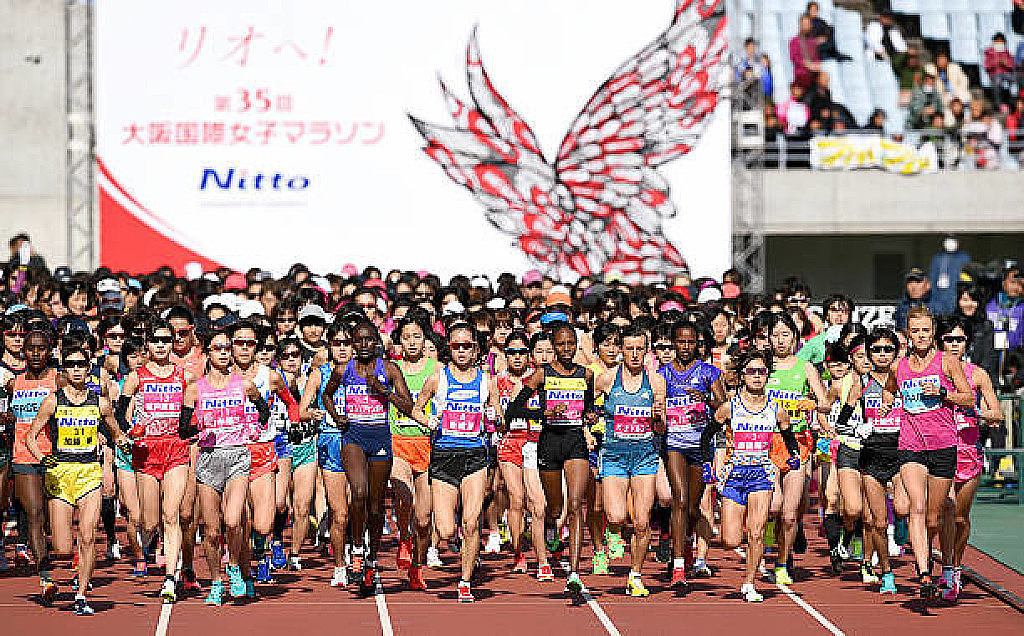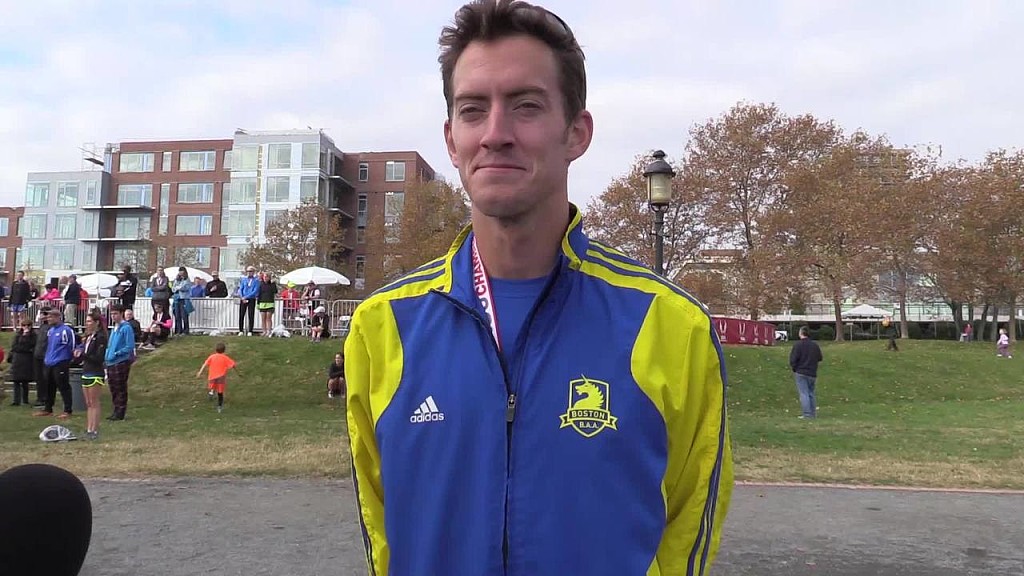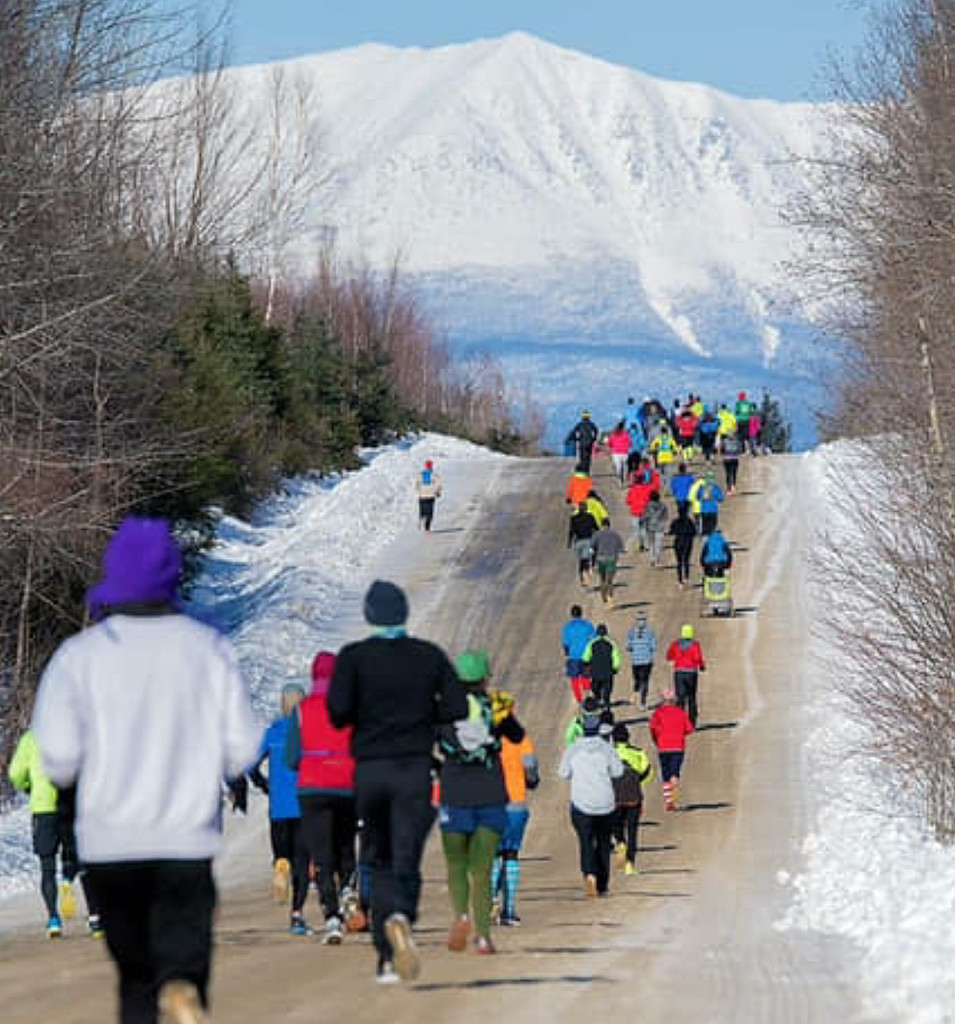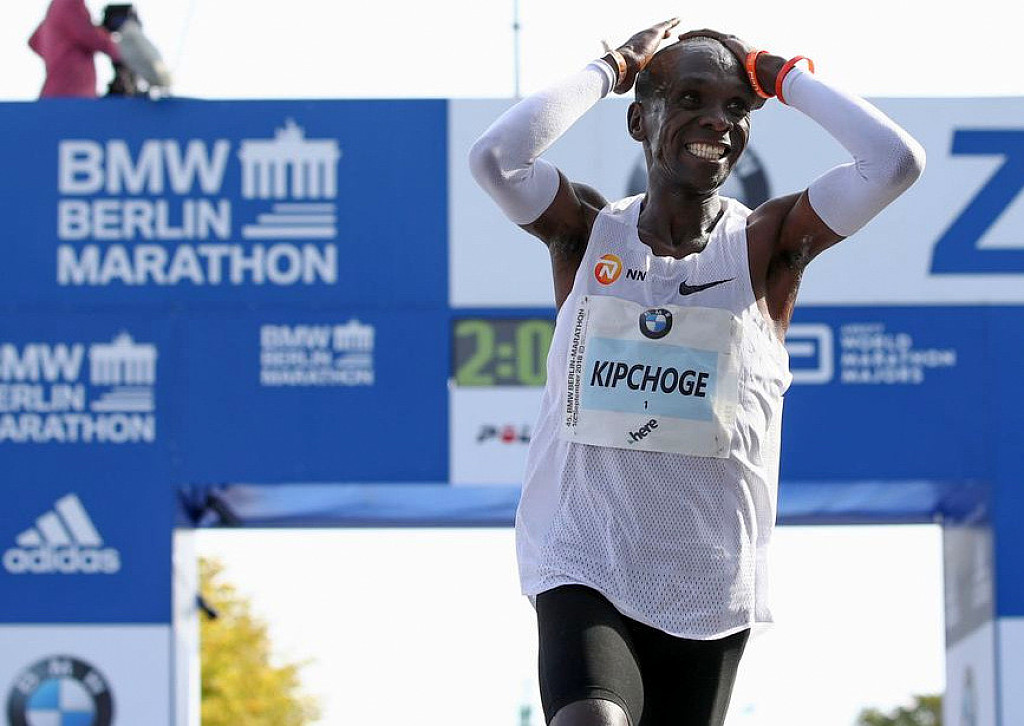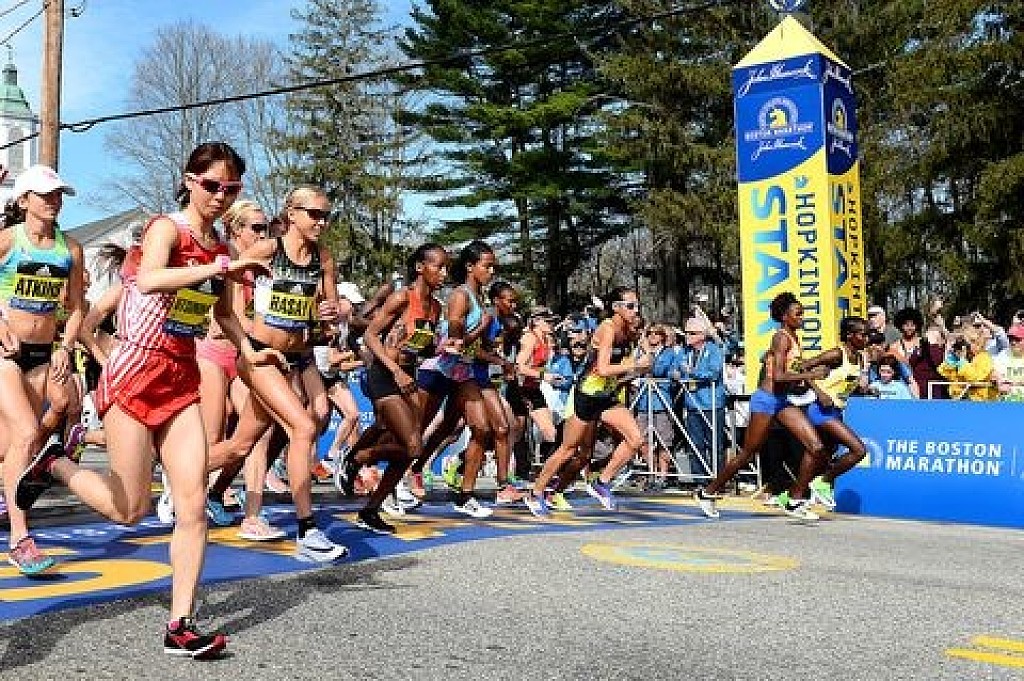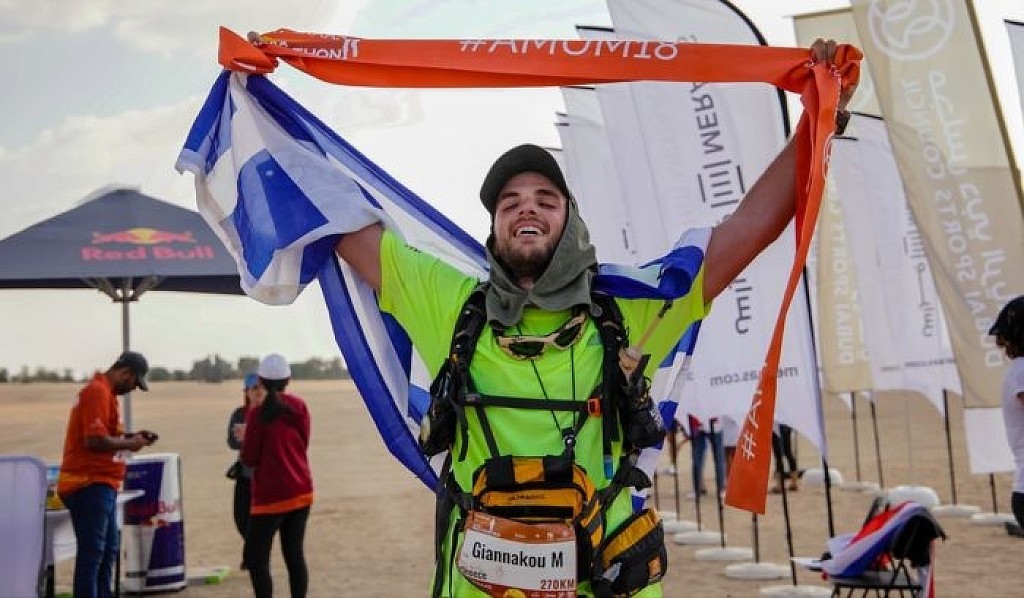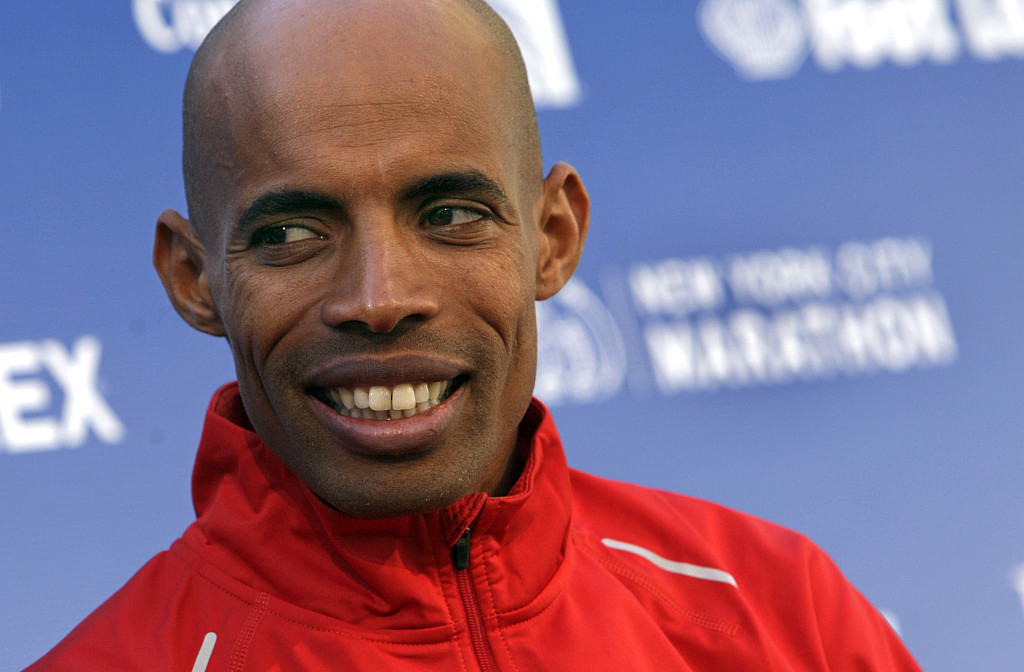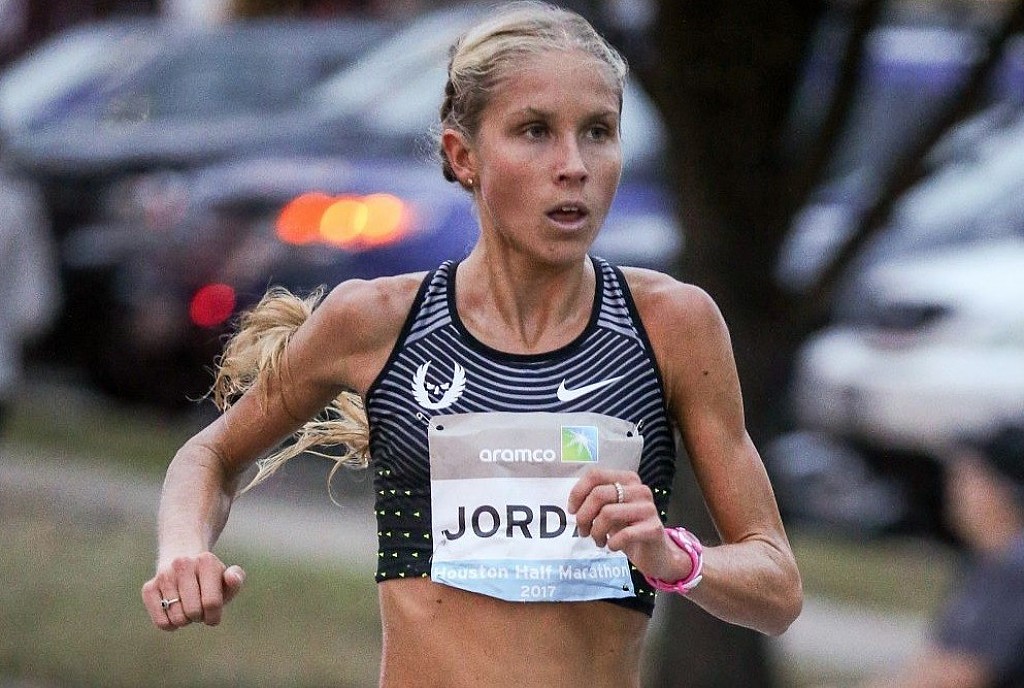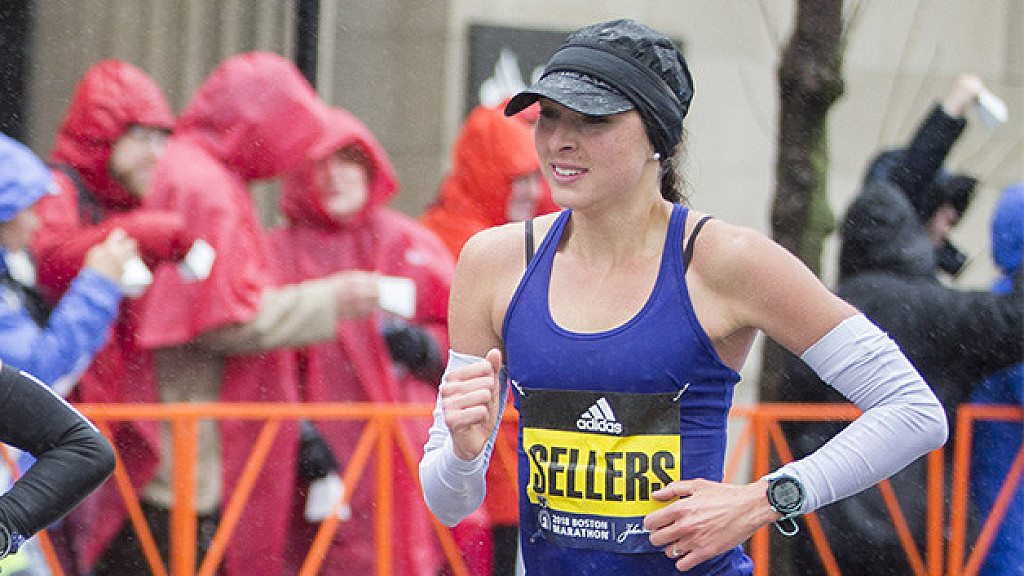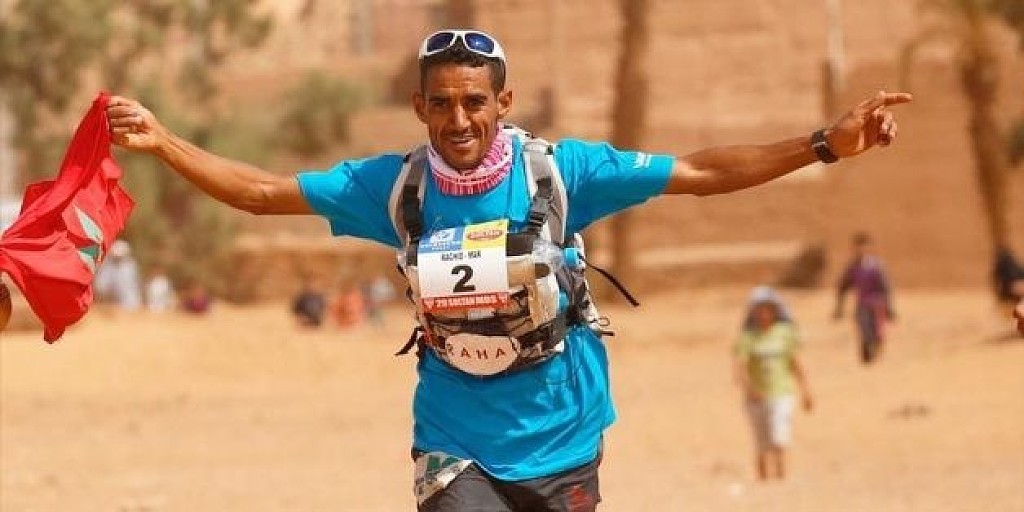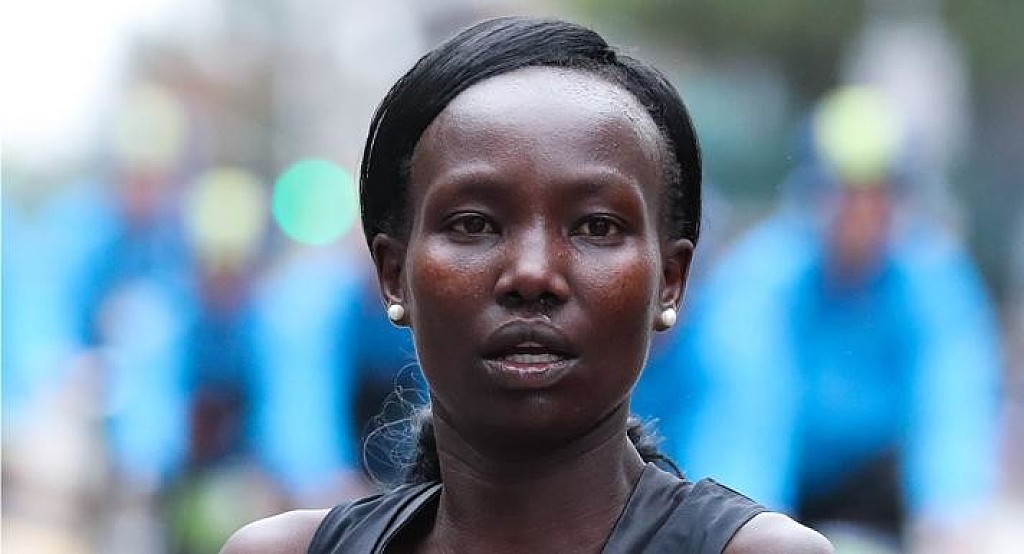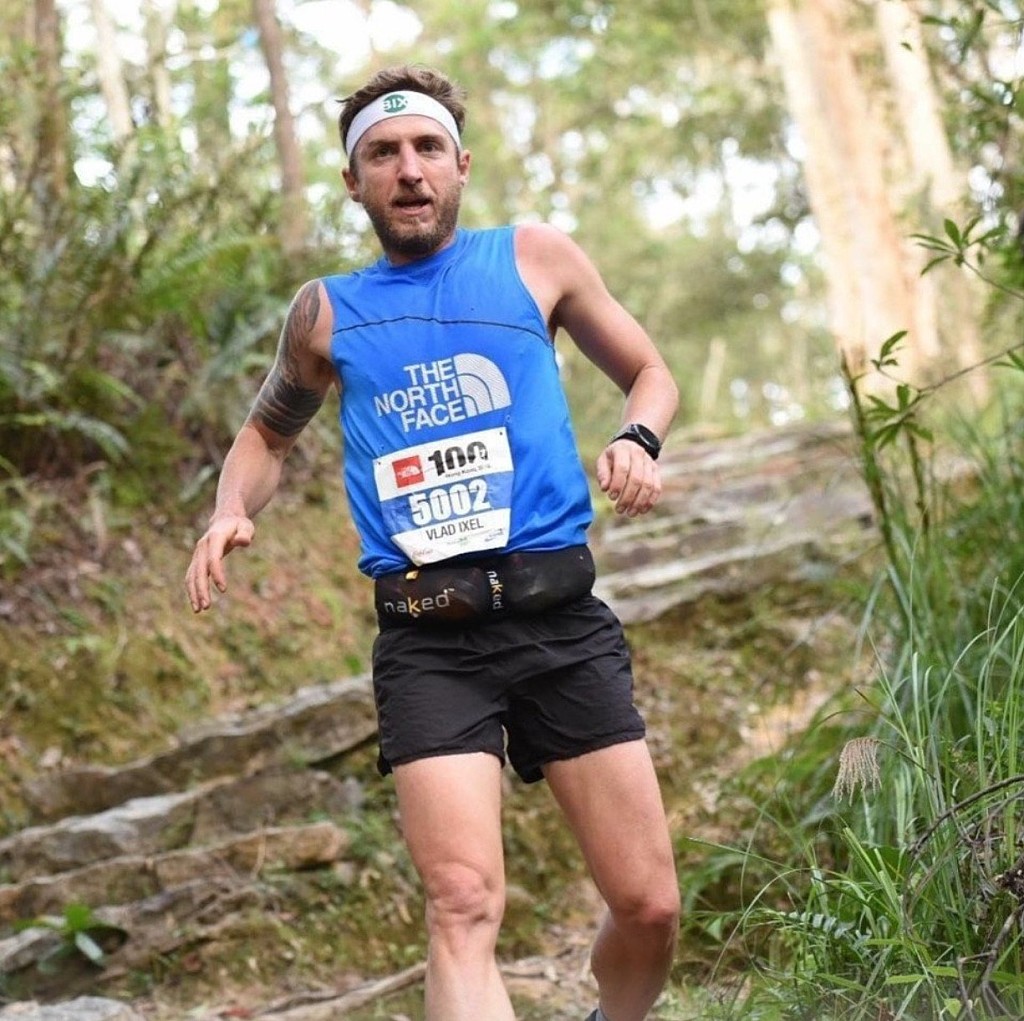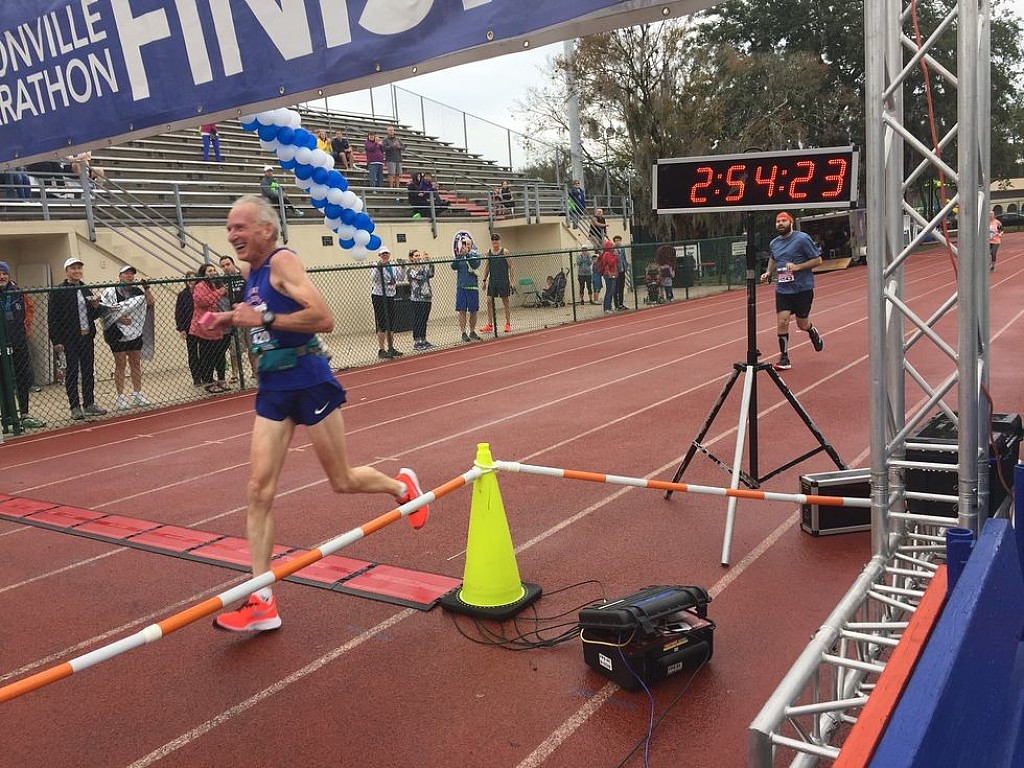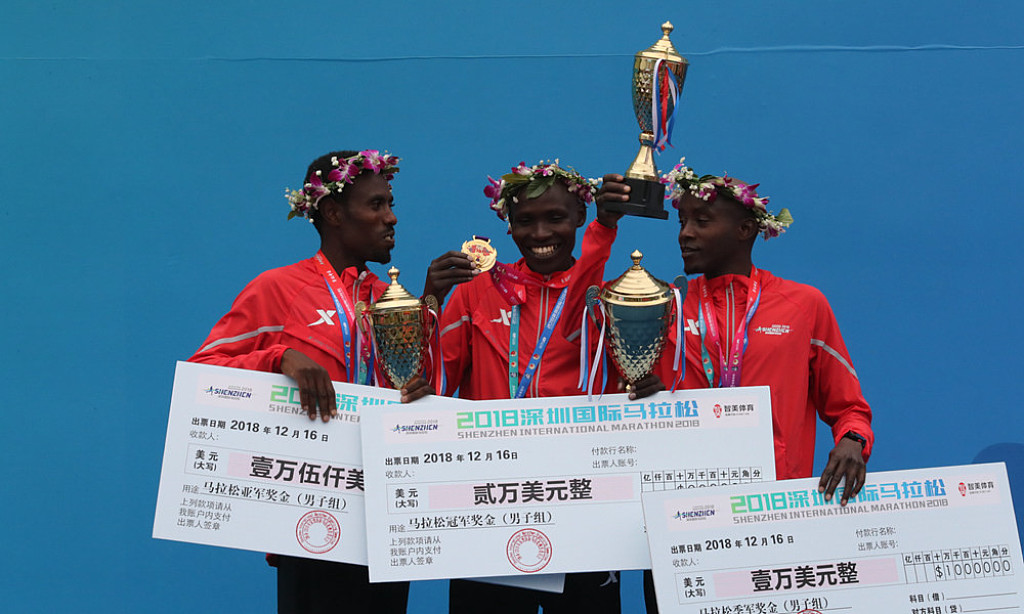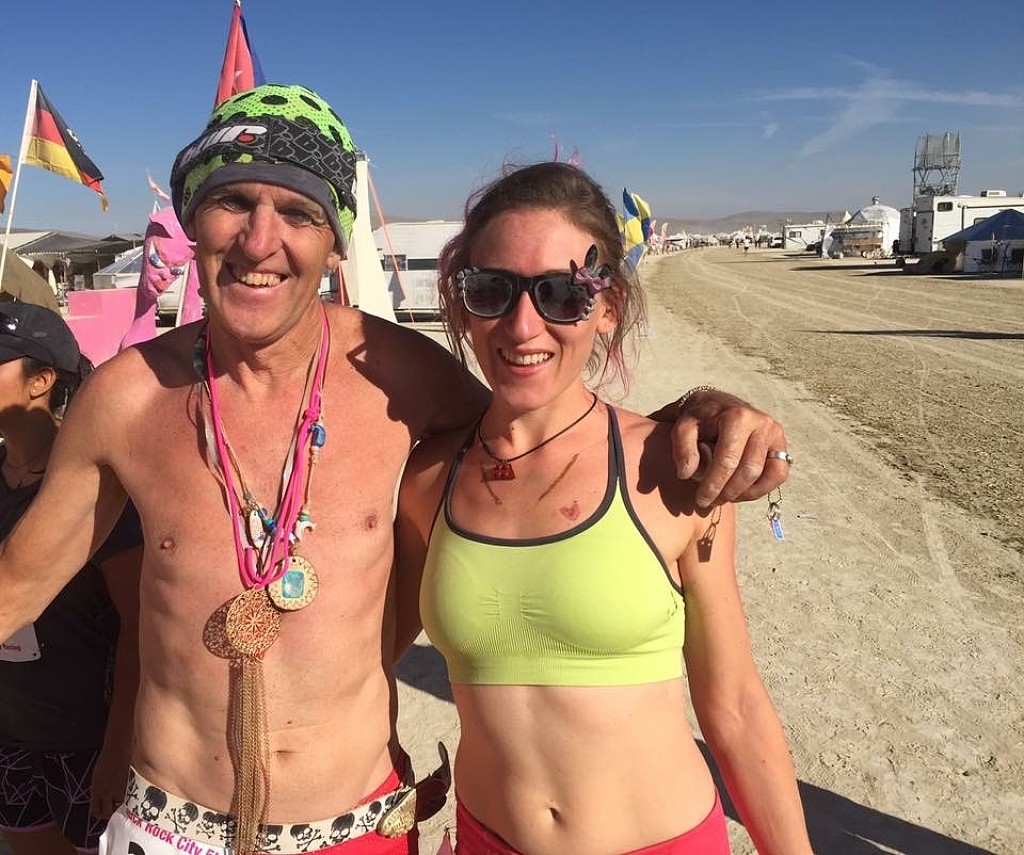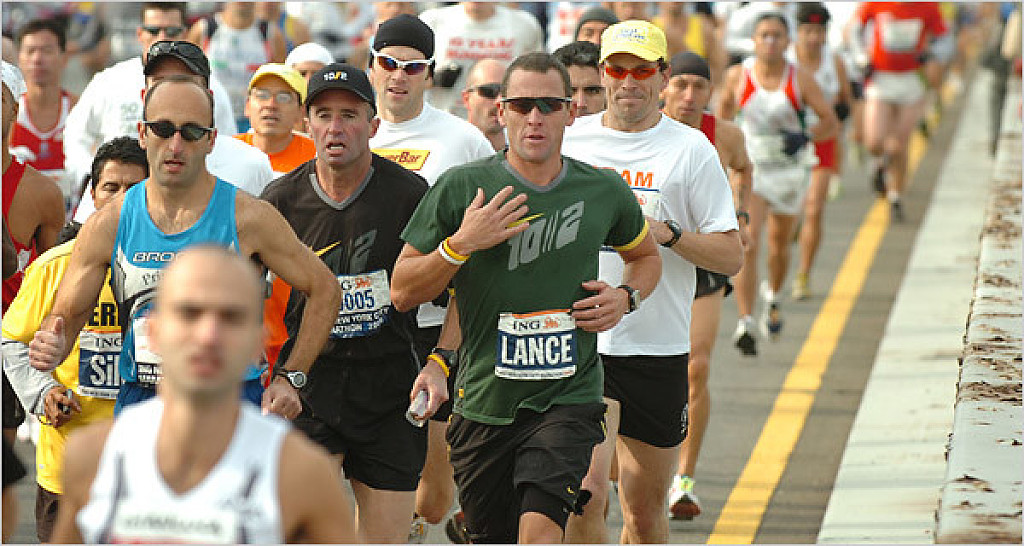Running News Daily
Running News Daily is edited by Bob Anderson in Mountain View, California USA and team in Thika Kenya, La Piedad Mexico, Bend Oregon, Chandler Arizona and Monforte da Beira Portugal. Send your news items to bob@mybestruns.com Advertising opportunities available. Over one million readers and growing. Train the Kenyan Way at KATA Running Retreat Kenya. (Kenyan Athletics Training Academy) in Thika Kenya. Opening in june 2024 KATA Running retreat Portugal. Learn more about Bob Anderson, MBR publisher and KATA director/owner, take a look at A Long Run the movie covering Bob's 50 race challenge.
Index to Daily Posts · Sign Up For Updates · Run The World Feed
Bracha Deutsch a mother of five is Israel’s most unlikely marathon runner
Clad in a modest skirt and headscarf, Bracha Deutsch, a mother of five from Jerusalem, was first across the finish line at the National Half Marathon Championships, and now she has her sights set on the Olympics.
Israel's most unlikely marathon runner spends her Thursday preparing food for Shabbat. For that's what you do when you are the first female Haredi marathon runner in the country and you have a race Friday morning.
It may sound improbable, perhaps preposterous, but 29-year-old Bracha "Beatie" Deutsch is the real deal. The first female Haredi athlete shocked everyone by winning Israel's National Half Marathon Championship in December, with a personal best of 1 hour, 19 minutes and 51 seconds.
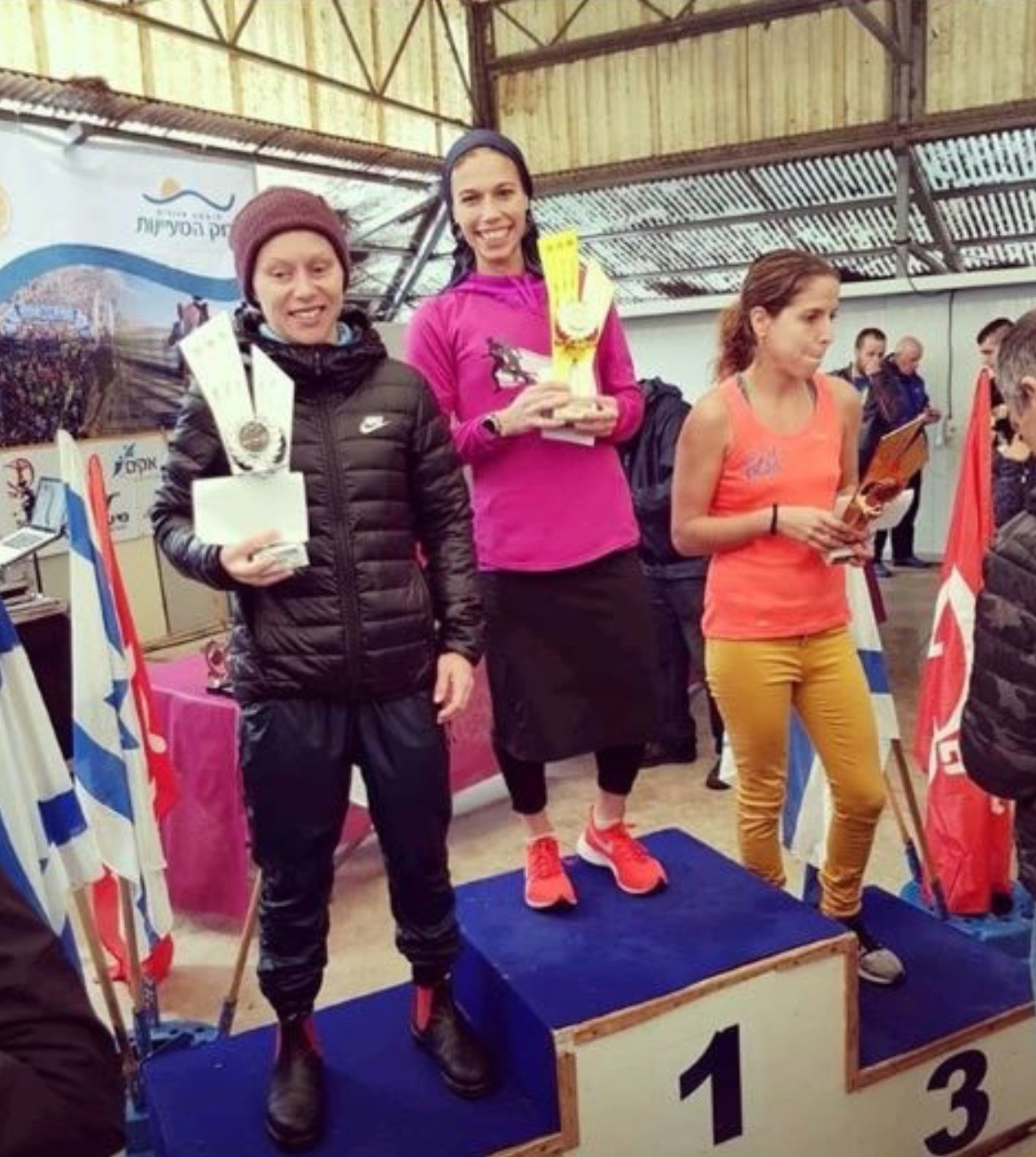
Deutsch is keeping things in perspective. "It's much harder to mother five children than to run a marathon," she says. "Running is a piece of cake compared to potty training."
Indeed, her Instagram seems to reflect her two loves - her children and running, and is filled with photos of both. Her user name, perhaps unsurprisingly, is "marathonmother."
"Although my children are small, before I compete, they ask me 'mommy, are you going to win?' The trophy I won at the Half Marathon Championship started a war between my children, they each wanted it for themselves!"
On January 4, Deutsch will compete in the Tiberias Marathon, where she hopes to place on the podium. And after that, she dreams of the Olympics. And while she is still very far from reaching that goal, she is definitely optimistic.
"I have patience," she says. "I've only been running for three years. I hope to be the first ultra-Orthodox Jewish athlete at the Olympics.
(12/31/2018) ⚡AMP2018 Boston Marathon Winner Desiree Linden will run the Louisiana Half Marathon in January
The first American female to win the Boston Marathon in 30 years, Desiree Linden, will compete in The Louisiana Half Marathon on Sunday, January 20, 2019.
She will use the race as a tune-up as she prepares for the 2019 Boston Marathon, taking place on Monday, April 15, 2019. Runners and spectators can meet Linden during the Shipt Louisiana Marathon Expo on Friday, January 18, and during a Q&A session with Linden on Sunday, January 20, at The Louisiana Marathon Finish Fest.
The full marathon boasted the highest percentage of Boston Qualifiers for January races last year. There are four distances including the half marathon.
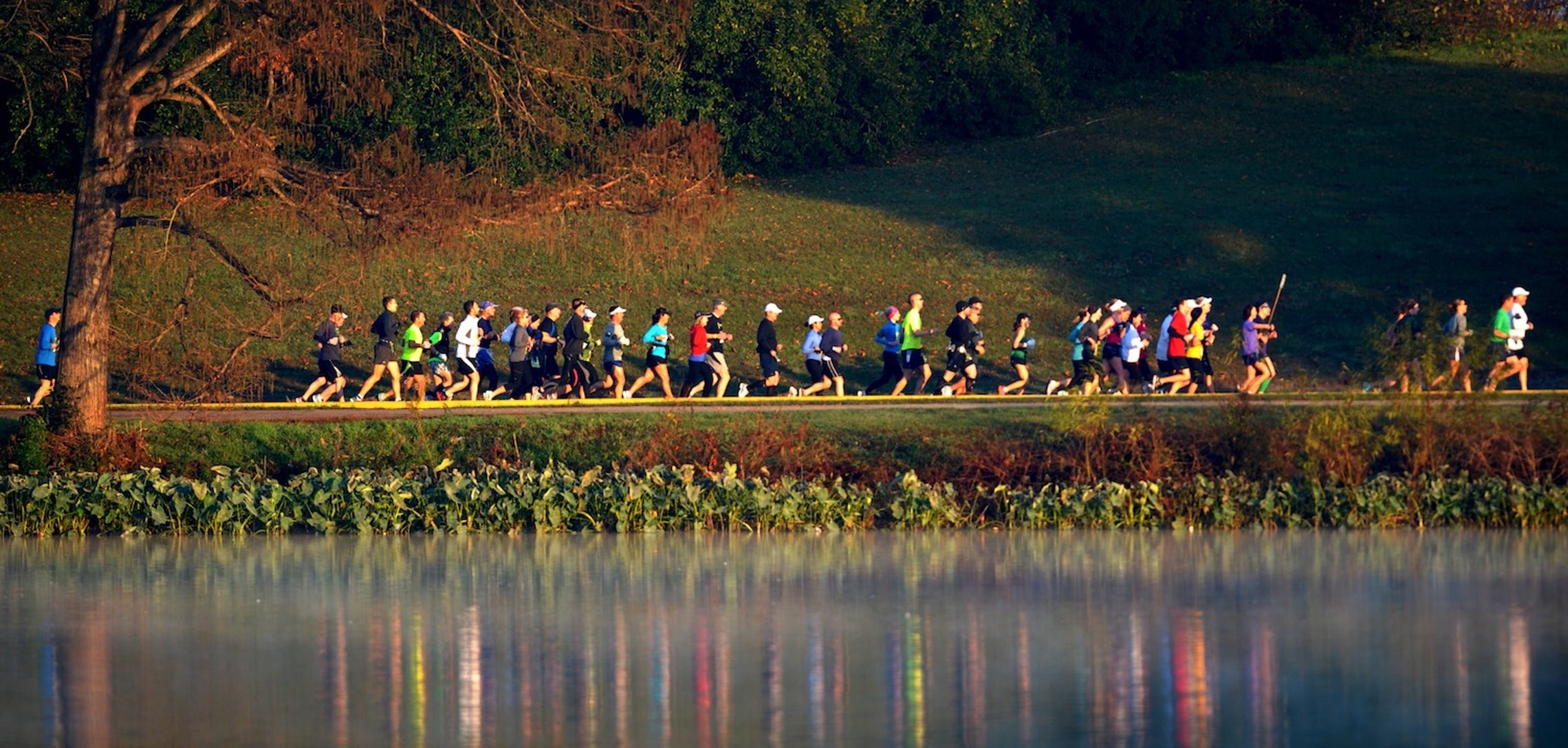
“We are thrilled to have Des Linden join us for the 2019 race weekend. As she prepares to defend her Boston title by running The Louisiana Half Marathon, she will experience our fast and flat course, winding through downtown Baton Rouge, historic neighborhoods and LSU’s campus,” said The Louisiana Marathon Strategic Partnerships Director Craig Sweeney.
The three-day running festival, culminating with the nationally-recognized Finish Fest, is a culturally rich event that celebrates both running and the unique culture that defines Louisiana.
(12/30/2018) ⚡AMPWorld U20 10,000m silver medallist Jacob Kiplimo will be the man to beat at Vallecana 10k race
In the men's race, world U20 10,000m silver medallist Jacob Kiplimo will start as the man to beat. The Ugandan teenager, still 17, is unbeaten in four races this autumn season: a 10km event in Trento in October and three IAAF Cross Country Permit races in the Spanish cities of Atapuerca, Soria and Alcobendas.
Kiplimo clocked 28:17 at the Giro al Sas in Trento, his best 10km on the roads, a performance he will likely improve upon Monday in his quest for the win. However, the reigning world U20 cross country champion will face dangerous rivals including Ethiopia’s Abadi Hadis, the reigning world cross country bronze medallist and Kenya’s Benard Ngeno. Both competed at the Valencia Half Marathon in October, Hadis finishing third in 58:44 and Ngeno sixth in 59:22, massive PBs for both. Hadis, 21, also finished fourth in Atapuerca.
Watch out too for Uganda’s Mande Bushendich, a 21-year-old who improved his 10km PB to 28:01 in Durban in October. Eritrea’s Abrar Osman will also looking for a top-three spot after his recent 42:34 15km career best in Nijmegen while Kenya’s Solomon Boit, a creditable fourth (27:57.44) at the World U20 Championships over 10,000m, Ethiopia’s Mogos Tuemay, a 27:48:41 10,000m specialist and Tanzania’s Agustino Sulle, a 2:07:46 marathoner, should also fight for a top-five spot.
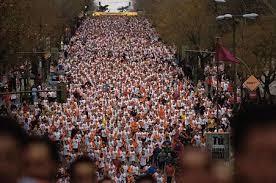
Spanish hopes rest on Adel Mechaal, fresh from an eighth place finish at the European Cross Country Championships in Tilburg and Toni Abadía, the national record holder for the distance with a 27:48 clocking set in Laredo last March. The 28-year-old came 14th in Tilburg and will defend the third place he managed here the last two years. Javier Guerra, an accomplished road athlete with 1:01:38 and 2:08:36 half marathon and marathon credentials, will also be on show.
The race is held on a slightly downhill 10km point-to-point course and starts alongside Real Madrid’s Santiago Bernabeu stadium before finishing on the pitch of another football team, Rayo Vallecano, in Madrid’s southern suburbs.
Forecasters predict a mild night on Monday with temperatures ranging between 8-10C and no rain expected when the gun sounds the start of the last IAAF Label road race of 2018.
(12/29/2018) ⚡AMPBrent Imonen is the new race director and owner for the Kona Marathon
After months of speculation and rumors of new ownership for next year’s Kona Marathon Events, the word is finally out — it is true.
This week Sharron Faff, who has been at the helm for the popular running events over the last decade, confirmed that she has finally “passed the torch” and is now able to publicly talk about it.
“I feel very good about passing the Kona Marathon on to someone who I feel is very capable of being able to take it to new levels,” Faff said. “And also, to someone young and who has a lot of ambition to really put a lot of energy behind it.”
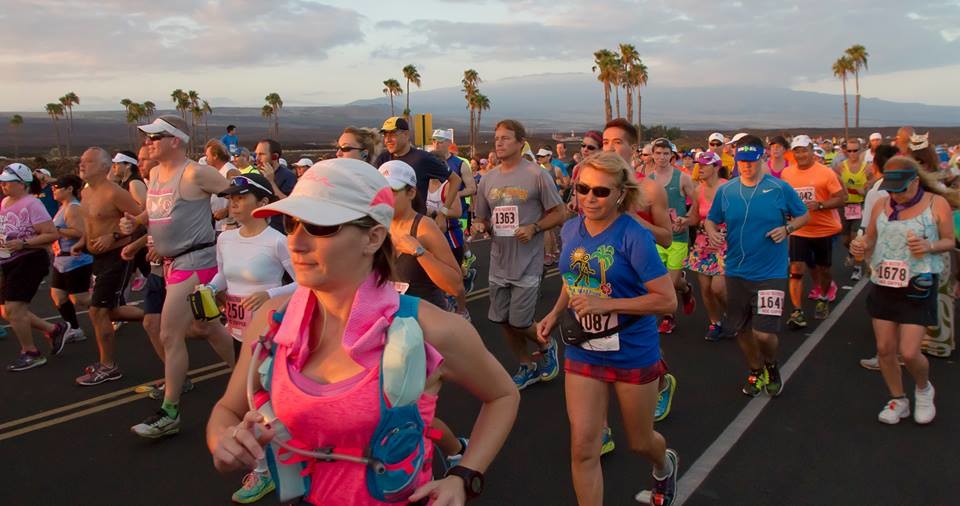
Entering as the new race director and owner for the Kona Marathon, which is typically held in the month of June, will be Brent Imonen.
For Imonen, a former Hawaii professional triathlete, competitive swimmer and elite runner, taking the reins for the Kona Marathon Events won’t be a new endeavor or his only stint – he brings plenty of expertise with him from Oahu.
(12/29/2018) ⚡AMPMy Love Affair with Central Park started 40 years ago tonight - Larry Allen on Running File 5
If you want a useful guide for running in Central Park this isn’t that. There is plenty of concise information available online and all of it will do a far better job telling you exactly how to go for a run in New York City’s favorite 840 acre backyard.
If you want to know about beginning a long term relationship with New York City and running in Central Park, this is my story.
My first run in the park was on December 29, 1978. I was in college on the GI Bill and had taken my slightly unreliable but fun-to-drive MGB from Maine to Florida over Christmas break.
I didn’t want to think about the trip back north. Hitchhiking was still an option in those days if my car gave out but it surely was not what I wanted.
I was already a veteran of two marathons and was ramping up my mileage for the Boston Marathon the following April. I had a glorious couple of weeks of running in the technicolor light and warmth of south Florida and while there even managed to meet Frank Shorter.
I ran twice a day including a couple of two hour runs, went to empty beaches to bask in sunny 60 degree days while bundled up locals looked on, amused and mystified.
All in all it was a great time, went quickly and too soon I was starting the long drive back to Maine.
A couple of uneventful days on the road brought me back to the NJ turnpike two days before New Year Eve. In the fading light of a cold, clear winter afternoon I pulled into a service plaza for gas.
My plan was to continue driving on through the night for the last 500 plus miles vs. spending money I didn’t have for a roadside motel room. A “you are here” map in the foyer of the restroom surprised me with my close proximity to NYC.
The next thing I remember is rummaging through the stuff in my car for an address book with the phone number of a longtime summer friend from Maine who spent the balance of his life on upper west side of New York.
I searched between the seats for change to make a call on a pay phone and was fortunate that my friend even answered. He graciously said I could crash for the night.
I’d never even been into NYC proper and the prospects for the evening were exciting if not a little intimidating.
I finally made it safely down from the high bridge over the Hudson River into the city and found a place to park near Grant’s Tomb on Riverside Drive, a few blocks west of my friend’s apartment not far from Columbia University.
I made the wise choice to schlep all of my stuff to the apartment for fear that the patched convertible top and dodgy locks of my car wouldn’t deter anyone in 1970s NYC, from breaking in looking for anything of value.
I said a quick hello and thank you to my friend on arrival but needed a run before I could eat or do anything else. He understood and gave me directions to Central Park and showed me how to buzz myself back into his high rise building.
Running down Broadway entailed dodging and weaving along hopelessly crowded evening sidewalks, scents from all manner of ethnic food wafting as I made my way through the 20 red lights, one per block, for a mile.
Eventually a left turn, to the east for a few more blocks to enter the park around 100th St at Central Park West.
The park was dark and cold, full of energy but it oddly felt peaceful too. The air was filled with different smells; diesel bus fumes, horse manure, musty fallen leaves, street pretzels, roasted nuts and yes, adrenaline, some of it mine.
Traffic hadn’t been banned from the park drives in the evening yet so it was full of yellow cabs and giant 70s era sedans moving slowly in heavy evening traffic.
I looked around for a landmark, something to remember so I could find my way back out of the park onto the same street in hopes of finding my way back to my friend’s place through what felt like barely contained chaos on the city streets.
I took note of a broken, graffiti covered park bench in this far less than gentrified version of the city. It seemed memorable enough and I guess it was.
Inside the park there was a lane for running. Parallel were two traffic lanes around what I’d been told was a six mile loop circling the park just inside the perimeter.
In spite of the hummock and pot-hole filled streets, particularly in the nearly bankrupt version of the city at the time, I recall the park drives being remarkably smooth pavement.
I turned right, running downtown on the west side. The rolling hills also seemed more downhill than up too, something I confirmed in years and miles to come.
At first it was a gentle contained pace, working out the stiffness in my legs and back after a day long drive from North Carolina on a bad suspension and the hard seats in my car.
The grade of the rolling hills and gently winding turns in the park seemed worn-in to the landscape. It felt perfect for running, almost carved into the city like the equivalent of glacial wear but from the mass of some number of the eight million city residents using the park day after day.
Making my way down the west side for a mile offered peeks through the leafless trees and scenic overlooks of the lights and architecture of pre war apartment buildings forming what appeared to be a tall, impenetrable wall along the avenue fronting the park.
Periodically there were glimpses further downtown to the iconic skyscrapers in midtown. The Empire State Building and Chrysler Building most familiar amongst a forest of others that seemed just as big if not as well known.
I simply didn’t want to stop running, the pull was almost magnetic, my tempo gradually increasing around the next corner or over the next hill, all just to see what was ahead.
It was all a bit like a party that you didn’t want to leave for fear of missing something good that might happen.
Just before reaching a first opportunity to choose between veering left from the main park drive or continuing straight toward the high rises of midtown; I went by what, in a few years, would be renamed Strawberry Fields. It was in honor of John Lennon; murdered not far away at the entrance to his building, the Dakota, which overlooks the park here.
The park is a perfect rectangle, slightly off of an exact north to south axis extending from 110th St to 59th St., 2.5 miles on each side and slightly over .75 mile between 5th Avenue on the east side and Central Park West on the other.
Years later I learned that the cutoff (or shortcut) I had seen and gone by at 72nd St and another I hadn’t reached yet at 102nd St made for a seemingly endless variety of options for creating and running multiples of loops of 2, 4, 5 miles and of course the full 6 mile circuit.
The New York Road Runners used the counterclockwise 6+ miles of the full park four times plus the slightly less than two mile loop from the bottom of the park to 72nd St for the 26 miles 385 yards for the 55 finishers of first New York Marathon in 1970.
The marathon still uses the park, but only about half of it for part of the final three miles of the race.
I read somewhere that 20,000 people run in Central Park on an average day. There are days and seasons during the year when that number seems high but other days and times during the year when it is certainly low. I guess that’s what they mean by average.
There are over 30 races in Central Park every year. Most hosted by the New York Road Runners Club and a few by other organizations.
Nearly all have thousands of participants, racing distances ranging from a 1 mile kids race to a 60k ultra marathon. Some with top invited international and American stars, some simply very large competitive local races. Every one a variation in the options for running loops in the park.
I continued running through the park, next past a big open meadow on the left, learning later that it was the 15 acre Sheep’s Meadow.
It has been a historic spot for protests over the past 100 years, up to 30,000 sunbathers on a nice day and 150,000 for a Barbra Streisand concert in the 1960s and yes sheep, from the 1860s until the 1930s.
Adjacent to the finish line of the marathon at Tavern on the Green the meadow also was a post race staging area for a few years.
22 months after my first run in the park I was back here, finishing my first marathon in New York. My last run up the hill to that familiar finish line was 32 years later.
The buildings along the southern edge of the park loom up just a few hundred yards away from the marathon finish. Columbus Circle marks one of the four corners of the park here and is a block from where I lived for 10 years when I finally moved to the city.
Almost every day was a 15 minute walk home from work at MoMA for me, dogs out for a walk and then into the park for an evening run. Sometimes clockwise, up the westside, the opposite direction of my first run.
Often I ran the same counterclockwise direction I was running that night. Across the bottom of the park to the east side, the legendary Plaza Hotel, the Central Park Zoo and the Wollman Skating rink anchoring the corner on that side.

I saw the familiar sign for the Essex House hotel along the way on my first run in the park that night and invariably still take a glance up at it on every run 40 years later.
Turning back north on the east side of the park led me up a gentle hill through dramatic exposed rock outcroppings of Manhattan’s bedrock schist. Apparently something which allowed New York to more easily build foundations for it’s famous skyscrapers over the last century.
I ran past playgrounds, the 100 year old children’s carousel and about a mile beyond Columbus Circle, to the other end of the 72nd St cutoff.
In years ahead it became a familiar corner. Nearby is the start and finish for the New Years Eve 4 mile race in the park, starting at the stroke of midnight with fireworks.
The corner is also near the start of one of the bigger hills in the park, this one known among local runners as “cat hill”. Midway up the 1/4 mile climb is a sculpture of a life sized and menacing mountain lion, seemingly ready to pounce from a natural stone overhang directly over the runner’s lane.
It was too dark to see the cat that night but is familiar enough now. Cat hill is a popular place for training for some of the dozens of running clubs that meet up and use the park for weekly group training sessions.
A couple of minutes more led me past what I didn’t know at the time was the back of the massive Metropolitan Museum of Art. Around it and closer to 5th Avenue for another half mile brought me near a building I did recognize, Frank Lloyd Wright’s landmark cylindrical Guggenheim Museum.
The nearby entrance to the park would become familiar later as the place where the marathon enters the park for the last 2.5 miles of the race headed back in the direction from which I’d just come.
The summer after my first NY marathon and having entering my 2nd, there was a fundraising appeal in my race confirmation. The NYRR was trying to raise money to purchase a six story Beaux Arts townhouse just opposite the Guggenheim for one million dollars.
They were successful and for 36 years it served as headquarters, clubhouse and place to pick up bibs for their many races. It was listed for sale this past year for 25 million dollars as they apparently need something fancier and/or bigger.
Nearby is a statue of the late, charismatic leader of the NYRR, Fred Lebow. His vision arguably responsible for the explosive growth of urban marathons around the world for decades. His likeness stands looking at a stopwatch, appearing to be silently calling out time splits to runners just inside the park.
The entrance of the 1.5 mile long reservoir running path is there too, named for Jacquelin Kennedy Onassis, a nearby resident for decades, she was known to jog on the scenic cinder path and reportedly was even seen wearing long white formal evening dress gloves on cool days.
At the reservoir it felt like I had run between 5-6 miles, I knew it was six around the park but then maybe 10 minutes more to and from my friends place.
I was moving along briskly, feeling good but thinking I should get back but had reached the point where it made more sense to continue on vs. turning back. Maybe three miles to go.
Just 1/4 mile past the flat straight section along the reservoir the drive started down a hill and turned toward the center of the park from the perimeter. I felt a change. There were fewer street lights, less traffic and not as many people around. It all seemed a bit more ominous.
A half mile further brought me to the 2nd cutoff between the east side and the west. This one at 102nd St. It was very dark, narrow and almost foreboding.
In 1989 this section of the park, down the hill from the reservoir to the 102nd St cutoff became notorious as the site of a series of “wilding” gang assaults on a number of runners and pedestrians over one hour on a frightening night that April. It culminated in the vicious assault and rape of the “Central Park jogger” on the cutoff road I was passing.
Even 11 years prior to that night it felt dangerous. Today most runners and running clubs practice a buddy system when running at night in the park as a result of what happened in 1989.
There is a prominent police presence in this area and thankfully crime in the city and the park has declined precipitously too.
In all of my thousands of miles in the park over the years, many at night, I’ve never personally experienced a threat or even witnessed one and I’m grateful for that.
The almost kaleidoscopic park quickly changes again at the far north end. The park drive quickly snakes through a steep S shaped descent with high bluffs overhead on one side and an open high view of Harlem on the other; the Meer waters and the Conservatory Gardens in the foreground.
The far north end of the park remains the most natural with unspoiled ravines, dramatic rock faces, waterfalls and streams all tucked away.
On runs here I’ve seen families of raccoons crossing the road at night and hawks swoop down for unsuspecting squirrels during the day but nothing of the sort on this particular night.
Midway down the hill brought me past a large skating rink outfitted for youth hockey. I learned later that it does double duty as a community pool in the summer.
Now at the north edge of the park I could see into Harlem. I made the turn, running to the west. Just outside the park were dilapidated tire changing shops, gas stations, boarded up windows, burned out cars and a trash can with a makeshift bonfire offering warmth to a few men huddled around.
Continuing on, anticipating a turn to the south to complete my circuit of the park it quickly became evident that I was going to climb a good hill.
Runners in NY refer to this climb with some dread as THE Harlem Hill, it climbs about 150 ft in half a mile and then just as quickly drops down again. I wasn’t far beyond where it leveled out again and suddenly on my right, there it was!
The familiar broken, graffiti covered bench that I’d decided to use as part of my trail of bread crumbs when I entered the park.
Not much had changed on the surface. Traffic had lessened somewhat as the evening rush was concluding. The smells were the same but had become permanently imprinted in my brain vs. something new to experience.
I slowed my pace for the few blocks back toward Broadway and a final right turn north for the last mile up toward Columbia.
After less than an hour on foot I felt like I understood New York to some extent....and I liked it. The prospects for the evening seemed exciting enough when I decided to spend the night but I had no idea.
Even before I finished the run one big thing had changed. I knew or at least hoped that I’d spend part of my life in the city.
My wife, step daughter and I have been fortunate to have lived the last 21 years of our life together in New York and adjacent to Central Park, 10 years on one corner of the park and the last 11 years a few blocks from the far opposite corner. In part, all due to one unforgettable run around Central Park on a cold December night 40 years ago tonight.
(Larry Allen on Running is an exclusive My Best Runs Running News Daily feature. Additionally Larry is doing the Run The World Challenge for the third time.)
(12/28/2018) ⚡AMPby Larry Allen
The former member of the International Olympic Committee, Charles Mukora dies at 83
National Olympic Committee of Kenya President Paul Tergat has described his late predecessor Charles Mukora as the man responsible for the firm entrenchment of Kenya into the Olympic movement.
Mukora, 83, died on Thursday after a long illness.
The former member of the International Olympic Committee (IOC) will also be remembered as one of the forces behind Kenya’s breakthrough into international track and field as pioneer coach, nurturing the careers of Kenyan legends Naftali Temu and Kipchoge Keino, among many others.
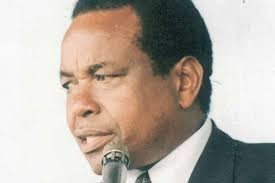
“Charles was one of the founding pillars of the National Olympic Committee of Kenya (Nock) and his tenure saw Kenya firmly established in the global Olympic movement,” said Tergat, an Olympic silver medallist and former world marathon record holder, in his condolences statement.
Athletics Kenya President Jack Tuwei paid tribute to Mukora, who also served as Laikipia East Member of Parliament, as a “dedicated sports leader.”
(12/28/2018) ⚡AMPColin O’Brady, became the first person ever to traverse Antarctica from coast to coast solo, unsupported and unaided
The final miles of a nearly two-month race across Antarctica — a lonely effort marked by long days, short nights and stunning endurance — ended Wednesday with a sprint to the finish.
In what could go down as one of the great feats in polar history, the American Colin O’Brady, 33, covered the final 77.54 miles of the 921-mile journey across Antarctica in one final sleepless, 32-hour burst, becoming the first person ever to traverse Antarctica from coast to coast solo, unsupported and unaided by wind.
O’Brady’s transcontinental feat, which took him an actual total of 932 miles with some zigzags along the course, was remarkable enough; but to complete the final 77.54 miles in one shot — essentially tacking an ultramarathon onto the 53rd day of an already unprecedented journey — set an even higher bar for anyone who tries to surpass it.
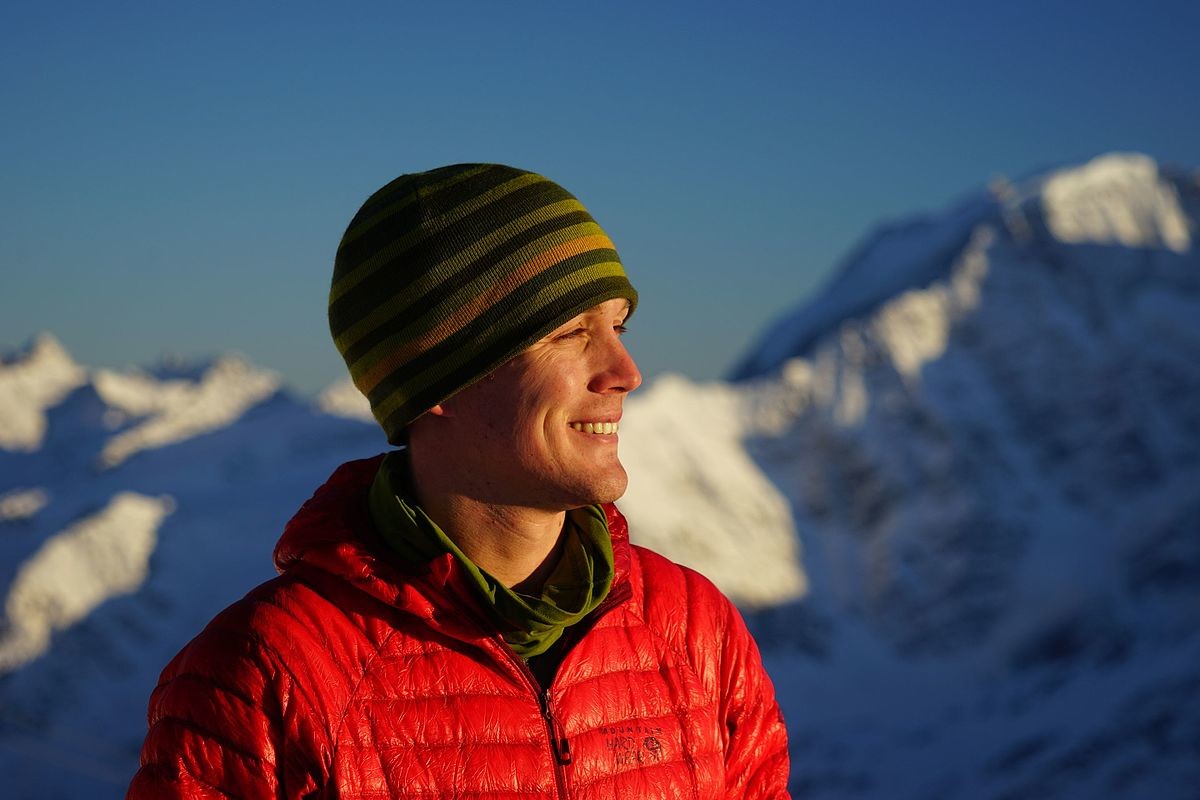
“I don’t know, something overcame me,” O’Brady said in a telephone interview. “I just felt locked in for the last 32 hours, like a deep flow state. I didn’t listen to any music — just locked in, like I’m going until I’m done. It was profound, it was beautiful, and it was an amazing way to finish up the project.”
O’Brady’s culminating effort joined some of the most remarkable achievements in polar history, including expeditions led by Norway’s Roald Amundsen and by Robert Falcon Scott of England, who battled Amundsen to become the first to reach the magnetic South Pole. There was also Borge Ousland’s magnificent traverse in 1996-97, when he became the first to cross the continent alone and unsupported — though he was aided by a kite.
(12/27/2018) ⚡AMPUgandan Joshua Cheptegei is one of the stars at the San Silvestre Vallecana 10K
The young Ugandan athlete Joshua Cheptegei will be one of the international attractions of the Nationale-Nederlanden San Silvestre Vallecana that will be run December 31 through the streets of Madrid.
Cheptegei has confirmed his progression with a spectacular double at the Commonwealth Games of the Commonwealth and his spectacular 27:16 10K in Durban South Africa.
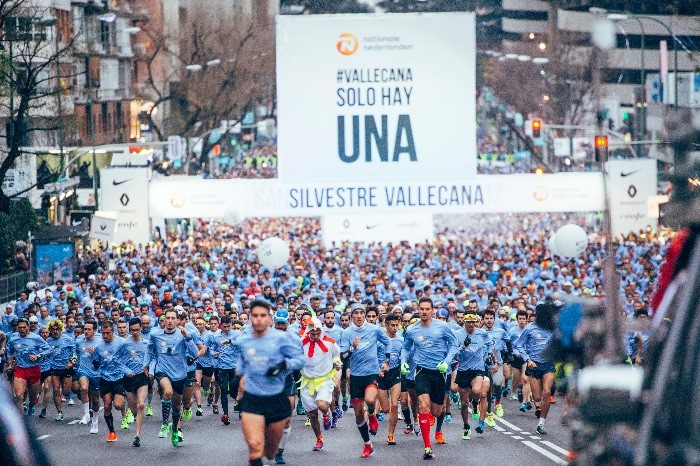
But who can forget watching Cheptegei at the 2017 World Cross Country Championships when he staggered to the finish line. The race was held in his country, in Kampala, and the images of him suffering were seen around the world.
Cheptegei will be the leader of the NN Running Team, which will feature other high-level athletes such as fellow countryman and training partner Mande Bushendich, 21, who ran at 28:01 in Durban, the Eritrean Abrar Osman, the Tanzanian marathon runner Augustino Sulle, and Spaniard Marc Roig.
(12/27/2018) ⚡AMPOlympian and Canadian 3,000m steeplechase record holder Matt Hughes won the Boxing Day 10 mile in 48:05
The 98th annual Boxing Day 10 was held today December 26 in Hamilton, Ont. The race draws huge crowds of runners to brave the cold temperatures and run an off distance road race.
Among the runners were Olympics, Canadian record holders and national champions. The conditions were much better than the 2017 event, which saw temperatures as low as -22 degrees celsius (-6F).
Wednesday’s event saw relatively mild temperature which hovered around zero degrees C (32F). The runners certainly weren’t wearing shorts last year.
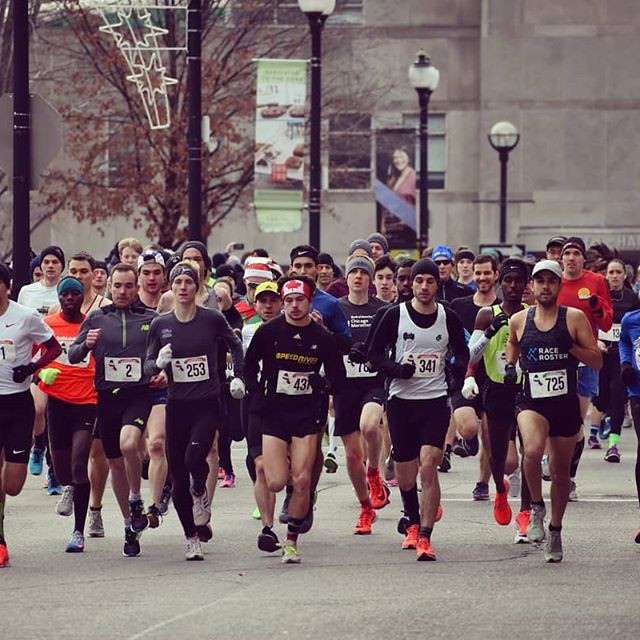
Olympian and Canadian 3,000m steeplechase record holder Matt Hughes won the 10 mile clocking 48:05. He also won last year.
He was followed by Tristan Woodfine in 48:09 and Mike Tate in 48:38. Marathoner Reid Coolsaet finished fourth in 49:37.
In the women’s race Robyn Mildren took the title for the second year in a row clocking 55:46, second place went to Victoria Coates in 56:57 and third place to Mengistu Emebet in 59:34.
(12/26/2018) ⚡AMPFormer world marathon silver medallist Vincent Kipruto will lead Kenya’s charge at the Xiamen International Marathon in China
Former world marathon silver medallist Vincent Kipruto will lead Kenya’s charge at the Xiamen International Marathon in China on January 6.
After a frustrating 2018, which saw the Kenyan compete in three marathons and fail to win any, Kipruto will be inspired as he seeks to start the year on a winning note and break the Ethiopian dominance in the race, reports Xinhua news agency.
Kipruto said he was disappointed with not being able to finish the Fukuoka Marathon early in December, but feels he has recovered and will make an attempt to win the Xiamen Marathon, though he is aware of the strong challenge the Ethiopians will present.
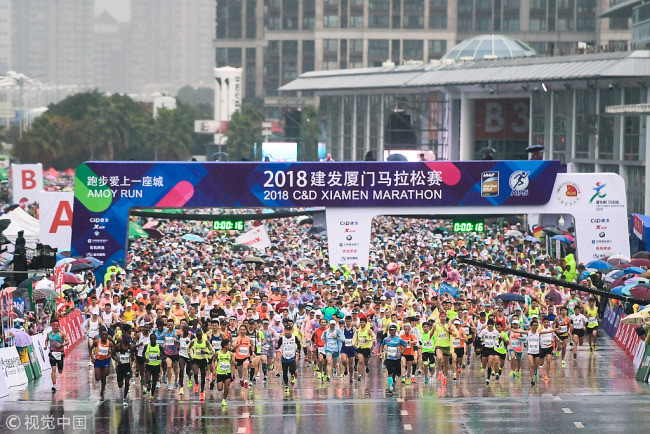
“I have recovered and focused on running top race. I believe I am strong enough to challenge for the medals. I have no intentions of competing at the World Championships later in 2019, but I want to give this race, my best effort."
“Ethiopians have dominated the race and it is time, Kenya takes over and brings home the medals,” he said.
(12/26/2018) ⚡AMPSir Mo Farah says he is considering returning to the track ahead of the 2020 Tokyo Olympics
The 35-year-old Sir Mo Farah has won four Olympic and six World Championship golds during an illustrious track career. He is considering returning to the track this coming season.
His marathon career received a boost last month when he recorded his first win, in Chicago, setting a new European record in the process.
However, when asked by radio station Dubai Eye 103.8 about returning to the track, Farah replied: "2020 is definitely on my mind. I am just taking it one race at a time.
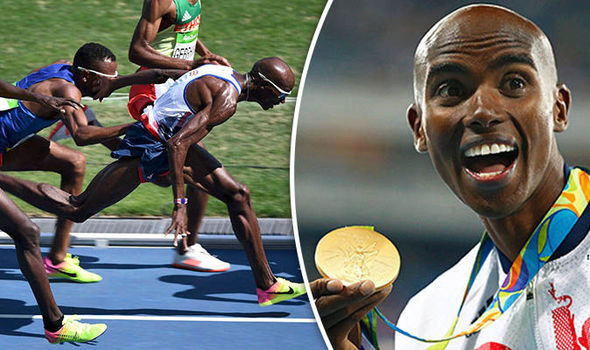
"The best thing now is I have a lot of options. I was talking to Gary (Lough, his coach), the people I am close with and some of the fans and I have been honest with them.
"They asked 'what goes through your mind' and there's lots. Am I still good enough to compete with these guys; can I beat them?
"Part of me does miss the track because that is all I have known for the last 10 years, hanging around with these guys and competing against them."
(12/26/2018) ⚡AMP
Rick Besson was born blind and says his dream is to run the Boston Marathon
“When I met Rick Besson, he told me, ‘My dream is to run the Boston Marathon.’
I said, ‘Let me help your dream come true,’” said Dawn Oates founder of The Play Brigade.
Soon after, in October, Besson completed The Play Brigade’s 5k benefit race, and now he is training for the marathon with the help of the Marathon Coalition.
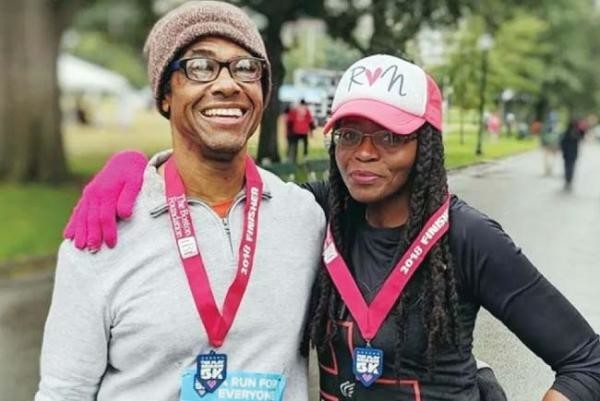
He trains on a strictly regimented schedule with the help of volunteer guides who direct him on his runs. He is attached to a tether with a guide beside him to help navigate crosswalks and potholes.
As he gradually increases the pace and length of his runs, the training program will bring him closer and closer to a marathon level of fitness.
That milestone will represent the culmination of a long personal journey for Besson, who struggled with obesity for much of his life.
Overweight as a teenager, he continued to gain weight after moving to Boston in 1985. Hampered by depression and lacking purpose or motivation, he watched his weight rise to as high as 500 pounds before the recognition of health risks drove him to change his lifestyle and switch to a plant-based diet.
Now, he’s down to 180 pounds and determined to fulfill a dream that once appeared out of reach. The remarkable physical transformation coincided with a mental one, he said.
“The difference is now I have a discipline. If I say I can do something, I have a strategy already. Because if you don’t try, you don’t know if you can,” he said.
(12/26/2018) ⚡AMPDefending champion of the Xiamen Marathon Dejene Debela of Ethiopia is expected to return to defend his title
Dejene Debele, 23, has showed great talent competing in three marathons in 2018 and winning two, both in China. He won the Xiamen Marathon clocking 2:11:22 and in August he returned to win the Beijing Marathon clocking 2:12:08. However, he was a distant seventh at the Rome marathon in April.
Another Kenyan expected in the race is Vincent Yator.
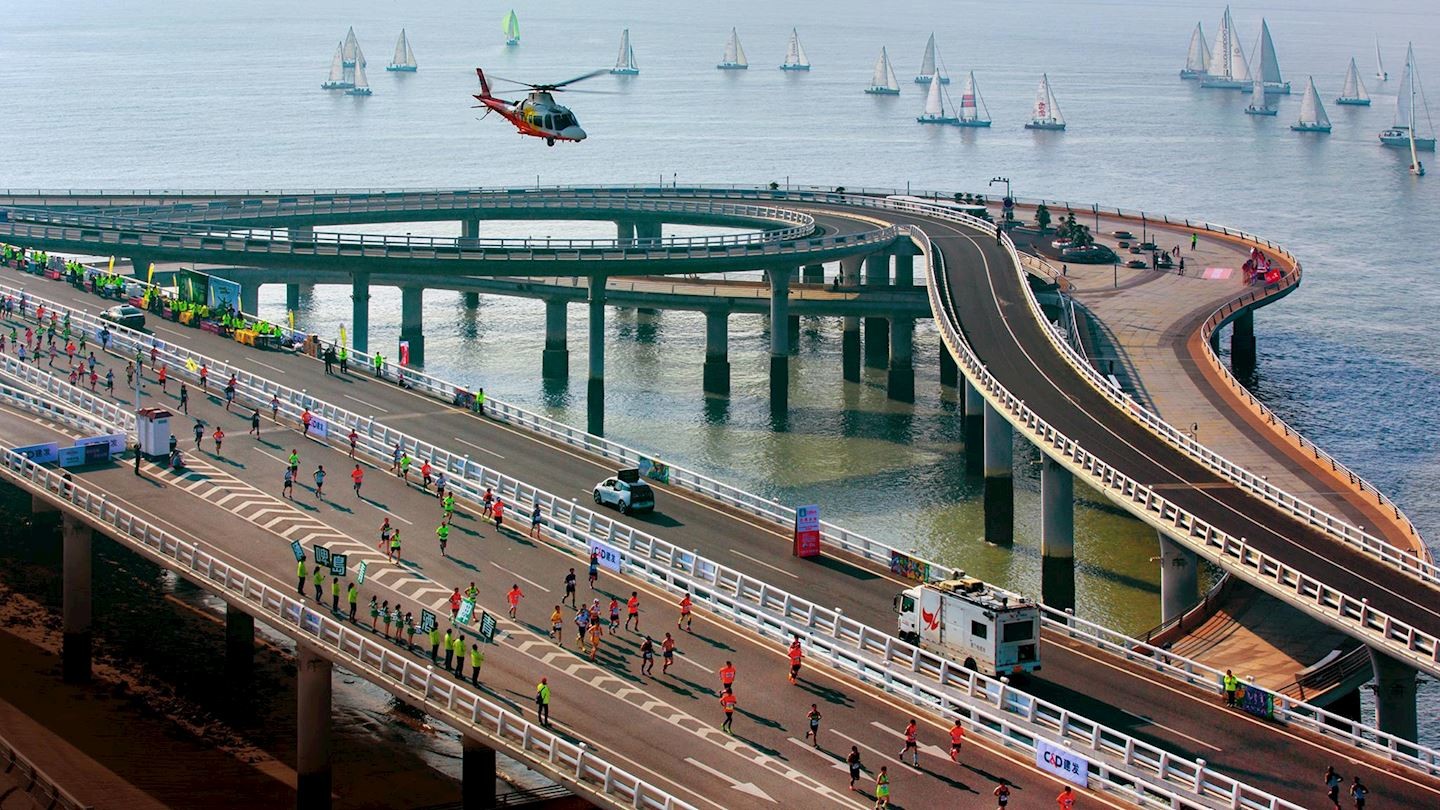
The Xiamen International Marathon is an annual marathon race held in January in the coastal city of Xiamen in Fujian province of China, Every January.
(12/26/2018) ⚡AMPMerry Christmas to all our My Best Runs followers from Bob Anderson and staff
We have been up here in Bend Oregon visiting my son and his family since Friday. My son Michael Anderson is our MBR results editor and post results as soon as they become available. Sometimes it is as soon as the first runners are crossing the finish line.
Michael (top photo) have carved out many running courses around his house. We have already run 22.2 miles since Friday and will at least get in six miles today.
Last Christmas Michael lived in Eugene and we ran the Pre Trail Christmas morning.
We have been running on Christmas Day forever. When Michael lived in the Bay Area I would run with my daughter Lisa and her family and then run with Michael in the afternoon.
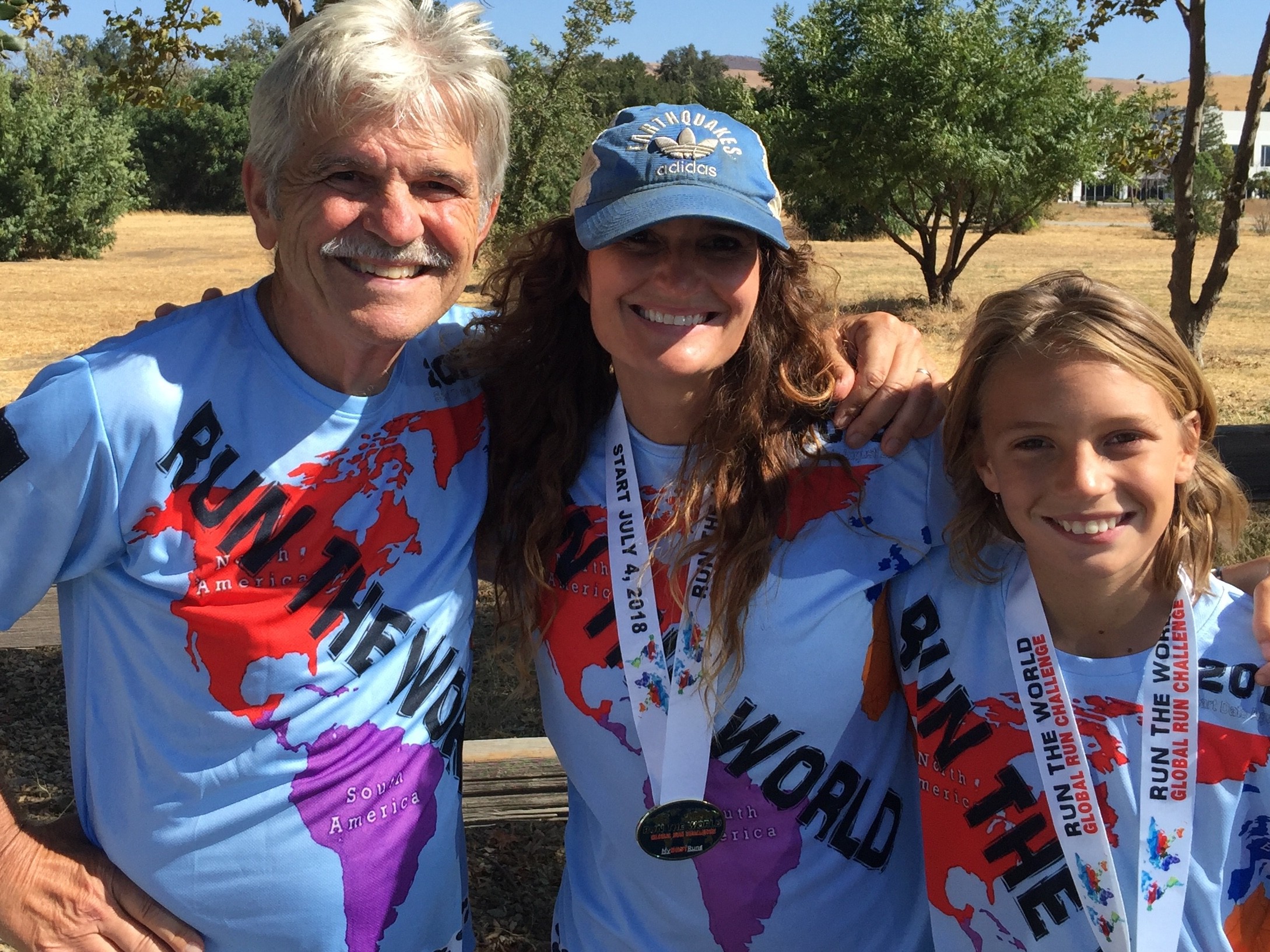
Lisa (second photo) and family lives in San Jose, California. She is our social media and newsletter editor. We celebrated Xmas with them before heading up to Oregon.
Both of my kids have run marathons, my wife has run a half marathon and many other races but after operations on both feet can’t run now (Catherine works out at the gym these days) and all my four grandkids run even including my two year old, Bear. Owen age 12 have already run a 5:52 mile. My son-in-law Justin has run a 1:27 half marathon.
We are a running family and have been forever. There is no better day than Christmas Day to get outside and get in a few miles. (Updated: Mike and I got in 7.1 miles through two inches of snow today.)
Two other members of our full time crew are Jaime and Manuel. They work at our La Piedad office.
Our webmaster Waitman Gobble keeps us all working and always is coming up with new features.
Gary Allen (Marathon Man Gary Allen) and Larry Allen (Larry Allen on Running) have signed on to do regular writing for us sharing their many years of running wisdom and knowledge with us. I am sure they will be getting out and getting in a few miles today.
Willie Korir is located in Nairobi, Kenya and has been sharing insights into what makes many runners in Kenya superstars. He has also run and logged 2851 miles for our three Run The World Challenges since July 4.
Our third Run The World team is not too far off of running and logging enough miles to circle the planet for the third time. I am so proud of our team.
Merry Christmas and Happy New Years to everyone. Be sure to get out today and let’s all make 2019 a super year. I know this is our plan here at My Best Runs.
(12/25/2018) ⚡AMPby Bob Anderson
Mumbai’s largest kid’s marathon received over whelming support Sunday December 23
Juniorthon 2018, Mumbai’s, largest kid’s marathon witnessed over whelming support from over 4000 kid’s, who ran to support ‘Right to Education Programme’ under Mission Education, by Smile Foundation.
There are four different distances for kids under 15 (.5k, 1k, 2k and 4K). The aim is to create awareness on the rise of Childhood Obesity & related diseases due to lack of outdoor activities and teach the importance of exercise and a healthy lifestyle by encouraging children to walk/run and get active each day.
The kid’s marathon, which took place on December 23, 2018 (Sunday) at MMRDA Grounds, Bandra, also witnessed participation from well-known celebrities and child actors like Amyra Dastur and child artists, Shivansh Kotia, Raj Anadkat (photo) and Divyansh Dwivedi.
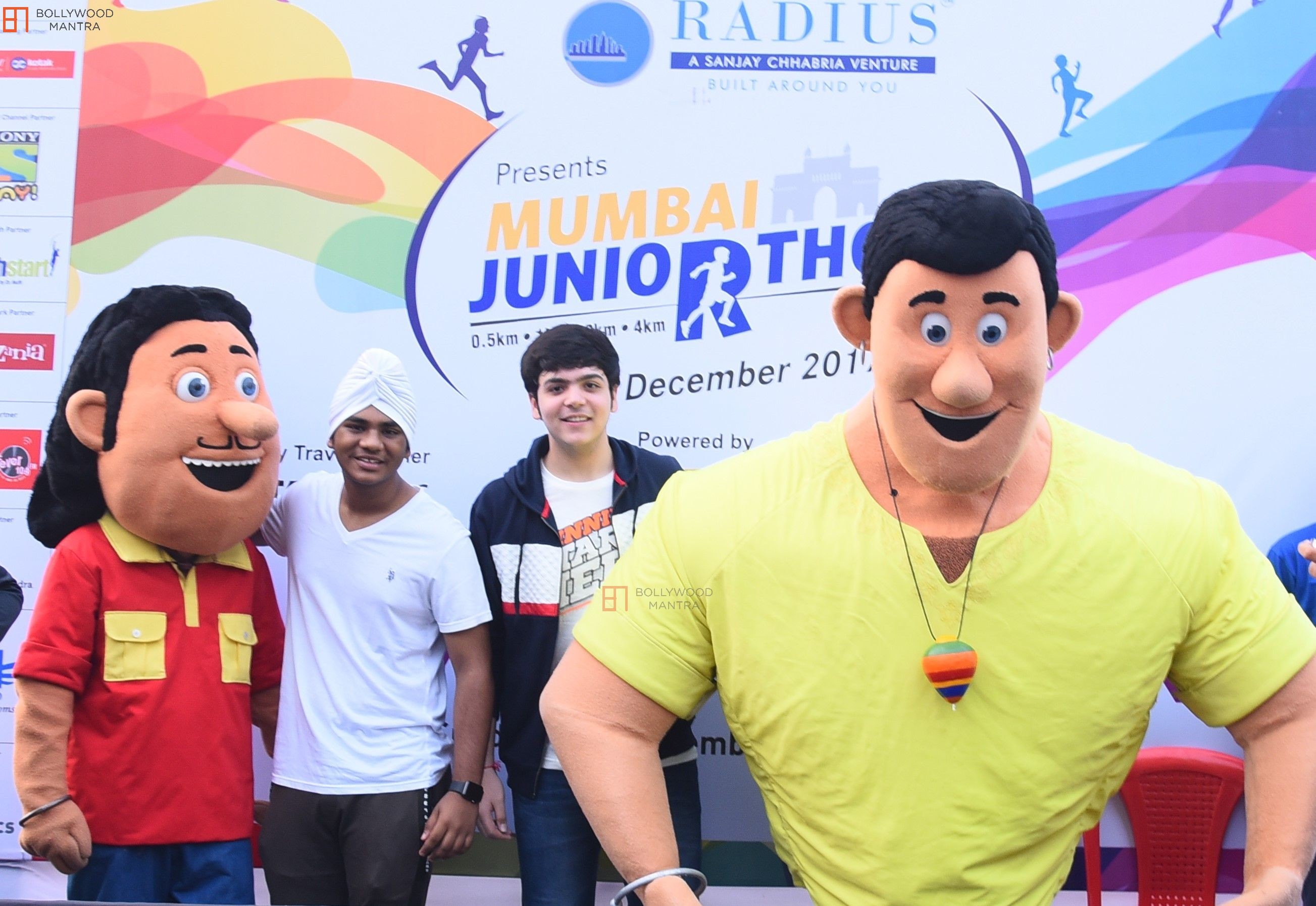
The event also saw a special performance by India’s youngest child magician Swarang Pritam Randive who performed for the little tots and encouraged them to dream big and come out of their homes to celebrate outdoor activities.
Juniorthon is categorised to accommodate various levels of runners considering age and distance. To support a good cause and promote a healthier future for children, the goal of this marathon is to discourage the over use of gadgets and encourage them to come out and play outdoor, facilitating visual development and engagement with the community.
Prior to the run Juniorthon organised training sessions staffed by fitness experts who introduced children to long distance running and taught them to avoid injuries and maintain stamina during the run.
(12/24/2018) ⚡AMPA new running podcast is going to start up January 10 from Strava
Strava is starting another running podcast beginning January 10. The fitness tracking app is about to unveil a new podcast entitled “Athletes Unfiltered,” for the runners and cyclists who use it.
It will be hosted by The North Face-sponsored ultrarunner Hillary Allen and feature interviews with extraordinary athletes and athletes in extraordinary circumstances.
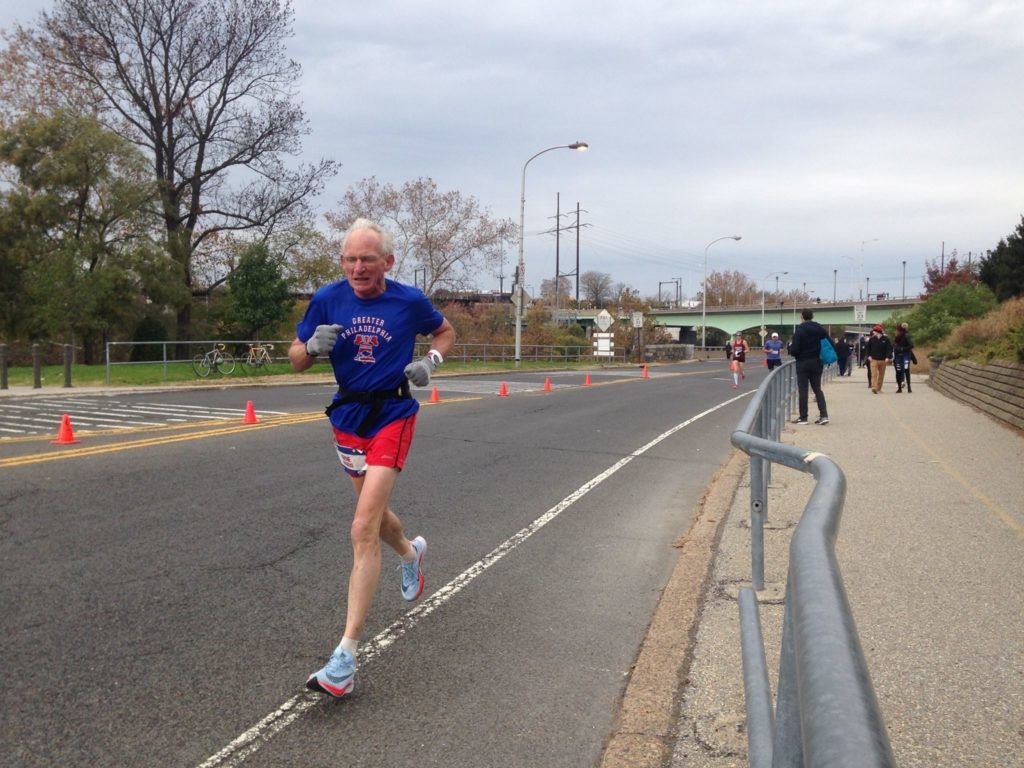
One of the first episodes will feature an interview with Gene Dykes (photo), who recently broke the late Canadian marathoner Ed Whitlock‘s WMA M70 marathon record with his 2:54:23 performance in Jacksonville, Florida.
Strava posted this on their website, “Athletes Unfiltered features normal athletes. They're good, inspiring people, daring enough to share their journey day after day, whether that's breaking a marathon PR or cutting a run short to desperately search for the nearest toilet.”
(12/23/2018) ⚡AMPFastest half marathon time by a Japanese woman in over 10 years was run today at Sanyo Ladies Road Race
The 37th annual Sanyo Ladies Road Race was held at the Okayama City circle course today December 23 in Okayama, Japan.
In the half marathon division, MGC Race 2020 Olympic marathon trials qualifier Honami Maeda (Tenmaya) won her first Sanyo title in 1:09:12, the fastest time by a Japanese woman in over 10 years. Her previous PR according to her IAAF profile was 1:10:22.
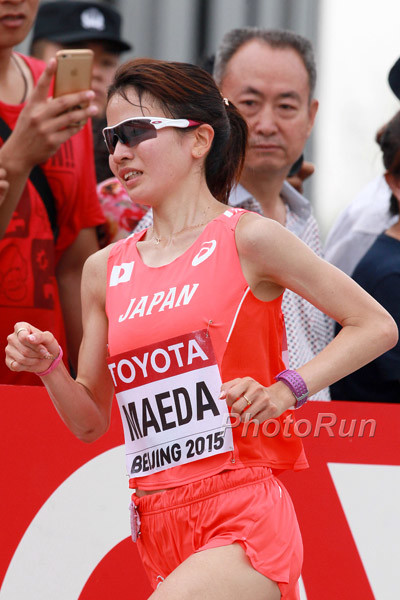
Dropping the lead pack just a kilometer into the race, Maeda ran solo the entire way to become the only Japanese woman under 1:10 this year.
Australian Ellie Pashley was 2nd in 1:09:20, with Maeda's teammate and fellow MGC qualifier Rei Ohara (Tenmaya) 3rd in 1:10:37. National record holder Kayoko Fukushi (Wacoal) was 6th in 1:11:32.
(12/23/2018) ⚡AMPA Journey in the world of extreme ultra running, Challenging The Impossible.
This new movie gets into the minds of the runners, to understand why they would undertake such a huge challenge and follow how they set about preparing for the task.
The Movie Breaking 60 was shot over a period of five months in the build up to and during the challenge days, the film explores the world of extreme ultra running.
In January 2017, 22 determined runners embraced the challenge of a single self supported effort over Hong Hong's grueling four ultra trails.
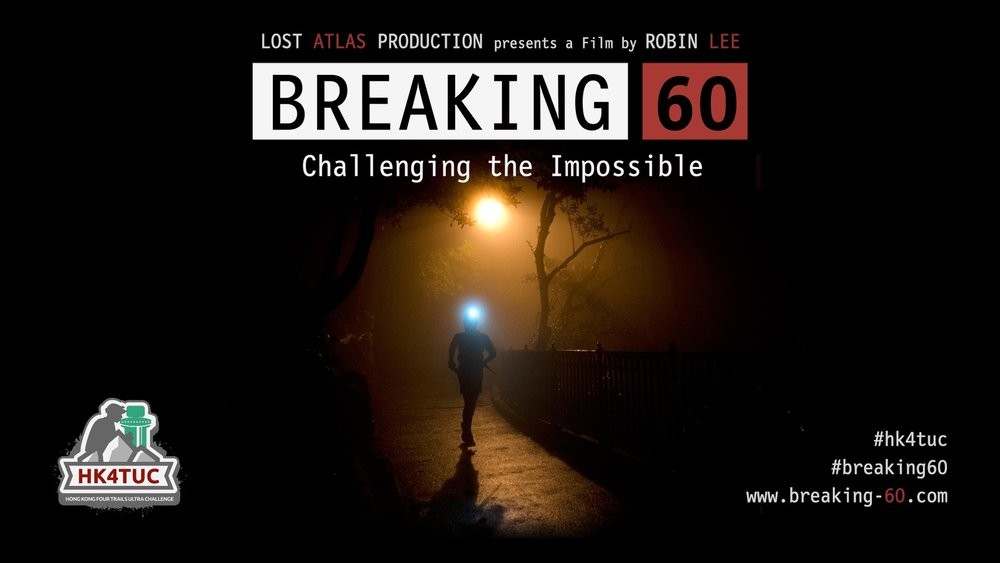
The movie Breaking 60 is the story of that challenge.
This movie has recieved raved reviews such as, “Finishing under 60 hours is more about the mind, more about stubbornness... just dealing with the pain,” wrote Scottie Callaghan.
(12/23/2018) ⚡AMPUS Olympic star Allyson Felix gave birth to her daughter November 28 who is now doing fine
Allyson Felix is the most decorated woman track and field star in U.S. Olympic history, sprinting to three medals (two golds, one silver) at the 2016 Games in Rio to bring her total Olympic medal count to nine.
Allyson Felix has shared her birth story with ESPN-W. The runner kept her pregnancy a secret for several months, continuing to compete when she was four months pregnant. The baby was due in January 2019, but at a routine checkup late last month, Felix was found to have high blood pressure and the baby’s heartbeat was alarmingly slow. Felix gave birth by C-section on November 28, and though baby Camryn is still in the neonatal intensive care unit, Felix says she is going to be OK. Felix lives in Santa Clarita, California.
Felix describes what a shock it was when everything didn’t go the way she thought it would. And she describes the NICU as being “like this whole other world that you never knew existed of people being fighters and dealing with incredible circumstances and somehow managing.”

“Every day I sit with my daughter in the NICU and watch her fight. Every day she gets stronger and more beautiful".
“If I come back and I’m just not the same, if I can’t make a fifth Olympic team, I’m gonna know that I fought, that I was determined, and that I gave it my absolute all. And if it doesn’t end up the way I imagined in my head, it’ll be OK. I just have to go for it, because that’s just simply who we are now.”
(12/22/2018) ⚡AMPThe marathon that 70-year-old Gene Dykes ran 2:54:23 was not sanctioned by the USATF and his world record will not be accepted
70-year-old Gene Dykes clocked 2:54:23 at the Jackson Marathon but it is not going to be accepted as an official world Record because the race was not sanctioned by the USATF. Gene posted this on Facebook.
“Before running the Jacksonville Marathon, I reached out to the race director for assurance that it was a suitable venue for setting a world record, and I received the response that "you should have a good shot at the record".
“I assumed that he was correct, but I was remiss in not doing my own homework. It appears that, although the Jacksonville Marathon (course) is certified by the USATF, the race was not sanctioned by the USATF, and both must be valid for recognition of records by USATF/IAAF.”
Many races do not pay the fee to be sanctioned by the USATF because they do not see the benefit. The larger races with elite runners have to be sanctioned and they do pay the fee.
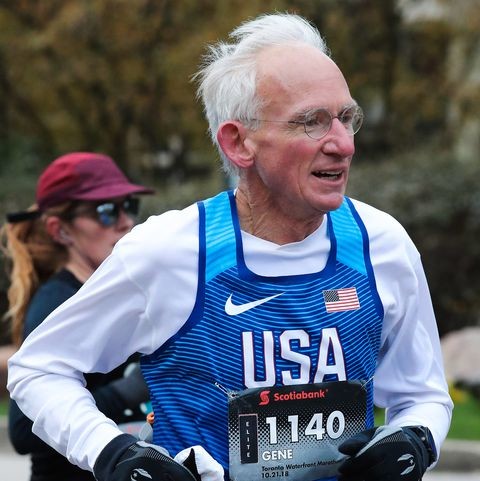
A race of 30,000 plus runners pay $15,300 to the USATF. A smaller race of 3000 pay $1460.
These fees have nothing to do with the course being certified. Most races know the importance of having their course certified. It appears in this case, Jacksonville paid to have their course certified but not the sanctioned fee.
This would have gone completely unnoticed and maybe the race Director did not realize Gene Dykes was going to break Ed Whitlock world record.
But Gene did and now it is not going to be accepted as an official record because this fee was not paid. Maybe in a case like this the fee could not be paid after the fact?
“Gene Dykes deserves the record,” says Bob Anderson “and there should be something that can be done to make this right. If it is just about money, we can pay that.”
Obtaining a USATF sanction involves filling out a sanction agreement to form a relationship between the sanctioned event and USATF. Basically, it means that an event has agreed to follow applicable USATF rules and will be afforded the benefits like insurance and other things as outlined on their site.
Gene continued on FB. “Thank you all so much for the nice things posted about my race. I am still proud of what I've accomplished - it just looks like it's not going to be "official". That said, I still have four more years to do it right, and, who knows, that might happen sooner than you think!”
”Let’s not give up on what you already did Gene. You ran 26.2 miles in 2:54:23 and it should be accepted as the official world record,” says MBR Bob Anderson. “This time is too amazing to ignore.”
(12/22/2018) ⚡AMPby Bob Anderson
8-year-old Nate Viands blasted through the NCR Marathon as he is battling Leukemia
“He just took off,” says his father, Scott Viands — an ultrarunner who accompanied Nate during that 26.2-mile race — in a story published Thursday in Runner’s World.
But beginning around mile eight, Nate’s sub-eight-minutes-per-mile pace propelled him ahead of his father. “Every once in a while at an aid station, I’d ask, ‘Did you see a little guy come through?’ and they’d be like, ‘Yeah, he’s 10 minutes ahead of you.’ ”
The young Pennsylvania resident felt sore the following morning after finishing the NCR Marathon in 3:32, but he’s experienced greater physical pain.
Just a month before turning 4 — while fighting symptoms such as dark circles under his eyes, nosebleeds, fatigue and fevers — Nate was diagnosed with leukemia. The next nine months saw intensive chemotherapy treatments, which made his energy plummet so low that he had difficulty walking up stairs.
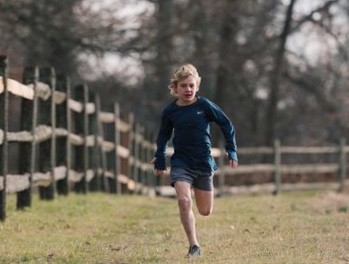
“It’s not really something you’re expecting to ever, ever hear or deal with, you know? It changed our lives forever,” Viands tells Runner’s World of Nate’s illness.
But the treatments became less intense, and less frequent. And although Nate won’t know if he’s clear of cancer until June, he regained energy and strength — and took to sports.
From a young age, skateboarding was a passion, then it was riding bicycles. But in 2015, he began running by accident. One day, at age 5, he had intended to ride his bike alongside his father, who was going on a run in a park near their home — but they had forgotten to load the bicycle in the car.
“I’ll just run with you,” Viands recalls his son saying. That day, he ran a few miles, with natural form — and eventually, running replaced biking.
The NCR Marathon is Baltimore's oldest continuously running marathon presented by the Baltimore Road Runners Club. The 2018 race took place November 24.
(12/21/2018) ⚡AMPDefending champion Gopi Thonakal is ready to better his timing at the upcoming Tata Mumbai Marathon
Gopi Thonakal is keen to better his timing at the upcoming Tata Mumbai Marathon in order to improve his chances of qualifying for the 2020 Tokyo Olympics.
Gopi, 30, who created history by becoming the first Indian man to clinch the gold medal in the Asian Marathon Championships in 2017, clocked 2:16:51 to emerge as the fastest Indian at the last edition of the Mumbai Marathon. He now wants to better it on January 28.
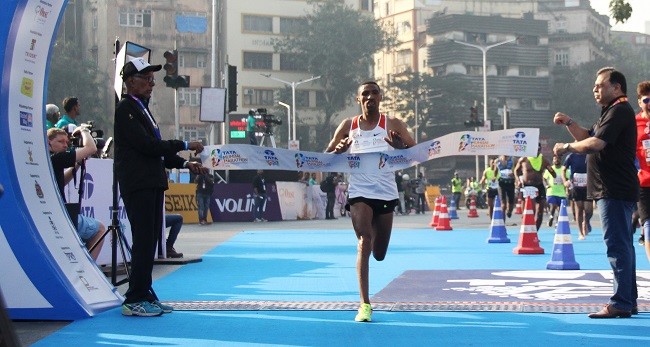
"I have been practising for the Mumbai Marathon for the last six months. My aim to better my own mark. It's very crucial for me as it will help me in qualifying for the Tokyo Olympics," Gopi said during an event to the launch the Asics race day jersey ahead of the 2019 Tata Mumbai Marathon at a city hotel yesterday.
(12/21/2018) ⚡AMPJoe Adamson is preparing to run a gruelling 250Km race in the punishing heat of the Sahara Desert.
A soldier who played for Bangor Rugby Club is spending his Christmas and New Year in Afghanistan training to run a gruelling 250Km race in the punishing heat of the Sahara Desert.
Captain Joe Adamson was deployed to Afghanistan some weeks ago.
Joe has set himself a target of competing in one of the most arduous and exhausting challenges on the planet – ‘The Marathon de Sables’.

This race, which translates into ‘Marathon of the Sands’ sees around 1000 runners compete in the ultra-marathon over a distance of 250km (156 miles) equivalent to six regular marathons, across the burning sands of Morocco’s Sahara Desert, with temperatures reaching 50 C degrees.
The runners aim to complete the race inside six-days and during that time remain self-sufficient throughout, carrying all their essential equipment, including cooking equipment, food and sleeping bag in the kit bag on their backs.
Joe is a platoon commander with the Gurkhas and it is his job to plan and execute Advisor Force Protection missions. The UK troops are out in Kabul providing protection and security to the NATO advisors and mentors.
(12/21/2018) ⚡AMPAaron Saft has created a 24-hour race on New Year´s Eve at North River Farms
A new race has been created in Mills River that allows runners to literally run into the new year — provided they are willing to run for six, 12 or 24 hours straight.
On New Year’s Eve, around 50 runners will descend on a 1.5-mile dirt loop track around North River Farms. Starting at 12 a.m. Dec. 31, competitors will run around the loop, trying to complete as much distance as they can before the new year.
Aaron Saft, a veteran trail and ultramarathon runner and Mills River resident, thought it would be a good way to ring in the new year. Saft is a race director, the owner of Root RX running store in South Asheville and president and founder of the Run 828 Foundation — a nonprofit supporting healthy, active and outdoor lifestyles in Western North Carolina.
Four events will take place on the same loop: a 24-hour solo run and relay, a 12-hour solo run starting at noon and a six-hour solo run starting at 6 p.m. All races will finish at midnight Jan. 1, with the award ceremony taking place at 12:15 a.m.
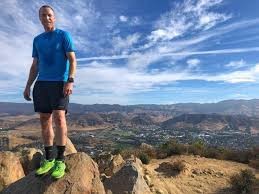
“It allows people to accomplish whatever goal they have in mind,” said Saft. “Get a new distance record, try to go farther than they ever have before. So it’s really individualized.”
Saft said most runners shoot for 100 miles in 24 hours. All runners who complete 100 miles will receive a custom race logo buckle.
There’s very little sleep involved. Some will stop and grab food periodically and take a walk break, but others will run the entire time.
“You can walk the whole way if you want to,” said Saft. “It’s really up to the individual.”
(12/21/2018) ⚡AMPHitting the wall, what to eat and your longest training run were the first three questions for Marathon Man Gary Allen File 2
I am going to cover a lot of ground in my column here. Here are my thoughts on three questions I have been asked many times.
1. What is the best thing to do if you hit the wall at 20-miles in a marathon?
Firstly, you shouldn’t hit the wall in a marathon, if you do you are probably undertrained or you likely ran far beyond your abilities, especially in the early miles.
Rather than tell people what to do when they hit the wall I’d like to share how not to. In most cases you need to train for years to harden you mind and body to the rigors of what you are undertaking. There are no short cuts to avoid hitting the wall besides training hard and racing smart.
2. What should you really eat and drink during the two days before running a marathon?
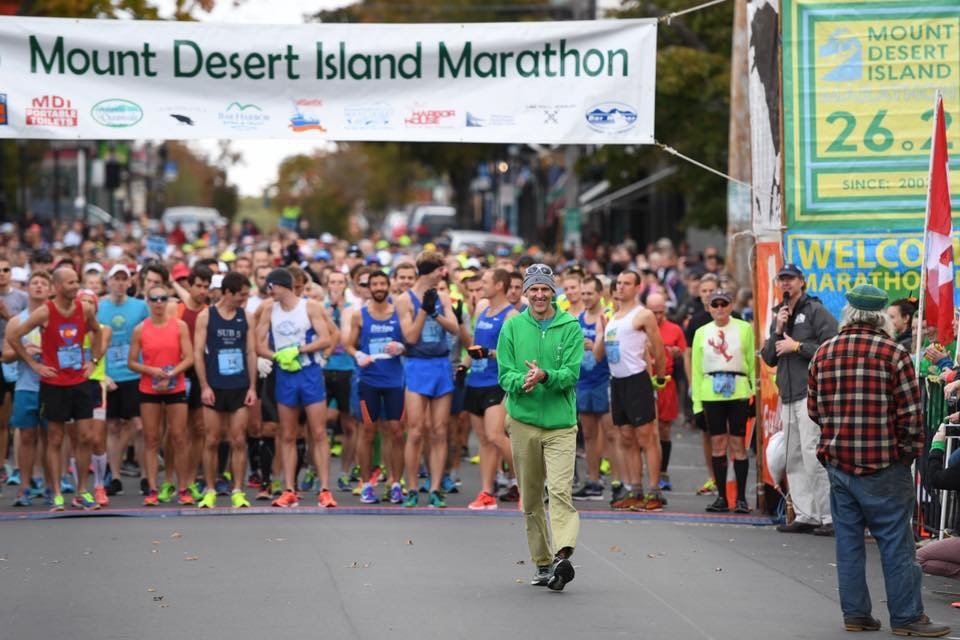
Eat and drink whatever you typically eat or drink . Sadly in this internet age there is so much information flying around it actually turns marathon running into the proverbial alligator under your bed it’s not.
Remember a marathon is a man made distance and if you turn it into something more than the long road race it is, you unintentionally give the race mental power you’ll need to run. The moment you start feeling bad, because of all this information that is pinging off your brain about what you should have eaten or drank, it is like being handed an anchor.
3. How long should you longest run be training for a marathon, when should it be done and at what speed?
You should be able to cover 28 -30 miles fairly comfortably. These long runs shouldn’t be timed but run at a very comfortable pace whatever that is. Long runs (aka time on your feet) are to help you build endurance and efficiency and not speed.
As far as frequency, I particularly hate weekly training schedules. Your body doesn’t know Sunday from Wednesday, instead I tell people I have coached to break down running into basic ingredients such as long runs, hills, speed etc and make sure you add all of these basic ingredients about every 10-12 days.
Running is not rocket science no matter how many people try to convince you otherwise. My advice is to go have fun and because you are having so much fun you’ll get much better at playing!
(Marathon Man Gary Allen is a regular My Best Runs column. Gary Allen is one of a few runners who have run a sub three hour marathon for each of the last five decades. He is also a race Director and coach.)
(12/21/2018) ⚡AMPby Gary Allen
Michael Wardian will be running the World Marathon Challenge once again, he holds the world record averaging 2:45:57 for the 7 marathons
The World Marathon Challenge is the only annual event that offers the opportunity to run 7 marathons on 7 continents in 7 days.
The first marathon occurs within the Antarctic Circle on mainland Antarctica and the final marathon takes place in Miami, North America.
Michael Wardian holds the world record set in 2017. His cumulative marathon time of 19:21:36 hrs (or average marathon time of 2:45:57 hrs) is outstanding. He did not compete last year. This year's Challenge starts January 31st.
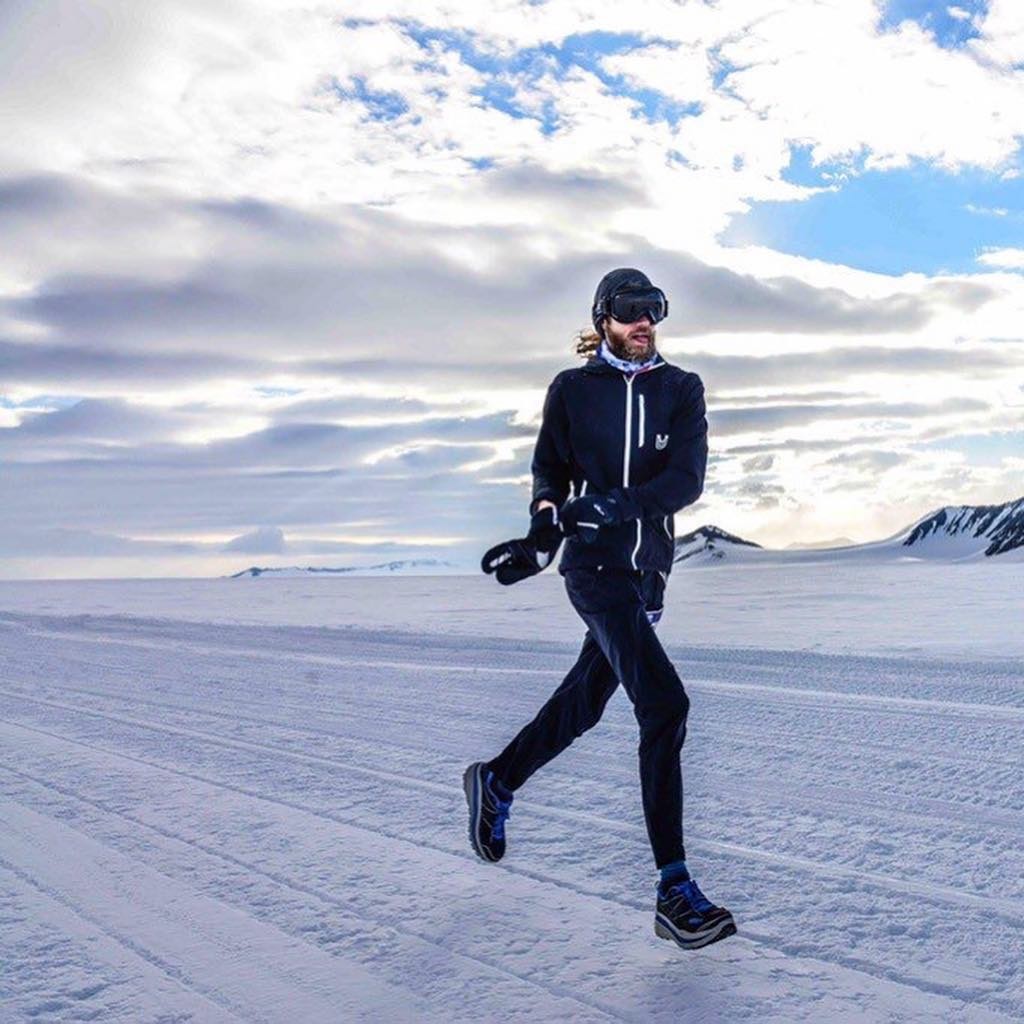
Just today Michael posted on his FB page. "I am beyond excited to announce I have gotten a spot for 2019. Running 7 marathons in 7 days on 7 continents is without a doubt one of the most incredible things I have gotten to do and I cannot wait to see what is possible in 2019.
Thanks Richard Donovan (director of event) and team for allowing me the opportunity and to everyone that supports me. I can’t do these things without you," Michael wrote.
The entry fee for this event is 36,000 Euros ($40,087US).
(12/20/2018) ⚡AMPby
Tokyo 2020 Olympic Torch Relay will start it's 121 day journey March 26, 2020
The concept for the Tokyo 2020 Olympic Torch Relay across Japan will be "Hope Lights Our Way", uniting the Japanese people around messages of supporting, accepting and encouraging one another.
The Olympic flame is often associated with a message of peace and hope, as it is carried around the host nation, and as such has become one of the most powerful symbols of the Olympic Movement.
In 2020, the Olympic flame will not only symbolise the sunrise of a new era spreading the hope that will light our way, but will also serve to spread the joy and passion of the Japanese around the Olympic movement as the Games approach.
Upon its arrival in Japan, the Olympic flame will initially be put on display at various locations in the Tohoku region, to help underscore this message of hope in the areas affected by the 2011 earthquake and tsunami.
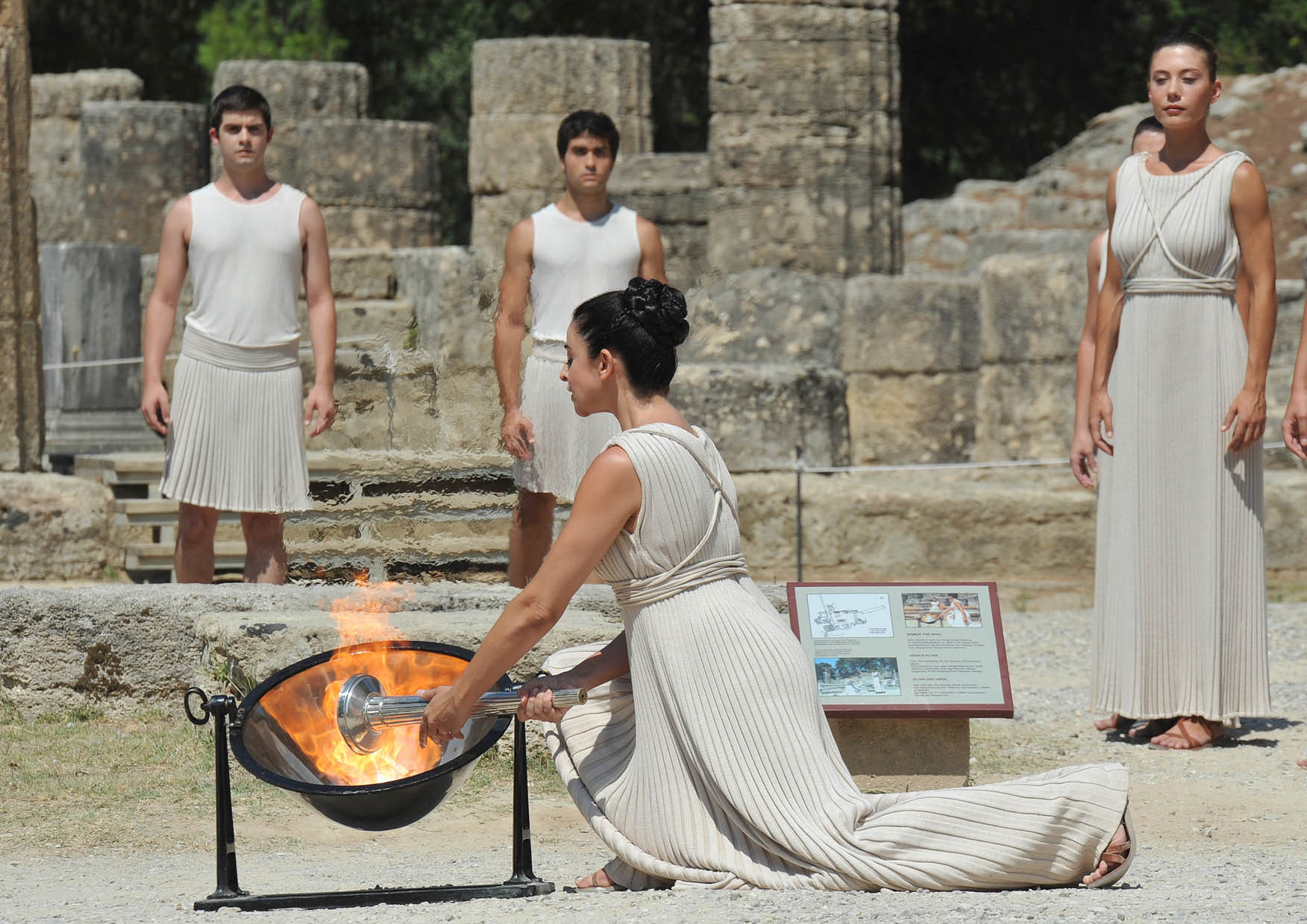
The Relay will travel to all 47 prefectures in Japan, showcasing the varied cultural and scenic attractions of each region.
The Relay will commence on March 26 2020 in Fukushima Prefecture, and start its journey southwards. The torch is likely to traverse the inland prefectures of central Japan against the backdrop of Japan's famous cherry blossoms, which typically bloom there in early April.
The Relay will then proceed southwest until it reaches the islands of Okinawa, the southernmost prefecture of Japan, in early May.
It will make its way back up to the north of the country, passing through Kyoto in late May, all the way up to Hokkaido, where it will arrive in mid-June. The Relay will then turn southwards again and complete its long journey in Tokyo after spending three days in each of the four prefectures outside of the capital that are hosting events during the Olympic Games Tokyo 2020.
The torch will traverse Japan for a total of 121 days. The precise route of the Relay will be firmed up during the coming months and announced in 2019, following approval by the IOC.
March 12 is the lighting ceremony in Olympia Greece and the Greek leg of the Tokyo 2020 Torch Relay will continue until March 19 when there is a handover ceremony in Athens, Greece.
The Flame arrives at Matsushima Airfield, Miyagi, Japan on March 20, 2020.
(12/20/2018) ⚡AMPSarah Reinertsen has been the only amputee to have completed the World Marathon Challenge
For a long time, people with disabilities were defined by what they couldn't do -- Sarah Reinertsen is choosing to be defined by what she can do as an amputee.
She's not just breaking down barriers, she's blazing a trail for all who come after her.
"Growing up, I knew I was different, right, and I was OK with being different but I was not OK with being told I couldn't do something," Reinertsen said.
"I was born with a tissue disease that meant that my thigh bone stopped growing, so although I had two legs, my left leg was extremely shorter than my right leg."
Reinertsen and her family decided to amputate her leg when she was just seven years old. "That was a really hard time for me," she said.
From age 7 to 11, Reinertsen struggled to make peace with her new reality. "I was the only kid in my entire school that had a physical disability that you could see," she said.
"I had coaches that wouldn't let me play with the other kids on the main field. They would make me go kick a soccer ball on the side of the wall by myself and so for many years of my childhood I used to believe that narrative. I used to believe that I wasn't good enough."
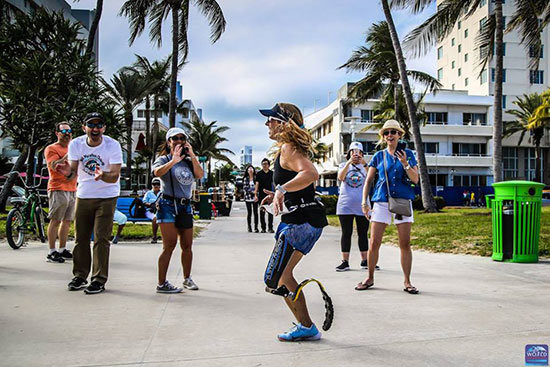
That all changed when she went to one of her dad's 10k races -- like she did most weekends. But this race changed her life.
"There was a woman in the race who was an amputee and she was doing the 10k and I just thought, I had never seen another amputee on one of these road races with my dad and so I just thought 'wow, if she can run in this six mile race, maybe I could run and do a six mile race,'" Reinertsen said.
She's been running ever since. She learned the ins and outs of prosthetics and backed by Nike and Ossur Prosthetics, Reinertsen ran one race after another. But that was just the beginning.
"I knew this guy named Jim McClaren who had done an Iron Man on a prosthetic leg and I was like 'Jim that's so cool that you did an Ironman, I want to do an Iron Man just like you' and he said 'well I don't know of a girl on a prosthetic that can do it' and I was just like 'are you kidding, you do know a girl because you're looking at her, I'm going to do the Iron Man,'" Reinertsen said.
She not only did the Iron Man, she qualified for the world championship in Kona, Hawaii. She was one of only 10 in the physically challenged division and the only woman.
"I just believed that I could do it," she said. That belief has knocked down barriers all over the world.
She's also the only amputee to have completed the World Marathon Challenge. That is running seven marathons on seven continents in seven days.
"It's sort of like a long race with sort of like naps in between," she said.
When she's not taking the athletic world by storm herself, Reinertsen is working with Nike's Innovation Kitchen, designing sportswear that gives independence to anyone who wants it, regardless of the physical challenges they may face.
(12/20/2018) ⚡AMPFor the third year in a row, Caster Semenya went undefeated in the 800 meters
For the third year in a row, Caster Semenya went undefeated in the 800 meters. And though there was no global championship to cap it off, this was her most impressive year yet as she broke 1:56 five times and broke 1:55 three times (after never having broken 1:55 prior to 2018).
Only one woman in history had ever accomplished either of those feats: Pamela Jelimo, who broke 1:55 four times and 1:56 eight times during the 2008 season.
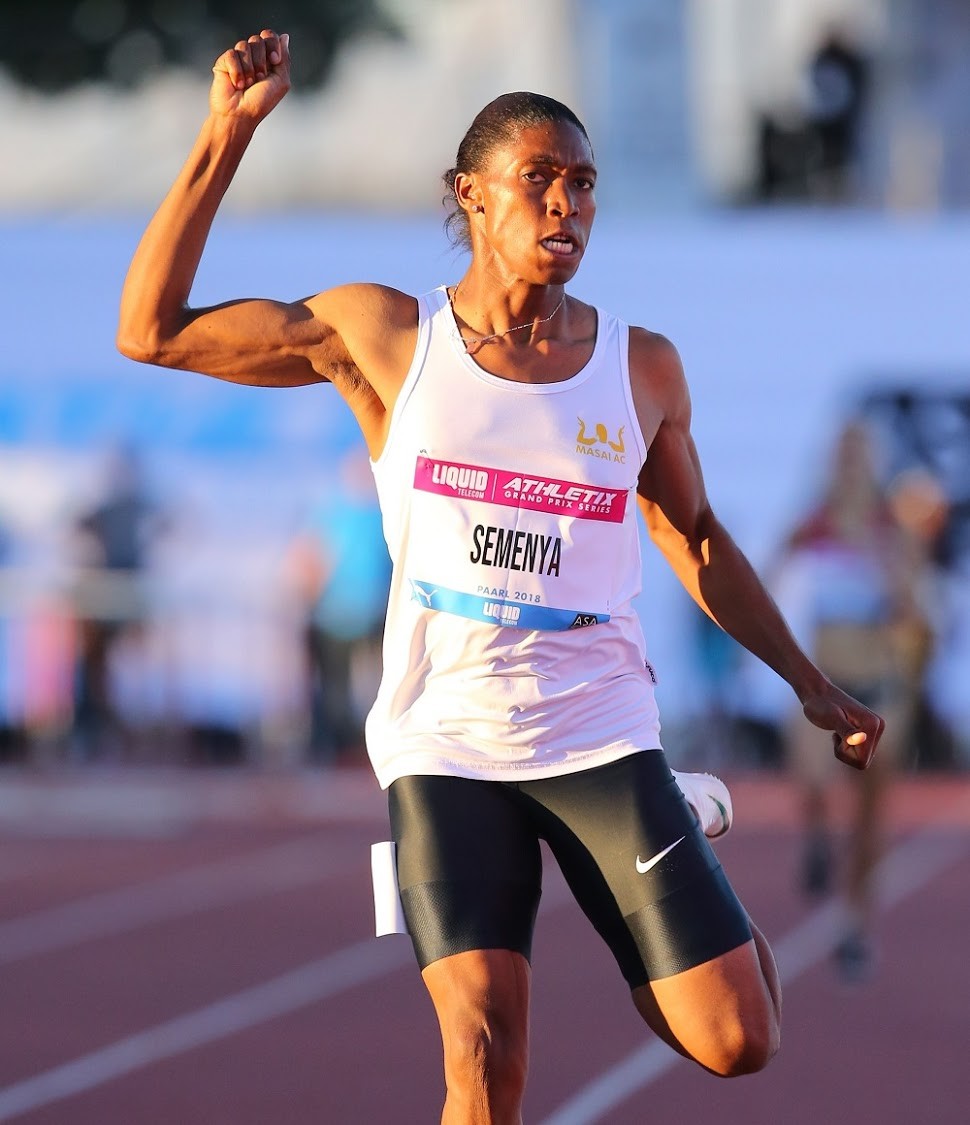
One of the reasons Semenya ran faster in 2018 was that, more so than in previous years, she chose to cut loose and chase times rather than solely concentrating on wins.
At the Diamond Leagues in Paris and Monaco and the Continental Cup in Ostrava, Semenya — running without a pacemaker — went out hard from the gun and was rewarded with the three fastest times of her life, including a sparkling 1:54.25 PR in Paris that ranks her fourth on the all-time list.
For much of her career, Semenya from South Africa has faced criticism for “sandbagging” — she made winning look so easy that some thought she was intentionally holding back. Maybe a (very fast) pacemaker could have helped her this year, but the Semenya we saw in 2018 was one that pushed herself to her limits.
The question now becomes: have we seen the last of this version of Caster Semenya? The IAAF announced that it will be implementing new eligibility regulations for the female classification that include testosterone limits for women in events between 400 and the mile (the events that Semenya just so happens to run).
Semenya challenged the ruling, with a decision due by the Court of Arbitration for Sport due in March. That decision will determine the future of the women’s 800, because it has become clear over the last three years that, as things stand, no non intersex or transgender woman is beating Caster Semenya.
(12/20/2018) ⚡AMPTokyo 2020 confirms to install Olympic flame cauldrons in stadium and waterfront
Reports that cauldrons would be established both in the Olympic Stadium and on Tokyo's waterfront near the Yume-no-Ohashi Bridge were confirmed at a meeting of the Tokyo 2020 Organising Committee.
Under the Olympic Charter, the flame must be in public view for the entirety of the Olympics.
Tokyo 2020 organisers stated, "So that as many people as possible can view the flame, two separate cauldrons will be deployed.

"One will be set up inside the Olympic Stadium and used only during the Opening and Closing Ceremonies; another, to which the flame will be transferred after the Opening Ceremony, will be placed in Tokyo's bustling waterfront area, allowing the wider public to view it and experience the spirit and excitement of the Games.
"The flame will only be displayed in one location at a time."
"A number of locations, including Games venues, live sites and tourist attractions in Tokyo, were considered as the site for the cauldron outside of the Olympic Stadium.
"Tokyo 2020 took into account the IOC's stipulation that the location should be a symbolic site which would allow as many people as possible to view the flame without having to purchase tickets for the Games.
"Considering all these factors, as well as security and operational issues, it was decided that the Ariake side of the Yume-no-Ohashi Bridge in the waterfront area would be an ideal location.
(12/20/2018) ⚡AMPStrong field is expected at Osaka Women´s Marathon
2016 winner Kayoko Fukushi, who will be running her first marathon since the Rio Olympics, and the duo of Tomomi Tanaka and Rei Ohara, who went head-to-end until the final meters of the 2016 Nagoya Women's Marathon are running too.
Ohara is already in for the MGC Race (Marathon Grand Championship), but the rest of the home crowd will have to be under 2:28:00 if among the top three Japanese women and under 2:27:00 if in the next three.
Hanae Tanaka has a slightly easier route, only needing to clear 2:28:20 to get in via the two-race sub-2:28:00 average the same way Ohara did in Berlin this year. With only eight women qualified so far versus twenty-one men hopes are high for a few more to join the list and bring the women's numbers up at least half the men's. Highest potential among the first-timers is Natsuki Omori, a team mate of last year's winner Matsuda.
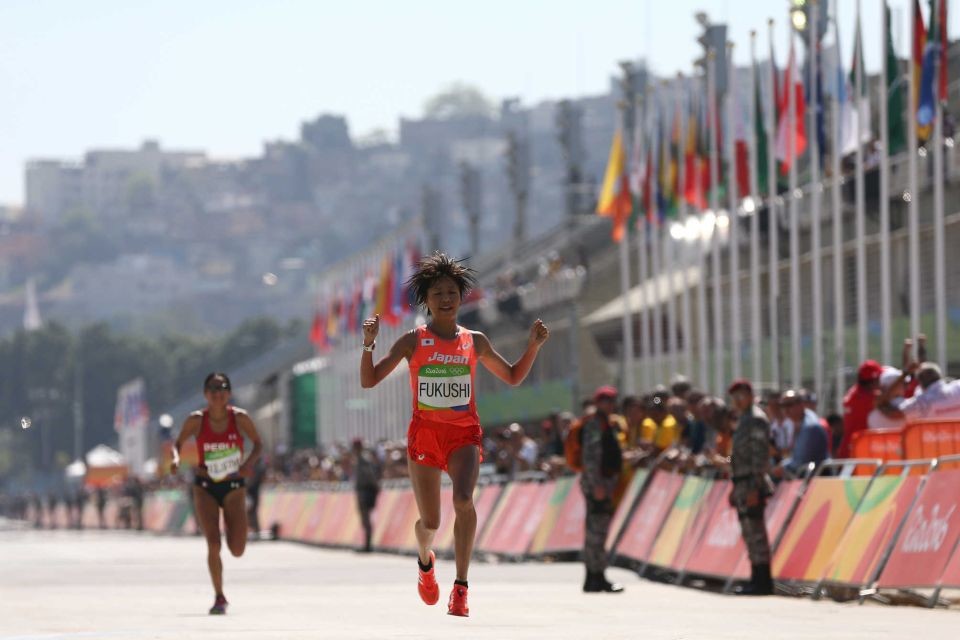
Ethiopian Sutume Asefa Kebede has the best relatively recent time among the internationals in the field with a 2:24:00 in Dubai 2016, but the probably favorite to push the front end of the race is 2018 Prague Marathon winner Bornes Chepkirui of Kenya with a 2:24:19 best from her Prague victory. Three other Africans are positioned at the 2:26 to 2:27 level, perfect to help pace the Japanese women along to MGC marks. Look for more coverage closer to race date.
(12/20/2018) ⚡AMPTimothy Ritchie will run the Boston Marathon for the second time and hopes to finish strong this year
Tim Ritchie pulled out a baseball analogy when describing his success in past marathons. "I'm 2-3," Ritchie said on Friday. "I've had two good ones and three bad ones. I'd like to even the score and bat .500 Monday."
Ritchie, 30, of New Haven will run the Boston Marathon for the second time. His last time in Boston was one of the bad ones — it was his first marathon, he went out too hard and struggled in the last 10K.
But his last marathon was one of the good ones — in fact, it was the best. Ritchie won the U.S. 2017 national championship at the California International Marathon Dec. 3 in Sacramento in 2:11:56, a personal best by close to three minutes. Only Olympian Galen Rupp, who won the Chicago Marathon in 2:09, ran a faster time by an American in 2017.
Ritchie, who grew up in Worcester, went to Boston College, where he starred on the track and cross country teams. He was an assistant at BC for the track and cross country teams until the fall of 2016, when he left the job and moved to New Haven with his fiancee and started to concentrate on his running.
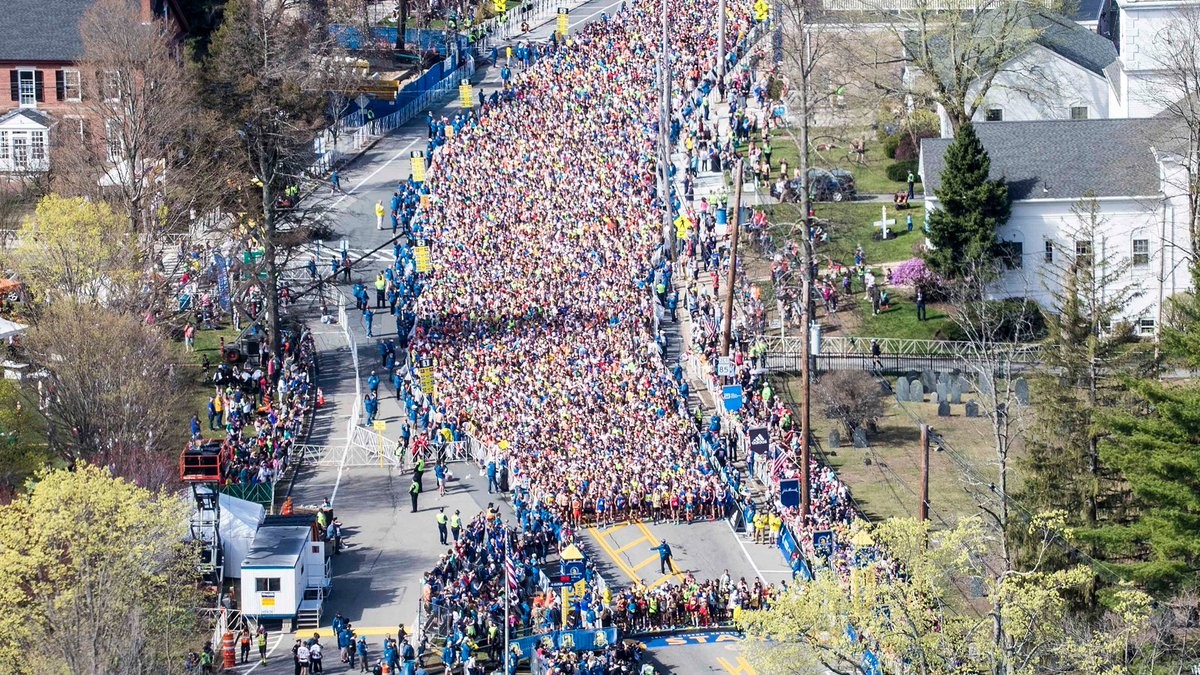
In Boston in 2013, he finished in 2:21. At the Olympic Trials in 2016, he finished in 2:22 and ran a similar time at New York City later that year.
"I would be good for 20 miles then collapse over the last 10K," he said. "You've got to learn from your mistakes — or even if there weren't mistakes, you always have to try to improve, in the training and the fueling.
"For CIM, the training was really consistent. Higher volume workouts were the key. We didn't really have these major long runs but we had a lot of kind of long runs at a good pace. Like 16-18 miles, maybe twice a week."
(12/20/2018) ⚡AMPDon’t use winter as an excuse instead make it a reason to go outside and run says Marathon Man Gary Allen File 1
I get lots of questions about winter running. Many wonder about traction on ice and snow or even how to dress in cold temperatures. At our just run Millinocket Marathon & Half held in Northern Maine the air temperature was between 4F and 6F at the start depending if you were standing in the sun or not.
It was pretty icy on the Golden Road as runners headed north towards Mt Katahdin. (pic).
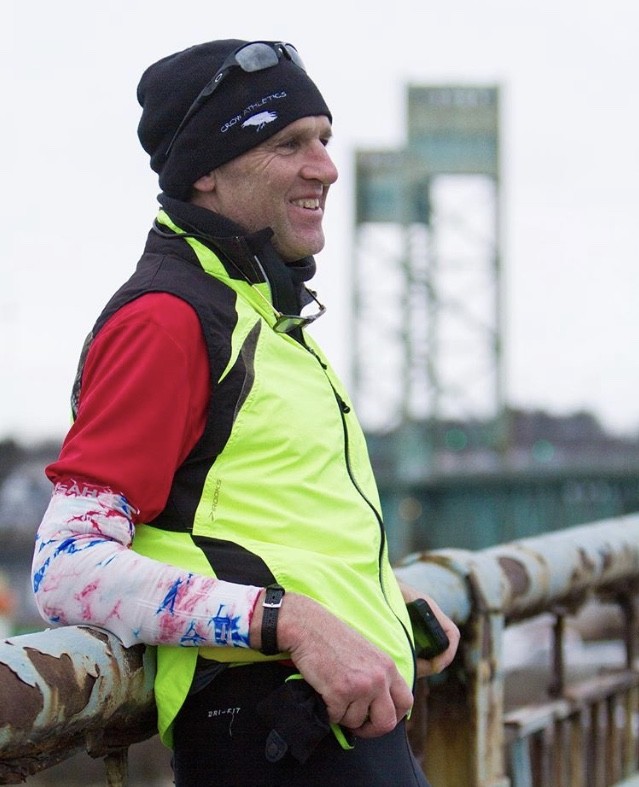
The fact is that running on ice is not that difficult in standard running shoes. When we run, vs when walking, our individual foot strikes are in contact with the ground for much less time, meaning we are almost already falling forward, coupled with the fact that when running we exert about 1.5 times of our body weight in down force per stride, which makes us into traction machines. The tricky part of running on ice and snow is turning or stopping. This is when we fall.
As far as what to wear? In temps below 10F it’s always about layers. For example a tech tank top, a tech short sleeve, a tech long sleeve, plus a wind jacket on top. Tights plus wind pants on the legs, two hats and face protection, if windy, and gloves with mittens over and you’re good to go!
As I like to tell runners, don’t use winter as an excuse instead make it a reason to go outside and run!
(Marathon Man Gary Allen - Read more from Gary here at My Best Runs. Gary is one of only a few marathoners in the world who has run a sub three hour marathon in each of the last five decades. In 2020 he wants to make it six. No one in the world has done that.)
(12/19/2018) ⚡AMPby Gary Allen
Best Racing Moment of 2018 and My Best Runs 2019 World Best 100 Races were announced today
My Best Runs "Best Racing Moment in 2018" and the My Best Runs "2019 World Best 100 Races" were announced today in Mountain View, California at the My Best Runs (MBR) headquarters.
First on the agenda was the announcement of the 2018 Best Racing Moment. MBR founder Bob Anderson stated, "Eluid Kipchoge was all smiles as he crossed the finish line at the Berlin Marathon September 29."
"He had just smashed the world marathon record clocking 2:01:39. Eliud ran the last 17k without pacers, pushing himself, taking off one minute and 18 seconds off of Dennis Kimetto's record."
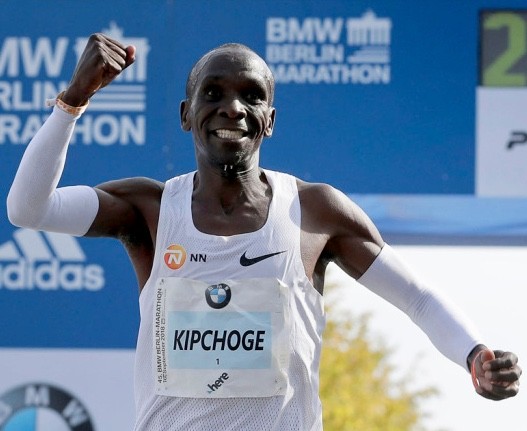
"The world has rarely seen one event so dominated by one man, Kenya's Eliud Kipchoge," says Bob who also was the founder of Runner's World magazine (1966) and publisher for 18 years.
Eliud has won many awards this year including World Athletes of the Year at the IAAF Awards.
Next up on the agenda was the annoucement of the 4th Annual My Best Runs 2019 World Best 100 Races.
"There are so many good races in the world. This list could easily be much bigger. However, as we have done now for four years, we have narrowed it down to the top 100," stated Bob.
The featured race at 44 of the best 100 are marathons. There are 20 half marathons and 14 10ks. There is the Western States 100 miler and the Comrades Ultra marathon in South Africa.
The shortest race is the New Balance 5th Avenue Mile in New York City. The longest is the 156 mile Marathon Des Sables coming up March 5 in Morocco.
Most offer prize money totally million of US dollars. The Standard Chartered Dubai Marathon coming up January 26 is offering $1,316,000. This marathon which was first held in 2000 top four men at the 2018 race all ran under between 2:04:00 and 2:04:06. Four women ran between 2:19:17 and 2:19:53.
"It is good to see over $21 million (from races MBR are featuring) in prize money being offered runners," says Bob. "Running is what these runners do and the money is well deserved and important for our sport."
Of course the Berlin Marathon is one of our top 100 but so is the Valencia Half Marathon (Spain) where Abraham Kiptum broke the world half marathon record in the 2018 race by clocking 58:18.
The Birell 10k Race in Prague, CZE also made the list again for the 4th year. 18-year-old Phonex Kipruto from Kenya clocked 26:46 while Caroline Kipkirui clocked 30:19. "This is one fast evening race and obviously belongs on our top 100 list," stated Bob.
The list has races from 23 different countries.
"You can not go wrong in running any of these races," says Bob Anderson. "Your biggest challenge in many of these races will be to be able to be on the starting line. But if you can get in, you will have a blast."
(12/19/2018) ⚡AMPby My Best Runs
Sara Hall will join women´s Elite 2019 Boston Marathon Field
Sara Hall and reported yesterday Jordan Hasay will join defending champions Desiree Linden and Tatyana McFadden on the starting line of the 123rd Boston Marathon on Monday, April 15, part of the event's elite women American field.
John Hancock, the financial services company which manages and bankrolls the race's top athletes on behalf of the Boston Athletic Association, reported earlier today that Hasay and Hall would be part of a 29-athlete elite American field.
"American distance running has never been stronger, and we're honored to support this talented U.S. elite team to showcase their dedication and passion for being the best of class," said John Hancock chief marketing officer Barbara Goose.
"With defending champions Des Linden and Tatyana McFadden leading the way, all runners are sure to persevere in the world's most historic race. We'll be cheering for everyone on Patriots' Day."
Hasay, 27, whose 2:23:00 marathon debut in Boston in 2017 remains the fastest-ever by an American woman, also signed up for the 2018 edition of the race but was unable to start due to a stress reaction in her heel.
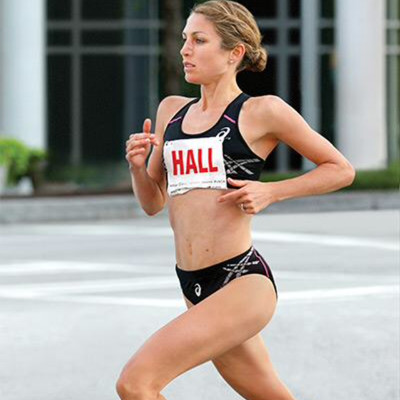
She had backed up her Boston performance with a 2:20:57 in Chicago in October, 2017, but has not run a marathon since. Hasay was the 2017 USA 15-K and 20-K road running champion.
Hall, 35, was the 2017 USA marathon champion and is the only American athlete in history with national road racing titles from the mile to the marathon. She ran a personal best 2:26:20 at the Scotiabank Ottawa Marathon last May, but dropped out of the Mainova Frankfurt Marathon last October after running 25 kilometers with a "tweaked" peroneal, according to her official Twitter account.
(12/19/2018) ⚡AMPMarios Giannakou from Greece was the youngest finisher in one of the most difficult races in the world at Al Marmoom
Marios Giannakou is a 26-year-old runner from the city of Drama in Macedonia, Greece. His extraordinary story of perseverance, as he transformed himself from a smoker into an ultra-fit runner, can serve as an inspiration to all.
He was the youngest finisher in one of the most difficult races in the world, the 270-kilometer (168 mile) “Ultra Marathon”, which took place in the deserts of Dubai between December 11–15.

Giannakou wasn’t always a fit athlete who loved challenges. Weighing more than average and a regular smoker, he changed his attitude and life and began running at the age of 22.
Speaking with the Greek Reporter, Giannakou says that he never saw running as a simple athletic competition, or a personal challenge where you try to achieve the fastest time.”It is an activity where you are on your own. You have the time to think and solve problems for yourself,” he says.
His ultra-long distance running adventure began in 2015, when he participated in several competitions in the region of Rhodopi in Greece’s Thrace. He ran distances of 82 kilometers (51 miles) and even 161 kilometers (100 miles) in separate races there.
In early 2018, he decided to run with his friend Chronis in the Arctic for the distance of 150 kilometers (93.2 miles). ”We finished together, we had the same time” he said proudly.
Asked about his decision to participate in Dubai’s Ultra-Marathon, Giannakou laughed.
”We saw the cold, now it was time to see how the desert is” he said, laughing over the extraordinary accomplishments he has had in less than one year.
(12/19/2018) ⚡AMPMeb Keflezighi is going to be a pacer at the 2019 Yuengling Shamrock Marathon Weekend
Event organizer J&A Racing said that Keflezighi will serve as a pacer for the Anthem Shamrock Half Marathon and make special appearances throughout the weekend.
Keflezighi is the only athlete with an Olympic medal to go with victories in the Boston and New York City marathons. He retired from professional running last year after competing in 26 marathons and many shorter distance races. He has stayed involved in running, focusing particularly on promoting youth health and fitness.
“I know many runners travel to this event from all over the country because it is an amazing event and Virginia Beach has a vibrant local running community,” Keflezighi said in a statement.
“I’m so grateful for the opportunity to run the half marathon and experience race weekend for myself.”
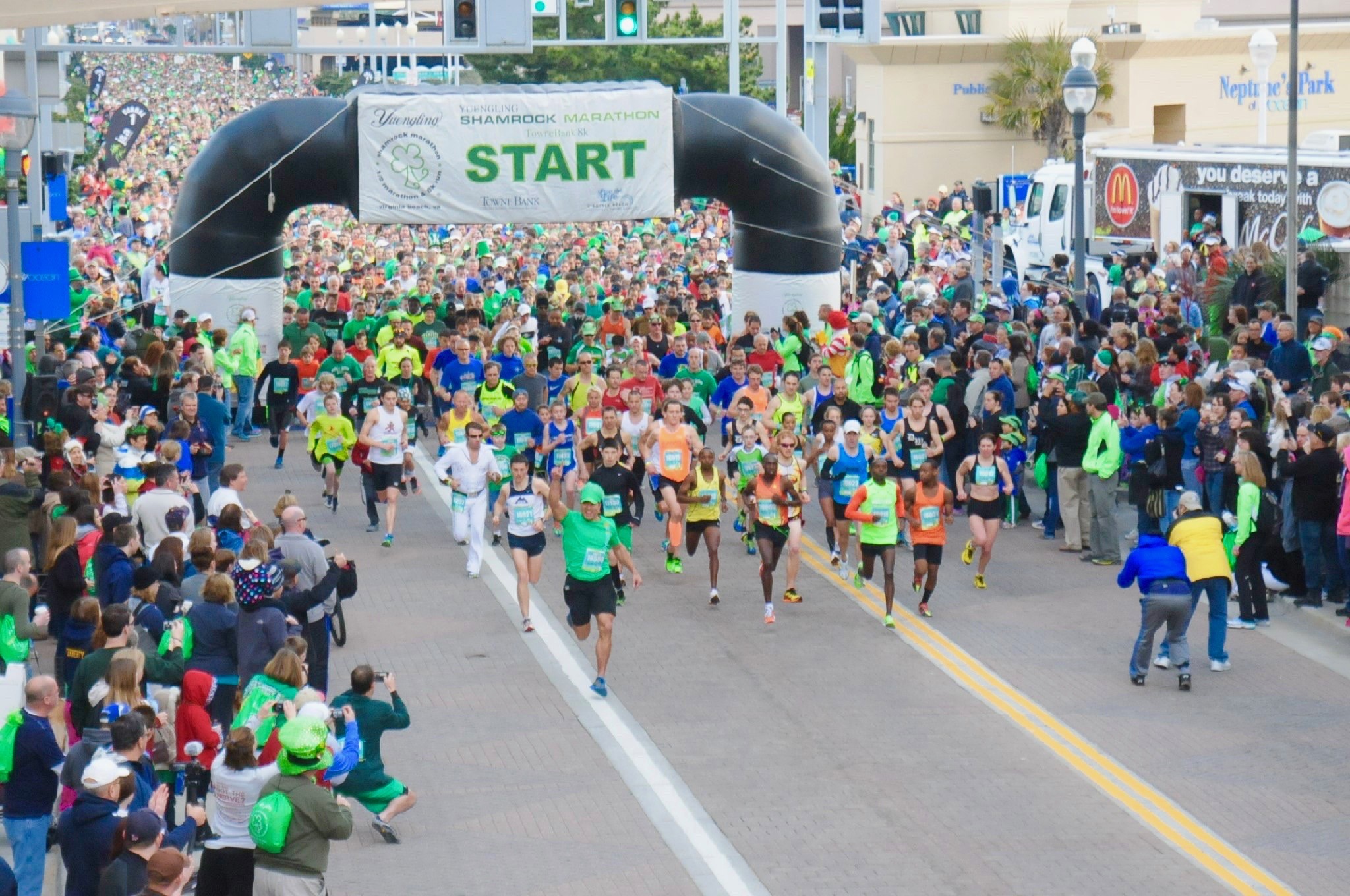
“Meb’s passion for the sport of running and involvement with youth fitness makes him a perfect fit for the Yuengling Shamrock Marathon Weekend,” said Jerry Frostick, co-owner of J&A Racing. “He is an inspiration to runners of all ages, and we know his presence will bring an added excitement to race weekend for our participants and spectators.”
(12/18/2018) ⚡AMPJordan Hasay is working toward 2020 Olympics after latest injury setback
Even through two significant foot injuries in 2018, Jordan Hasay remains optimistic about her long-term running career and is focused on having a successful year leading up to the 2020 U.S. Olympic Trials.
Hasay captured the attention of the running world when she finished third at the Boston Marathon in April 2017. Jordan shattered the record for an American woman in her marathon debut by nearly three minutes.
Six months later, Hasay cemented her status among the world’s elite marathon runners with a third-place finish at the Chicago Marathon. She clocked 2:20:57, the second-fastest marathon time ever recorded by an American woman.
Hasay, an 18-time All-American at the University of Oregon, had her sights set on breaking Deena Kastor’s American record this year when she suffered two separate fractures to the bone in her left heel.
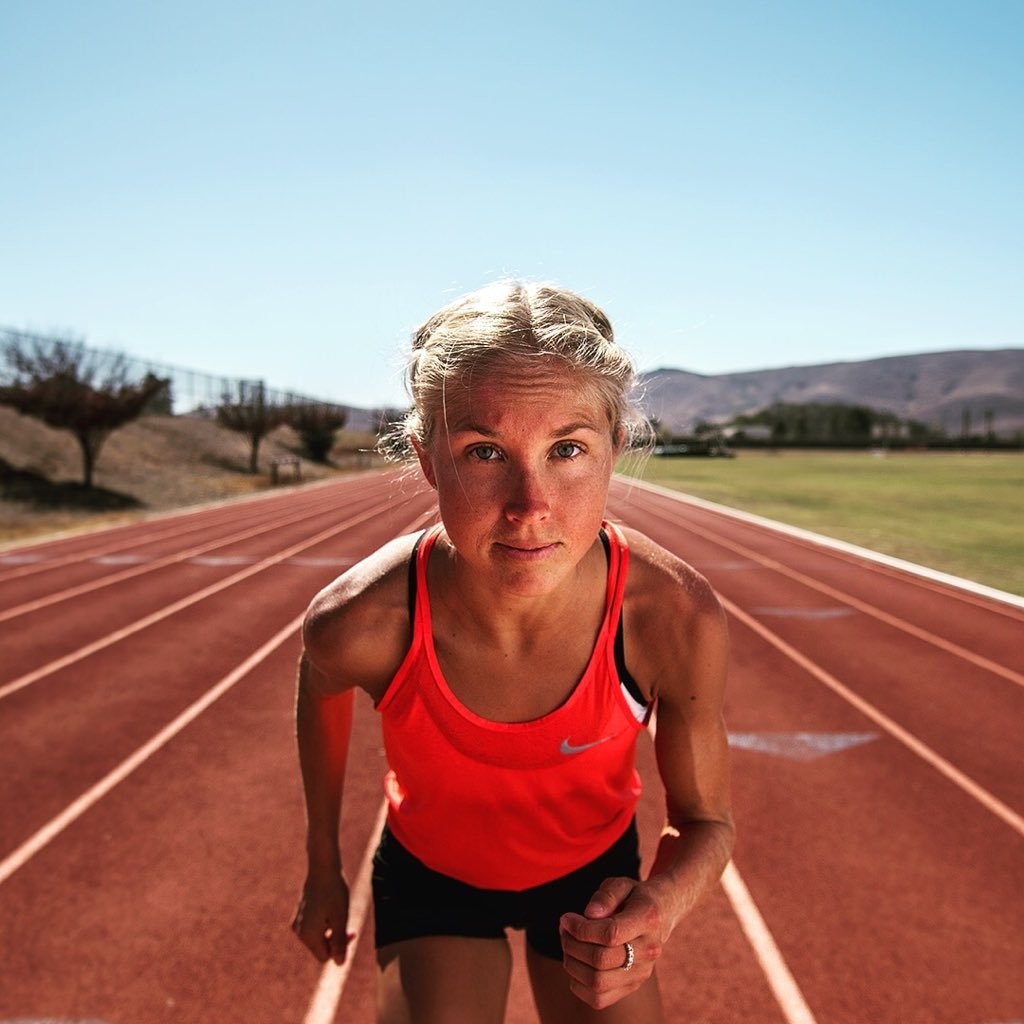
In April, Hasay withdrew from the Boston Marathon the day before the race after an MRI revealed the significance of the initial injury.
Hasay said she was encouraged the first injury healed so well, and she expects to make a full recovery from the most recent setback.
She’s thankful to be able to return the Central Coast and spend time with family while she rests and recovers. Sacrificing eight weeks of running is a concession Hasay is ready to make for what she hopes will be a long career ahead.
“You’ve got to find things that can make you smile each day when you’re out injured like that, because you’re not out there doing what you love the most,” Hasay said.
“I see it as sort of the beginning of my marathon career, and hopefully we’ll figure it out so I don’t have these sort of injuries again.”
(12/18/2018) ⚡AMPSarah Sellers has confirmed she will be running the 2019 Boston Marathon
In April, Sarah Sellers started the Boston Marathon with the elite female runners — it was just her second career marathon — and posted a surprising second-place finish.
At the 2019 race, she will return as part of the John Hancock US Elite Team. Sellers’s appearance was announced Tuesday along with the rest of the top American runners John Hancock, the race’s primary sponsor, will bring to Boston as part of its elite runner program.
Sellers will join Desiree Linden, whose intention to return to defend her victory was previously announced, and 2017 third-place finisher Jordan Hasay as the top American women in the field for the 2019 Boston Marathon on April 15. Sarah Hall, the 2017 US National Marathon champion, is also part of the team.

Flash Back: Sellers crossed the finish line in second place at the prestigious 26.2-mile race in rain-soaked conditions as a virtual unknown. Few online road-race results existed for Sellers, and she was not listed among the elite field. In the wet and windy conditions, Sellers wore a nondescript outfit, with no visible sponsors, and simply clicked the timer on her watch after crossing the finish line.
Her time of 2 hours 44 minutes 4 seconds left her in second place, and she was among seven American women in the top 10. Desiree Linden was the first American woman to win the race since 1985, a historic finish in a race full of surprises.
(12/18/2018) ⚡AMPMoroccans won the world’s longest desert Al Marmoom ultra marathon in the men’s division
El Morabity finished the world’s longest desert Al Marmoom ultra marathon of 270 kilometers in under 32 hours (31:17:29), ahead of French runner Muriel Robert and Iranian runner Akbar Najdi Niryan.
In the women’s category, Moroccan Aziza Raji achieved finished second (40:03:20) behind American runner Magdalena Boulet (37:27:59), while Russian Oskana Riyapova finished third (42:17:43).
The sporting event brought together runners from 35 countries who specialize in endurance races.

The victory comes a week after Rachid El Morabity and his brother Mohammed scored Morocco a gold medal during the Oman Desert Marathon. The brothers won first and second places, respectively.
(12/18/2018) ⚡AMPKenya’s Mary Keitany was voted the 2018 New York Road Runners Pro Performer of the Year
Four-time TCS New York City Marathon champion garners public vote after recording second-fastest time in event history.
Mary Keitany was voted the 2018 New York Road Runners Pro Performer of the Year by the public after recording the second-fastest time in New York City Marathon history en route to her fourth title, and winning her third NYRR New York Mini 10K.
The NYRR Pro Performer of the Year award recognizes the top athlete for his or her outstanding achievements at NYRR races over the entire year.
“It’s a great honor to win the NYRR Pro Performer of the Year award,” Keitany said. “This one means a lot because it is the fans who choose. I was pleased to win the TCS New York City Marathon and the NYRR New York Mini 10K in 2018, and I look forward to continuing my success in NYC in the future.”
Keitany, 36, won her fourth TCS New York City Marathon title in November, easily out-pacing the field to finish in 2:22:49, just 17 seconds off the course record.
Her second-half split was faster than the U.S. half marathon record of 1:07:25, and she now has the second-most New York City Marathon victories in history in the women’s open division after Grete Waitz.
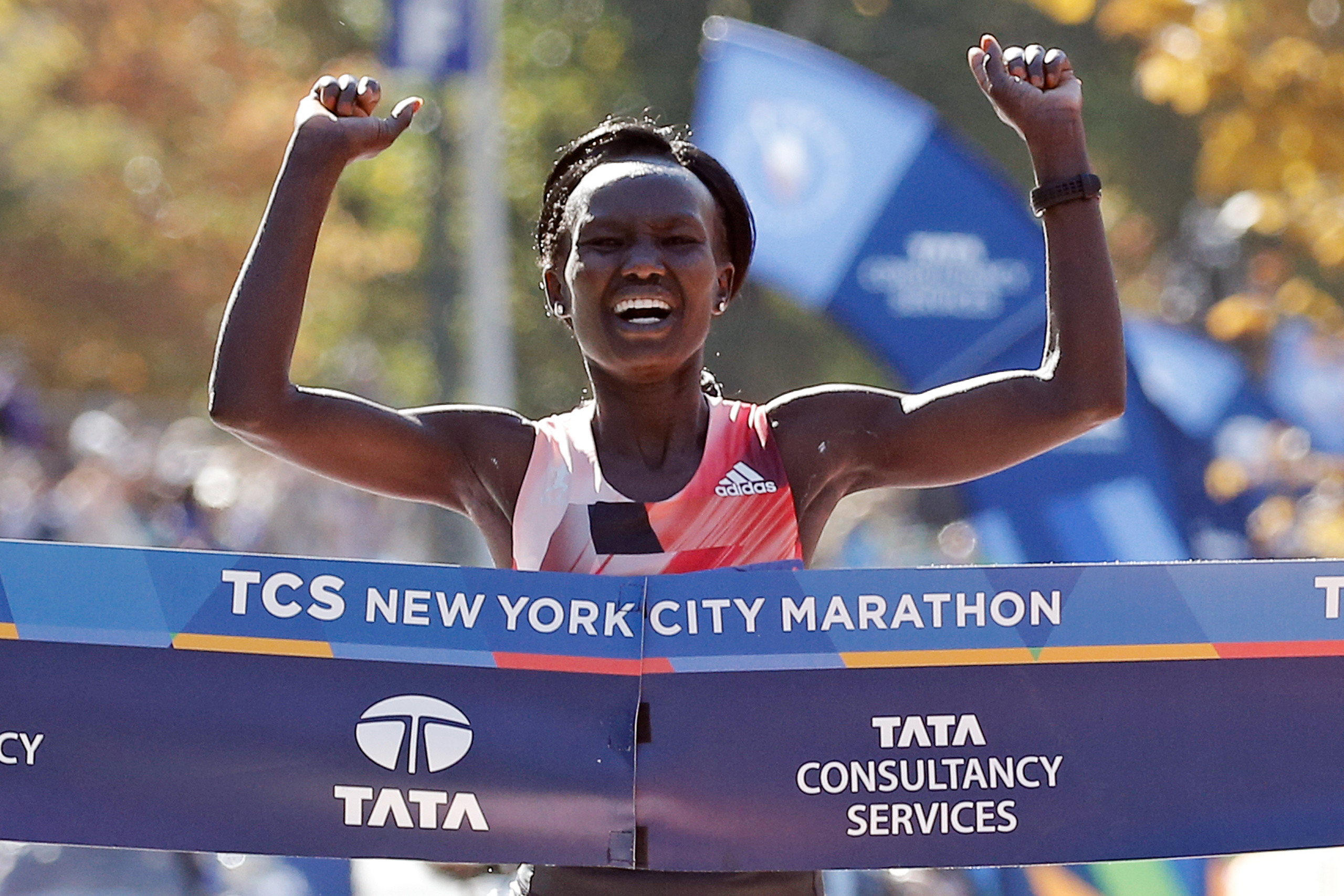
Earlier in the year, Keitany won her third NYRR New York Mini 10K in a time of 30:59, the fifth-fastest time in the event’s 47-year history.
"By winning her 4th TCS New York City Marathon and third NYRR New York Mini 10K this year, Mary Keitany put on a show for runners and viewers around the world with her amazing performances on the roads in 2018," said Michael Capiraso, president and CEO of New York Road Runners.
"Mary is like to New York Road Runners, and we are extremely grateful to have one of the greatest marathoners of all-time be such an inspiration to our running community here in New York."
(12/17/2018) ⚡AMPThe Shenzhen International Marathon course record was broken on Sunday
The first runner to cross the finish line was Edwin Kipngetich Koech from Kenya, who finished the marathon in 2:09:44. Koech took home a prize of US$20,000.
The runner-up prize went to an Ethiopian contestant, Bekele Muluneh Metaferia, who was only 56 seconds faster than the second runner-up, Samuel Ndungu Wanjiku, also from Kenya. Metaferia was awarded US$15,000, while Wanjiku received US$10,000.
The first woman to cross the finish line was Mulu Seboka Seyfu from Ethiopia. She finished in a time of 2:27:12, according to the organizer.

Kenyan runner Flomena Chepchirchir Chumba and Ethiopian runner Ashu Kasim Rabo finished in second and third place, respectively.
The first Chinese contestant to finish the full-length marathon was a 28-year-old man named Zhang Zhenlong from Inner Mongolia. It took him 2 hours 20 minutes and 43 seconds to finish the race, approximately 11 minutes longer than the Kenyan winner.
“I’m very satisfied with the result because it’s my best result in recent years. Today’s weather is very comfortable and the drizzle during the race also helped me maintain my strength,” Zhang told the Shenzhen Daily.
(12/17/2018) ⚡AMPVlad Ixel traded his alcohol and cigarette addiction for an addiction to trail running
Vlad Ixel decided trail running was a healthier addiction than cigarettes and alcohol.
Ixel, who came second in the North Face 50 behind Chinese phenomenon Yan Longfei on Saturday, decided to quit alcohol, cigarettes and meat two days before his 25th birthday. Later that week, he decided to run his first-ever marathon.
“When I was 24, the only running I would ever do was to the liquor store before it closed to make sure I had enough bottles,” said the 31-year-old Ukrainian, who has been based in Hong Kong for the past four years. “I couldn’t sleep without my six beers.”
”The high I got from crossing the finish line was far greater than anything I felt on a night out with drugs or alcohol, and with my addictive personality it just began to snowball. Since then, I’ve literally never stopped running,” Ixel said.
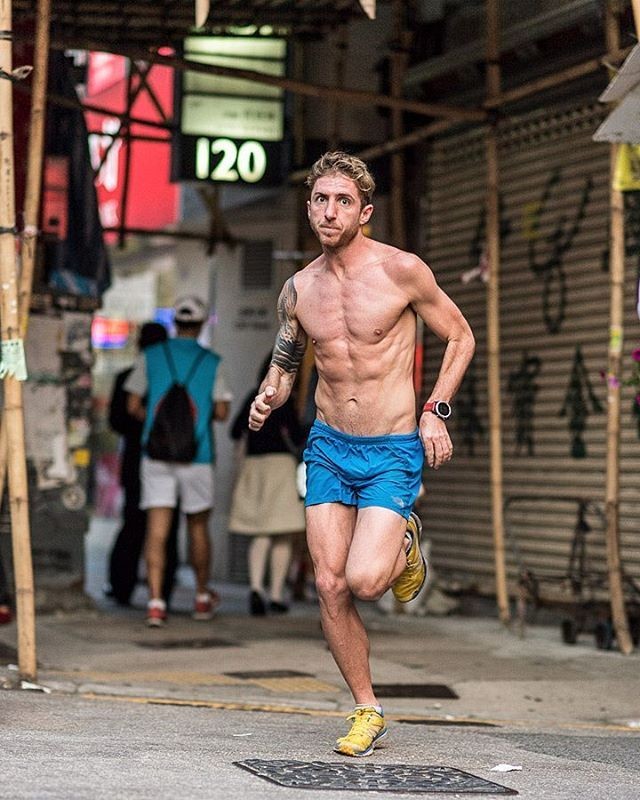
He’s not exaggerating. Ixel quickly became one of Hong Kong’s most active elite runners. He is sponsored by North Face and runs roughly 30-35 ultra-marathons a year.
In addition, Ixel has quickly developed a strong presence as an online running coach and motivator, having accrued over 20,000 Instagram followers.
Ixel moved to Hong Kong from Perth, Australia for his running career.
“When I was living in Perth there was maybe only two or three races a year. So when I started racing in Asia I met some friends who told me I should come down to Hong Kong for race season. I ran the 2013 Northface 100 and I thought ‘Wow this place is awesome, this is where I need to be.’
(12/17/2018) ⚡AMPEd Whitlock’s world 70 plus marathon record has been broken by Gene Dykes
Many thought Ed Whitlock’s 2:54:48 Marathon world Record for 70 plus was untouchable until Gene Dykes came on the scene this year.
The 70-year-old Gene Dykes, a retired computer programmer clocked 2:54:23 December 15 in Jacksonville, Florida. This breaks the world record for 70 plus by 25 seconds.
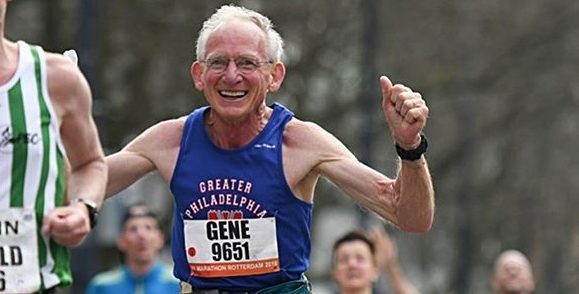
He was over a hour ahead of second place in his division and Gene ran the fastest time for men 55 plus. (Click on the link to read more about Gene in our exclusive two part profile done a couple of months back.)
Gene has only been racing serious a few years now. He had gone under three hours twice already this year and felt he was ready to break the world record by year end.
He decided to hire a coach recently and ever since then Gene has been winning and setting records from 1500m to 200 miles.
Unlike a lot of marathoners he also believes in running races up to 200 miles. Another key element he says is to make sure his weight is just right. It is hard because he loves to eat.
(12/17/2018) ⚡AMPKenya’s Edwin Kipngetich Koech produced the Shenzhen Marathon’s first ever sub 2:10
The 26-year-old Koech enjoyed a comfortable lead after 25 kilometers and went on to win in 2:09:44. This is his second sub-2:10 run behind his personal best of 2:07:13 achieved in Milan last April. Koech took home a prize of US$20,000.
A leading group of more than 10 runners paced the race in the early stages. Only five men were left when the leaders passed the 20-kilometer mark, and that pack was trimmed to just three runners, Koech his compatriot Samuel Ndungu and Bekele Muluneh of Ethiopia, by the time they hit 25 kilometers in 1:17:09.
After covering the five-kilometer section between 25 and 30 kilometers in 14:41, Koech broke and built up a lead of more than half a minute and never looked back.
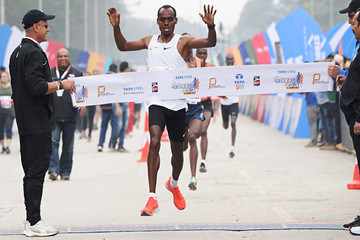
Bekele Muluneh improved his PR by 40 seconds to finish second in 2:11:19. Ndungu, a two-time Lake Biwa marathon winner with a PR of 2:07:04, settled for third place in 2:12:15.
Pre-race favourite Seboka lived up to expectations in the women’s race. She won in 2:27:12 to improve on her runner-up finish from last year while taking down the course record of 2:33:25 set by last year’s winner Viktoria Poliudina of Kyrgyzstan.
Seboka broke away from Kenyan veteran Flomena Chepchirchir near the halfway mark and when she passed the 25-kilometer water stations in 1:26:27, the margin had been widened to some 10 seconds.
The 34-year-old Ethiopian kept extending her lead and claimed the convincing win with an advantage of nearly five minutes.
It is Seboka’s second title in China this year as she also won the Dalian International Marathon in 2:28:59 seven month ago. The Ethiopian has finished within 2:30 in each of her three outings in 2018 with a season’s best of 2:25:01 registered in Seoul.
The 37-year-old Chepchirchir, who finished 10th in Shenzhen last year, took second place in 2:32:05, which was her best mark since achieving her PR of 2:23:00 back in 2013. Ashu Kasim of Ethiopia was a remote third-place finisher with a clocking of 2:38:35.
(12/17/2018) ⚡AMPHe hopes to be the only man on earth to run a sub three hour marathon in six consecutive decades - Marathon Man Gary Allen introduction
Gary Allen is going to sharing his thoughts and knowledge here in MBR’s Running News Daily under the banner “Marathon Man Gary Allen.”
In his first column I sent him some questions so we all could get a flavor of what makes this incredibly creative and talented man tick. I know I am looking forward to his writings here and I hope you are too!
So Gary, how did you discover running?
”I wanted to be a hockey player,” wrote Gary “but there weren’t enough kids on the small Maine Island I am from for a team. Then in 1972 I saw a skinny guy named Frank Shorter run into a stadium in Munich and I was like cool, you can win a gold medal just for running.”
How important is running to you?
“I have been involved with running for my entire life so assigning importance to who and what I am is like trying to describe how big the universe is to an ant. It is impossible for me to adequately portray how all encompassing running is to me as a part of my life,” says Gary.
Does being an accomplished runner help you put on first class events?
“Absolutely! The races I direct are direct reflections of what and how I expect races to be run. I would never ask anyone to do something I haven’t done so I merely apply my expectations and my creativity to every race I help to organize.”
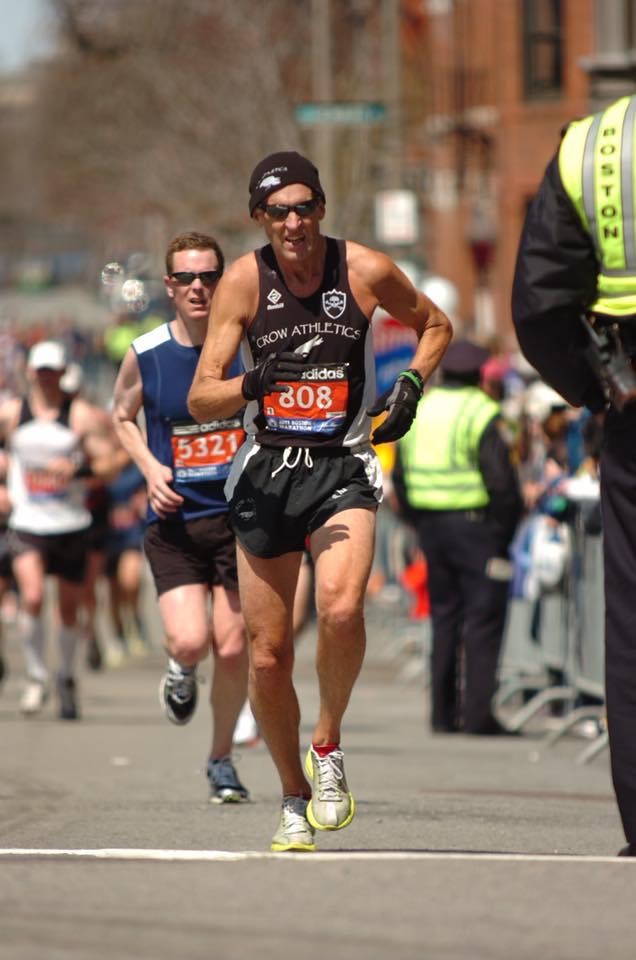
What one race you have run stands out as number one?
“Ahhhhh I can’t narrow it down to one race. However, Boston is always high on every list. I have one more to run to make a quarter century of unicorn chasing. The Burning Man ultra (photo) is a race I love beyond words. It helped change my thinking about how races run.
“A combination of an other worldly environment and no entry fee helped to expand my thinking. NYC (19 finishes) is where I was inspired to become a race director after watching Fred Lebow in action in 1980. It is reality true, if you can make it there you can make it anywhere!
Tell us about your coaching?
“I have coached at the HS level and coached many individuals over the years but my current team is at Mount Desert Elementary School where I have been the XC coach for the past 12 years.
“My philosophy is pretty simple, make running fun and kids will want to run more and the more they run the better they get at running which is of course even more fun for them!
“One of of our key workouts is called, zombie tag. We run in the surrounding Maine woods and trails and I assign a few zombies and the rest of the team tries to run away and not get caught.
“I also love to hide pizzas in the woods and have the kids run around and find them! Apparently my methods work cause in the past decade plus we have won almost every meet we’ve run!”
What are your personal goals as a runner?
“As a race director: I want to leave our sport better than I found it.
”As a coach: I want to inspire the next generations of runners to think about running for their entire lives. Rather they run or not matters little, but I want them to always remember and to love running knowing some will go on and be involved in our sport as competitors, coaches or even as race directors.
”As a competitor: I have accomplished pretty much every goal I’ve set for myself. Of late I struggle some with the naturally selfish nature of being a long distance runner.
“The single dimensional, ‘I’m training for,’ ‘Look at me’ has become less and less appealing to me over the years.
“As you know one of my proudest achievements is joining the five decades Sub 3 hour marathon club. At this point nobody on earth has run a sub 3 hr marathon in six consecutive decades so maybe it’ll give it a shot in 2020!
“Incidentally Joan Benoit Samuelson is the only other Mainer on the list and the only woman who has done this and I wouldn’t count out Joanie to run a sub 3 for her 6th decade.
Can you give us some background info?
“For Work: Lobsterman, Boat Builder, Carpenter, Yacht captain, Farmer, Auctioneer, Coach, Inspirational speaker.”
”Some Personal Records: Marathon 2:39:10, Half Marathon 1:13:20, 50 miles 6:21.
”My family settled on Great Cranberry Island in the 1670s. I am 12th generation. It’s a small offshore Island off the coast of Maine. It’s probably the most unlikely place to become a runner as the main road is only two miles long. I built my own house by hand from trees growing on my land. I dug my well with a shovel figuring they used to do it that way so why couldn’t I?”
(12/16/2018) ⚡AMPby Bob Anderson
Why is Core Work so important for runners but many of us don’t take the time to do it
While the need for incorporating speedwork and recovery into a running plan may speak for itself, when it comes to understanding the importance of including core work, the answer may be a little less obvious.
But that’s certainly not because it is any less important. Known as the power house of the body, the core impacts every movement and activity of the human structure. In fact, your ability to stand up, sit back, bend over and get out of bed are all driven by your core. You can think of it as the power house of muscle that holds you up and lets everything operate around you.
From the movement and extension of each limb, to the forward propulsion of your body, a strong core is at the foundation, and it grounds together your pelvis, abdominals, hips and back so they can work in sync. Especially when it comes to running.
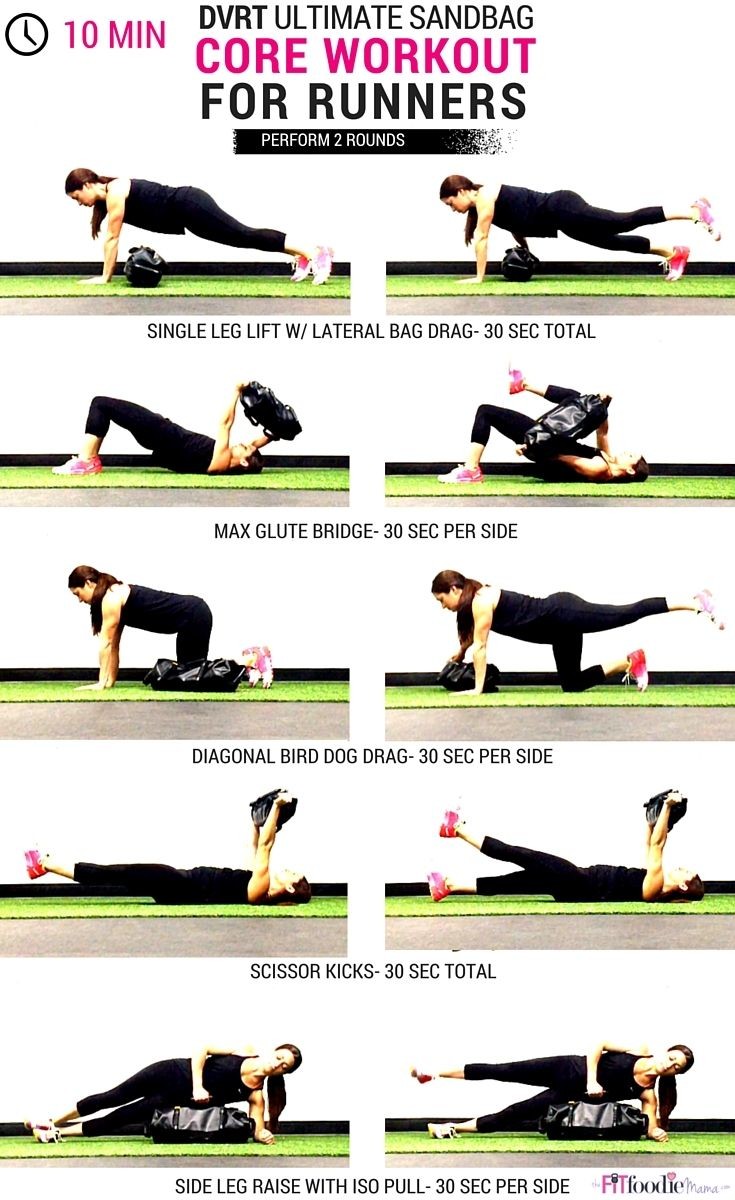
Within the motions of running, when you plant your foot down in front of you and step out into your stride, your body receives a load that is several times your body weight. This energy is transferred through your entire body, allowing you to move forward, pushing off and landing for your next stride.
As that power and energy works its way through your body, reaching your core, a strong core is able to transfer the energy, due to its enhanced stability, instead of losing energy. Energy lost is running slowed down, while a strong core that maintains the stability of your torso and your body is one that can more effectively bring the energy in and use it.
When the core is stable and keeps everything aligned, the energy can be used to then generate increased running energy helping you maintain a stronger speed, proper posture and effective load dispersal that works to prevent injury.
It is important to remember that the core is made up of far more than just your abdominal muscles and includes (to name a few): the back, hip flexors and pelvis.
The abdominal muscles component is actually a selection of several sets of muscles, whereby there are deep running muscles which we can’t see, and then the rectus abdominus on the top, which we typically think of as creating the “six-pack.” Strengthening your core, however, and having it be strong enough to stabilize your body and transfer energy, has nothing to do with a six pack or aesthetics, and instead everything to do with power and transfer of load.
When this load transfer is effective and properly dispersed, not only does your running benefit, but your injury risk decreases, your posture improves and your performance is enhanced as a result.
(12/15/2018) ⚡AMPChinese runner Yan Longfei is having great success from the marathon and beyond
China’s Yan Longfei broke yet another Hong Kong course record at the North Face 50 with a time of four hours, 45 minutes and five seconds, shattering the previous record by more than 40 minutes at Tai Mei Tuk.
It was the third Hong Kong trail running record broken in less than two months for Yan, who smashed the Lantau 70 record back in late October and did the same in the TransNT back in November. And once again, he did so “without running seriously.”
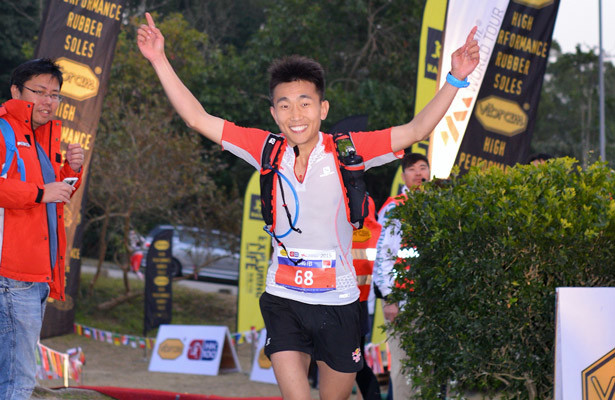
“Yan Longfei is ridiculous, he’s just a phenomenal athlete,” said the North Face-sponsored Vlad Ixel, who finished second with an impressive time of 5:26:55. “I knew that I was racing for second place from the beginning.”
It was the first time running the North Face 50 trail for Yan, who said he enjoyed taking in the scenery and saying hello to hikers.
“I just treat these races as practice,” explained Yan, who elected to run the 50 instead of the 100 because he is running the Shenzhen International Marathon on Sunday. “Hong Kong’s trails are the most beautiful I’ve ever seen. I had done the Lantau and Hong Kong trails before but it was my first time doing this course. I really enjoyed it.”
(12/15/2018) ⚡AMPSqueezing in a Workout After Your Flu Shot Could Make the Vaccine More Effective
Just got your flu shot and wondering if it's safe to push through your usual workout? Your arm might be sore for a couple days, but that's no reason to avoid the gym.
"There is no danger in returning to regular activities after the flu vaccine, including exercise," Carolyn Kaloostian, MD, MPH, a clinical assistant professor of family medicine at the University of Southern California Keck School of Medicine, told POPSUGAR. "In fact, small studies have shown increased antibody development (and thus protection) from the flu vaccine after participating in exercise."

This should come as no surprise, as exercise is known to bolster the immune system. That said, it's probably best to avoid strenuous strength workouts while your arm heals.
"Aggressive activity of the vaccinated area may increase the pain after the vaccine," said Michael Ison, MD, professor of infectious diseases at Northwestern University Feinberg School of Medicine and a practicing physician at Northwestern Medicine. "Aerobic activity won't hurt, but arm weights might be best avoided for the first one or two days after getting the vaccine."
(12/15/2018) ⚡AMPLance Armstrong will run the Austin Marathon for Charity
The Austin Marathon, which will take place on February 19th, 2019, has Lance Armstong on the start list. Armstrong will be a Charity Chaser, and hopes to raise over $1 million in support of the Austin community.
Armstong told race organizers, “I’m honored to be the Charity Chaser and help Austin Gives Miles surpass it’s $1 million goal,” said Armstrong. “My training for the Austin Marathon has begun and I’m ready to amplify the positive effects Austin Gives Miles and its official charities have on our community.”
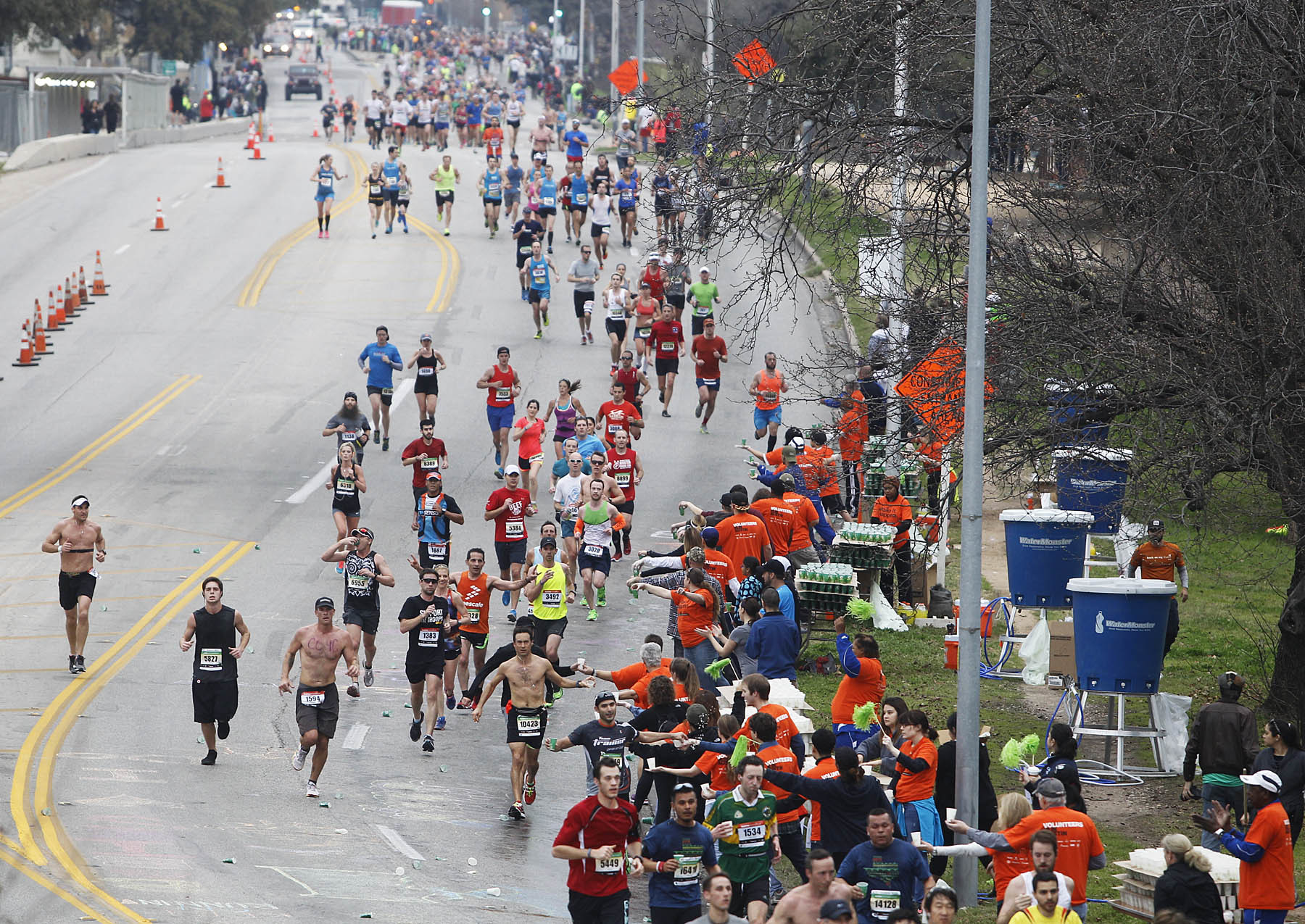
During the 2018 Austin Marathon, Austin Gives Miles donated $670,000 to the Central Texas Community. The 2019 event will be the 28th running of the marathon. Lance Armstrong’s personal best is 2:46:43 clocked at the New York City Marathon.
(12/15/2018) ⚡AMP

